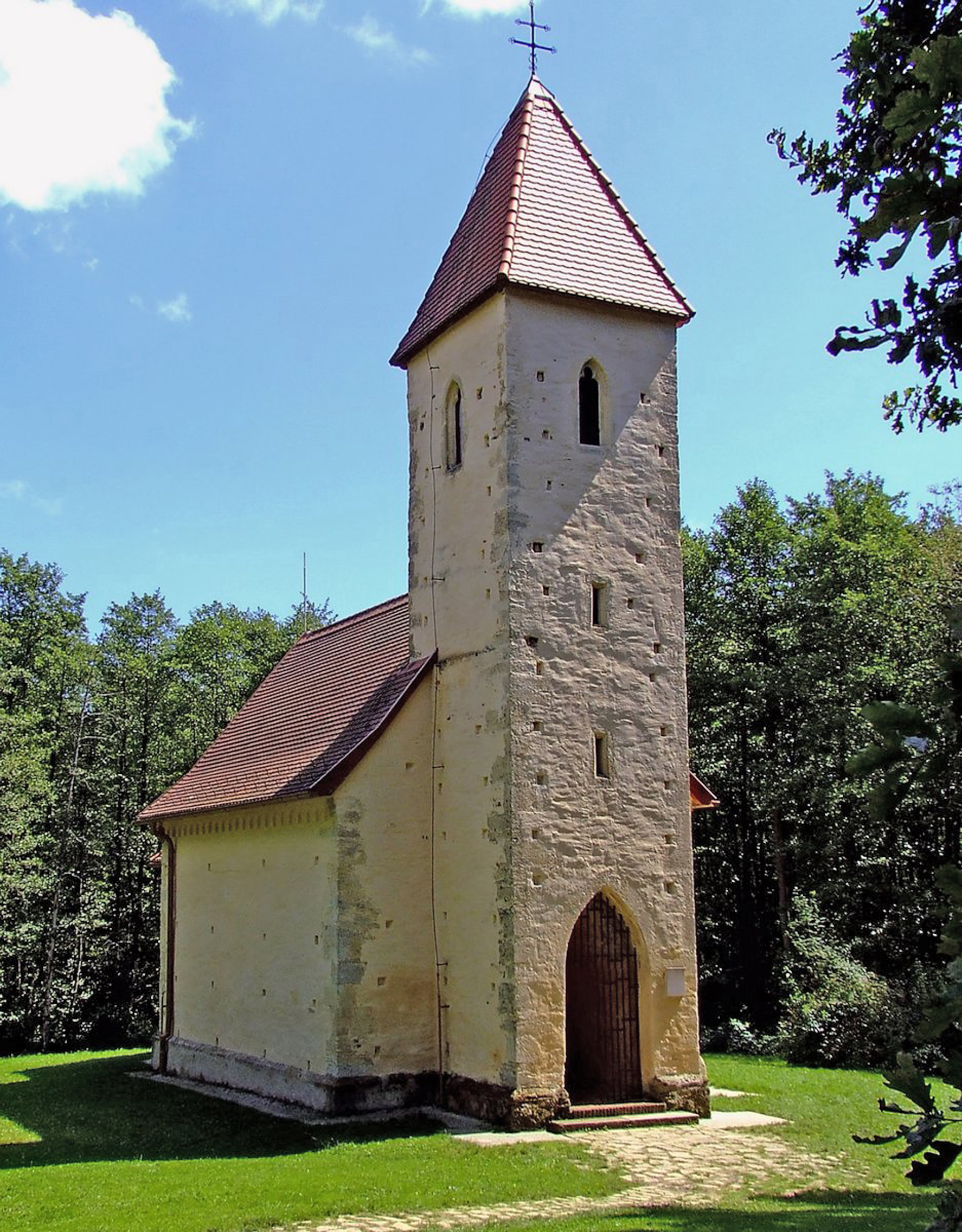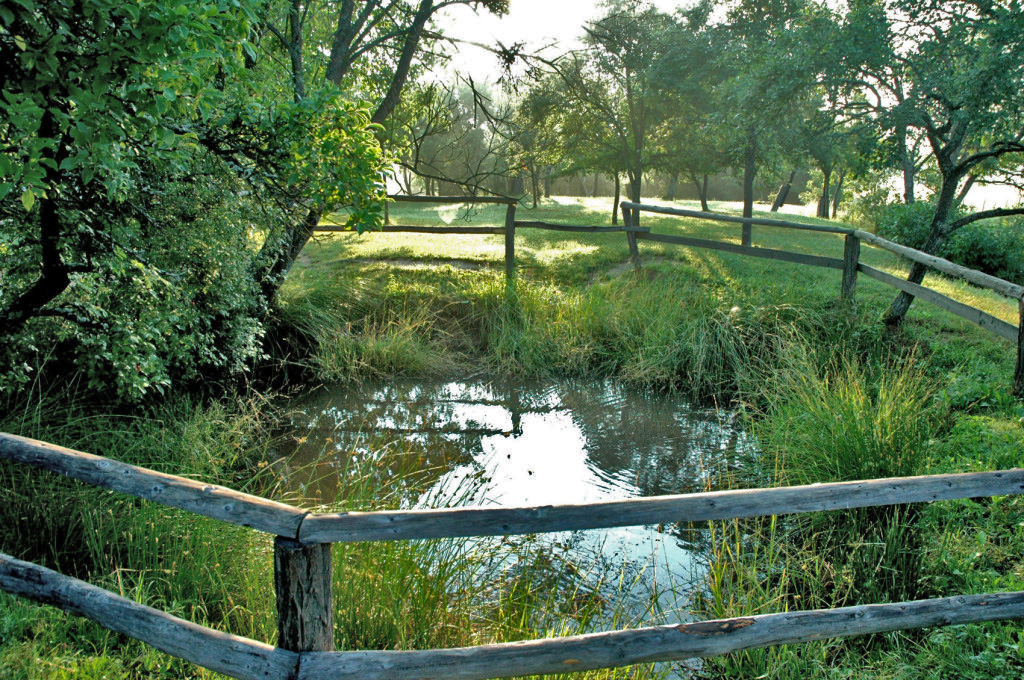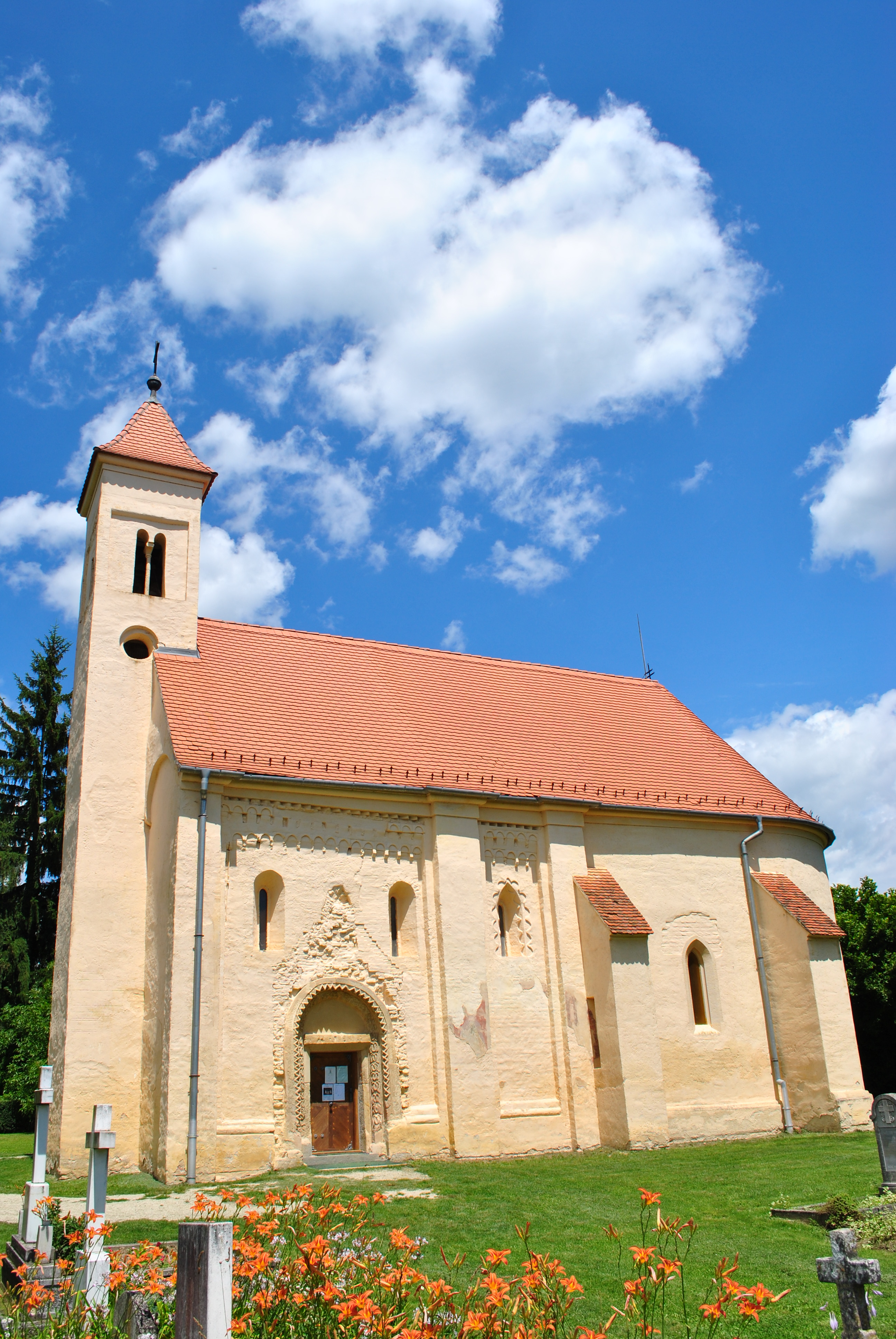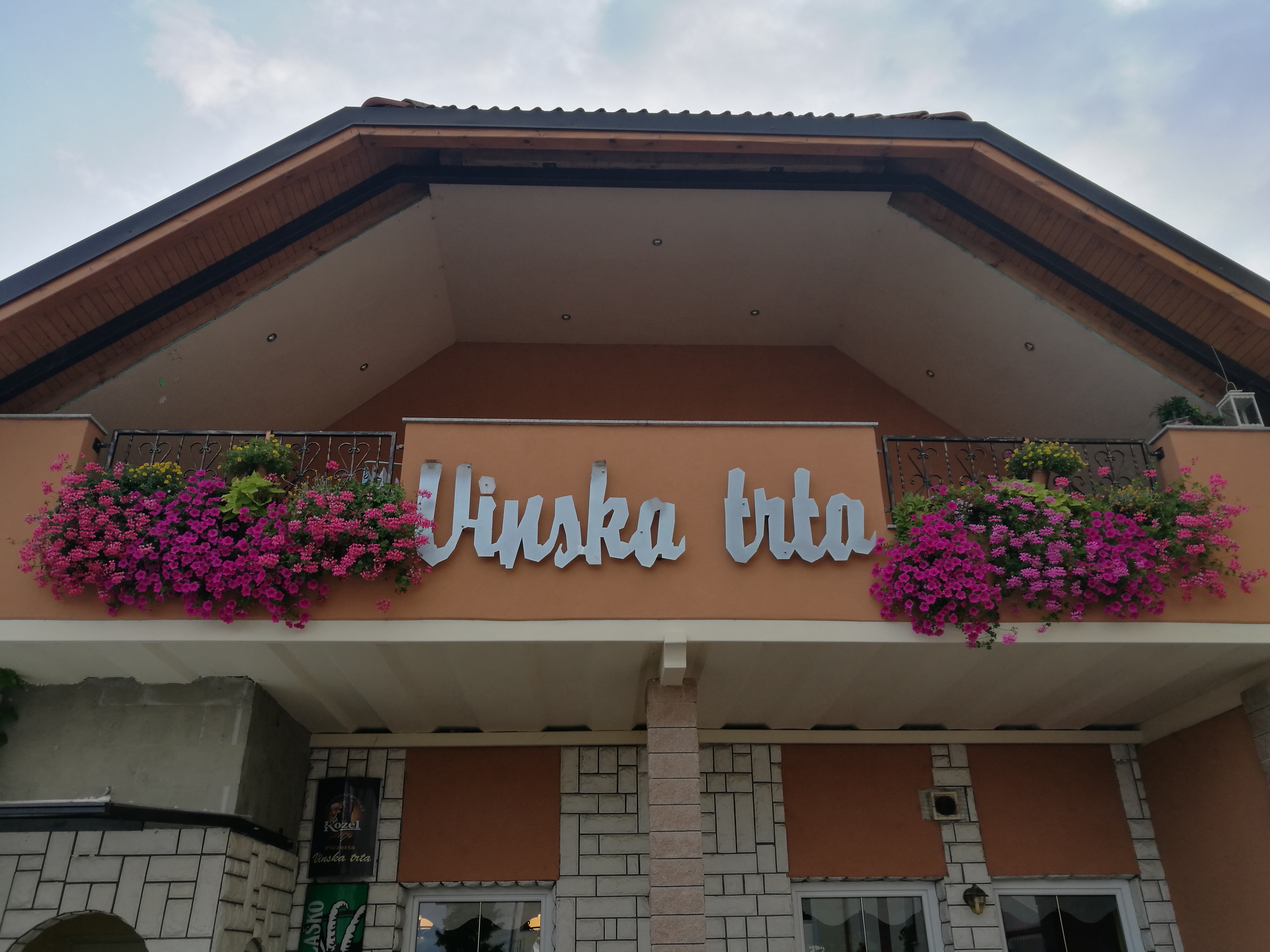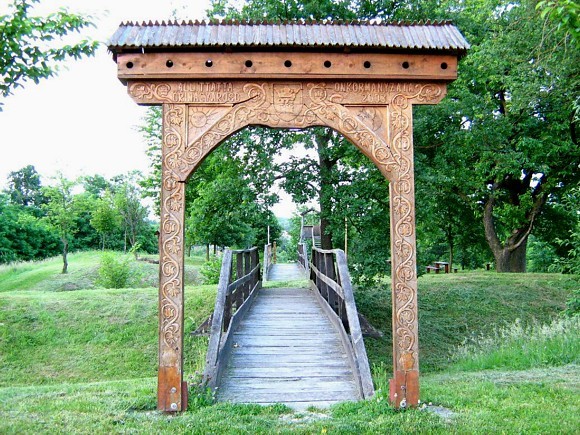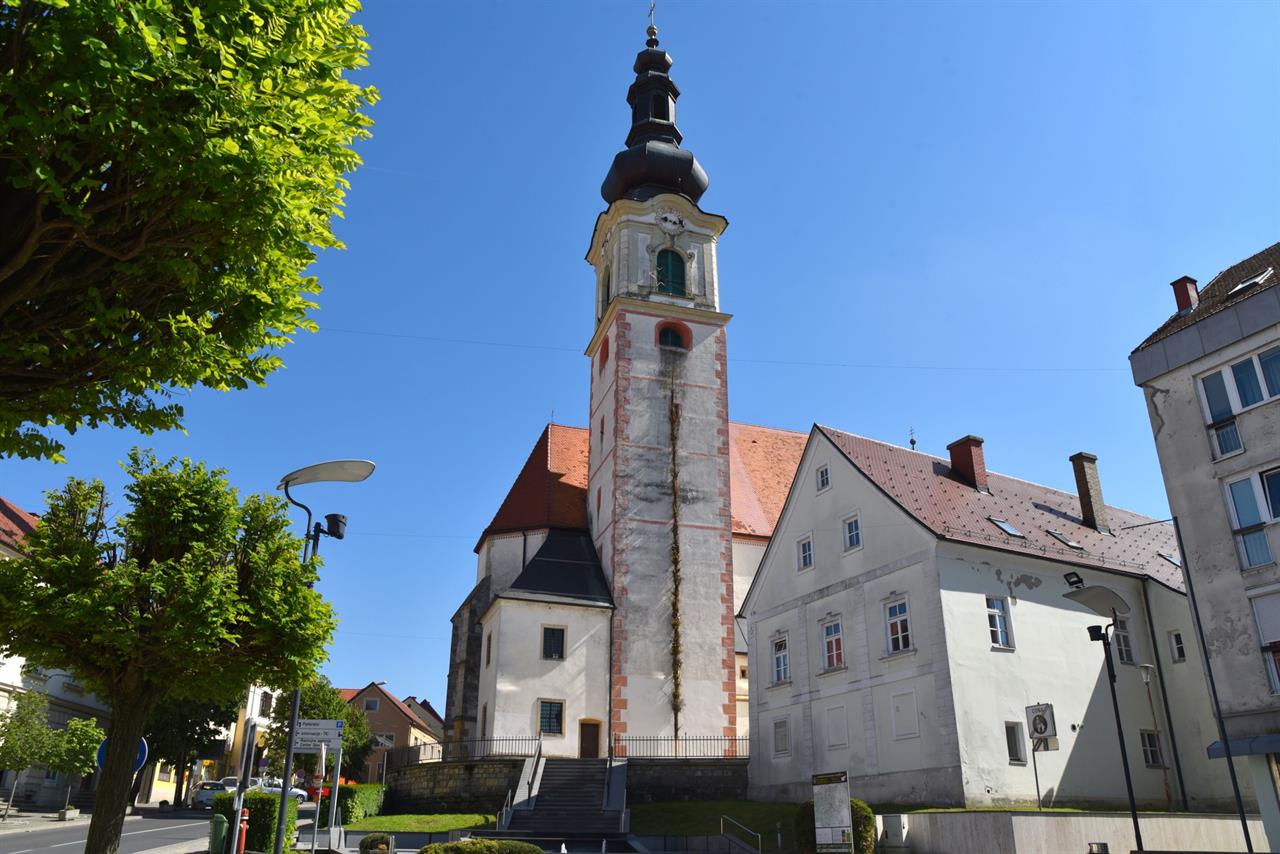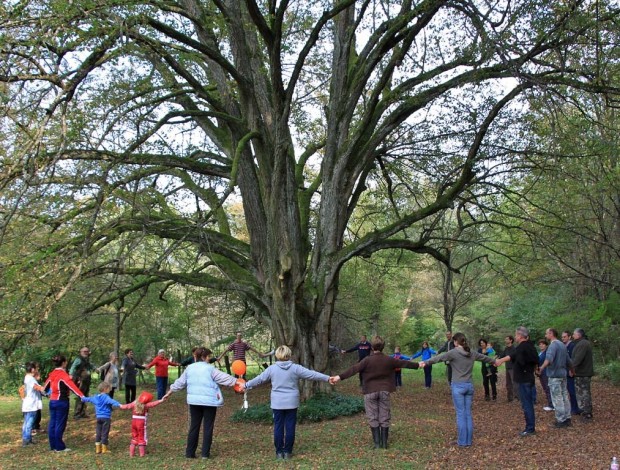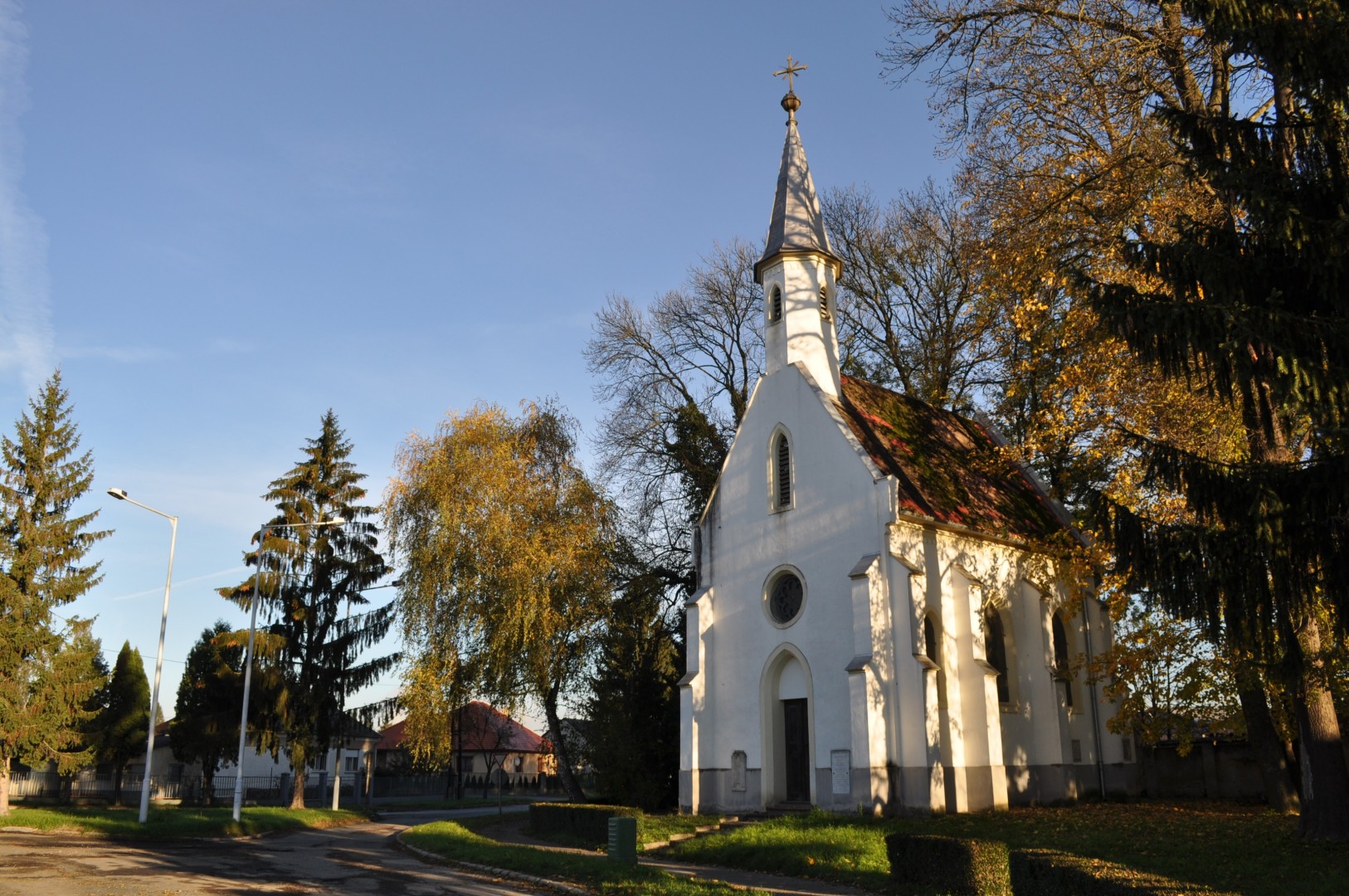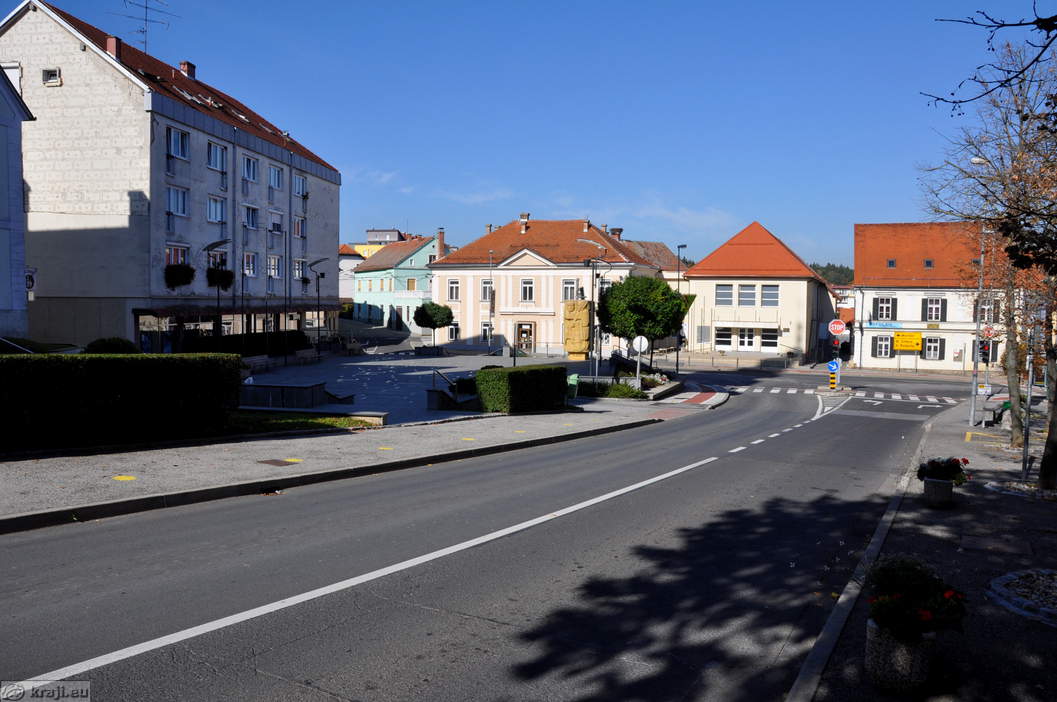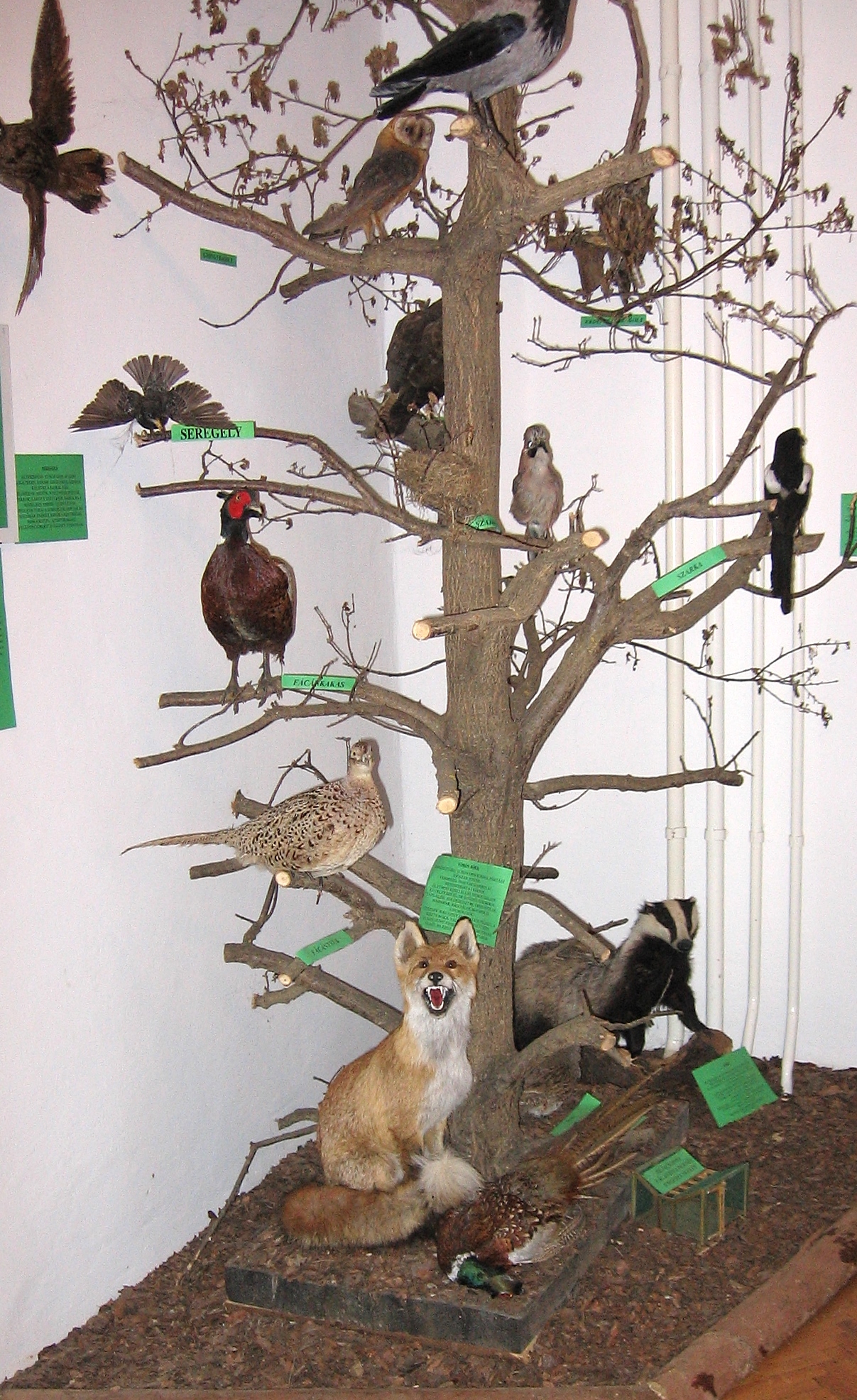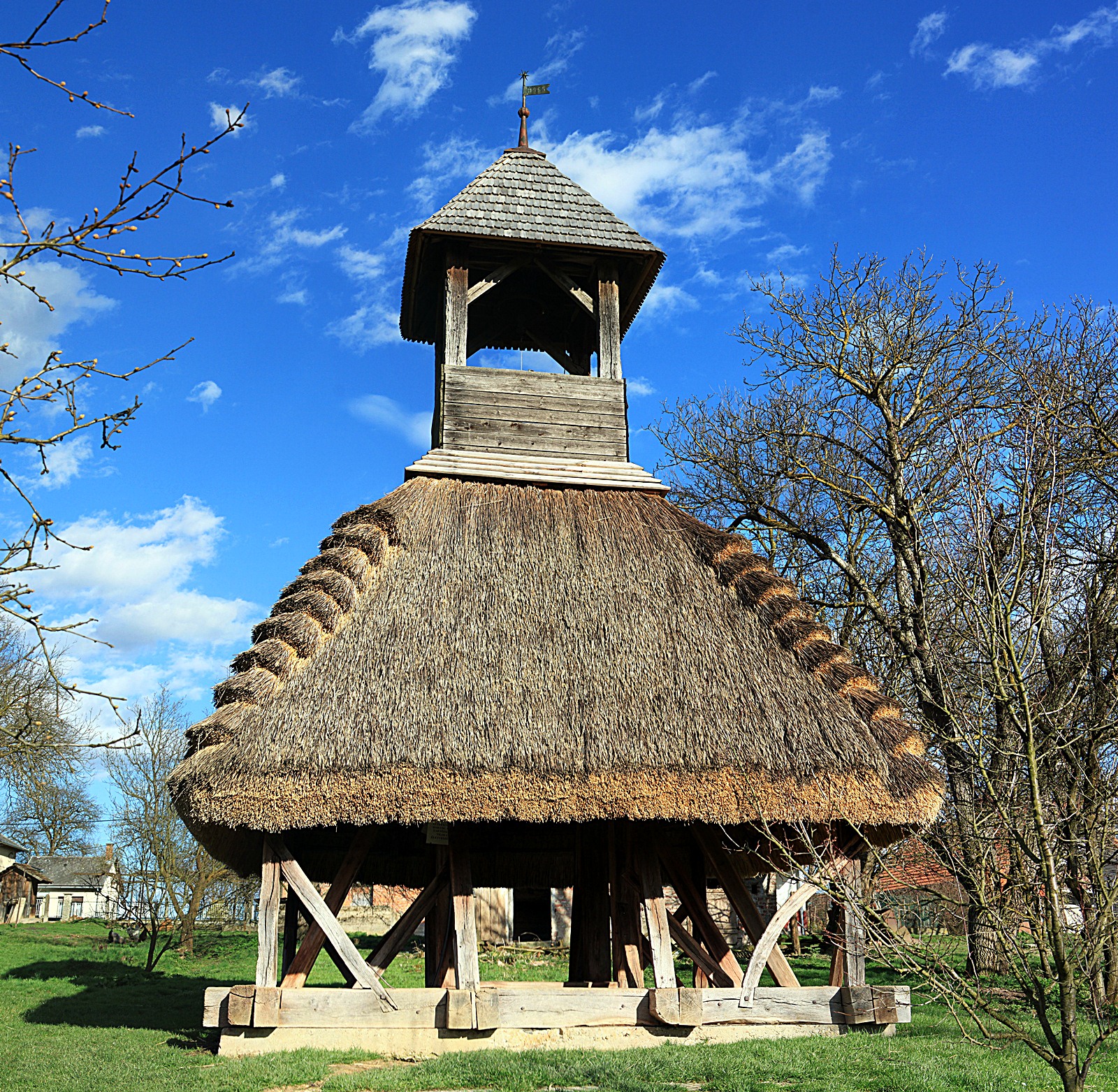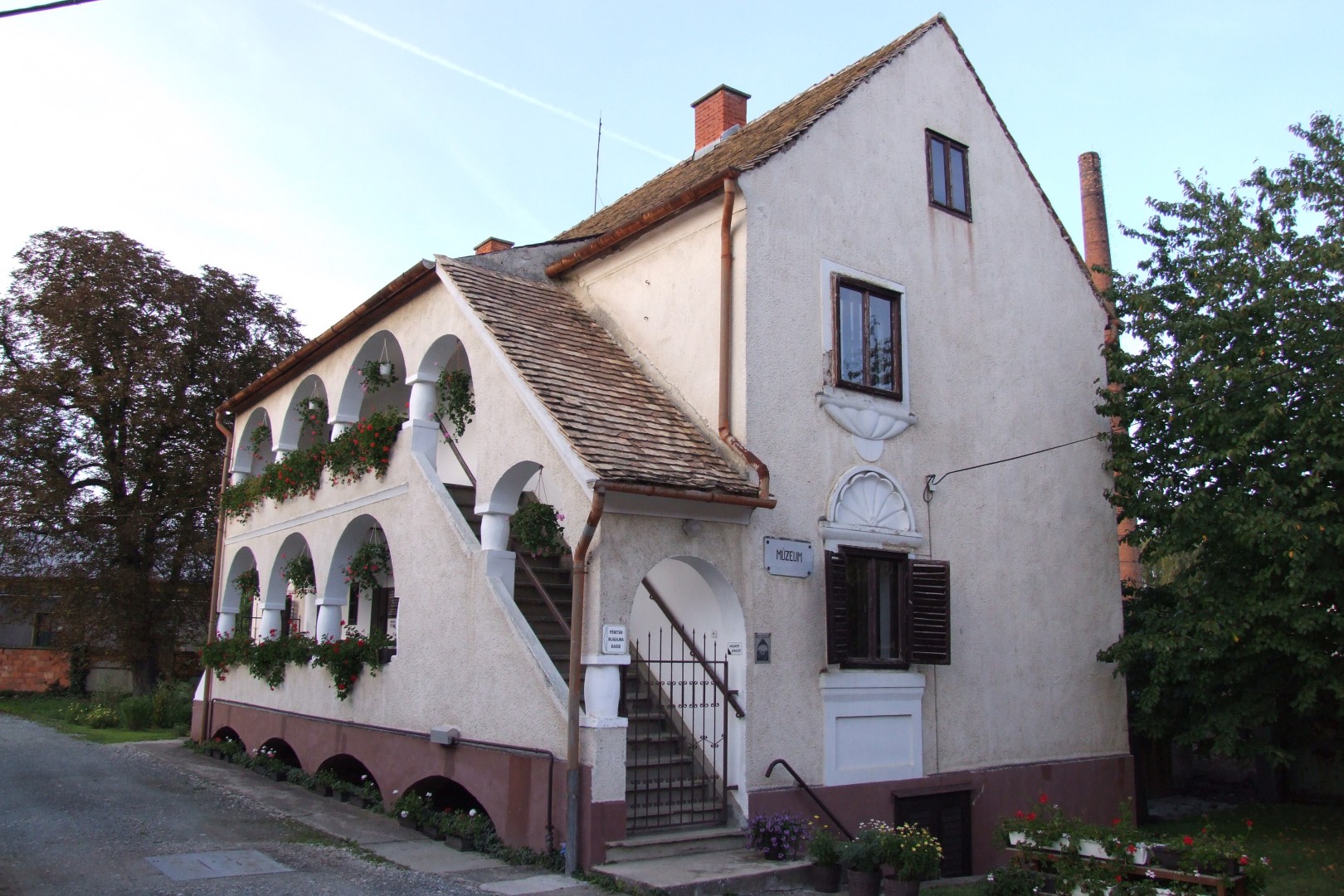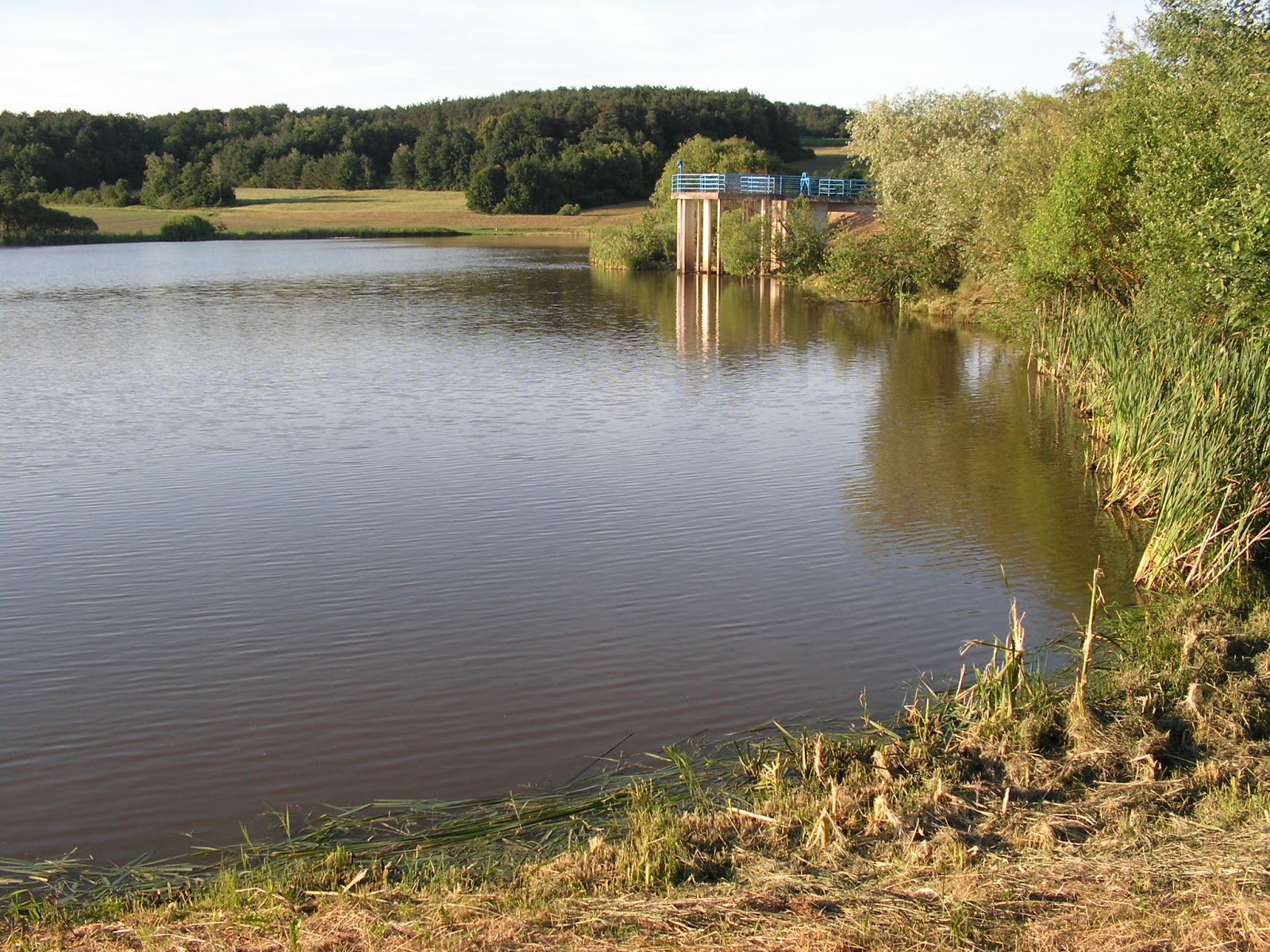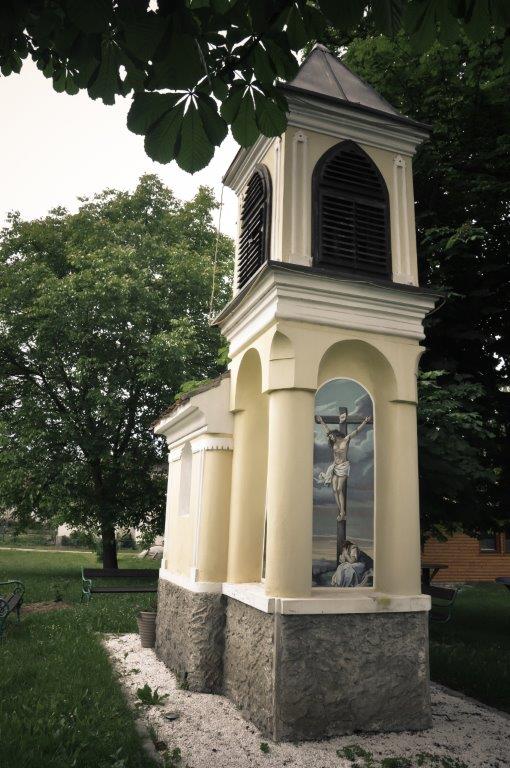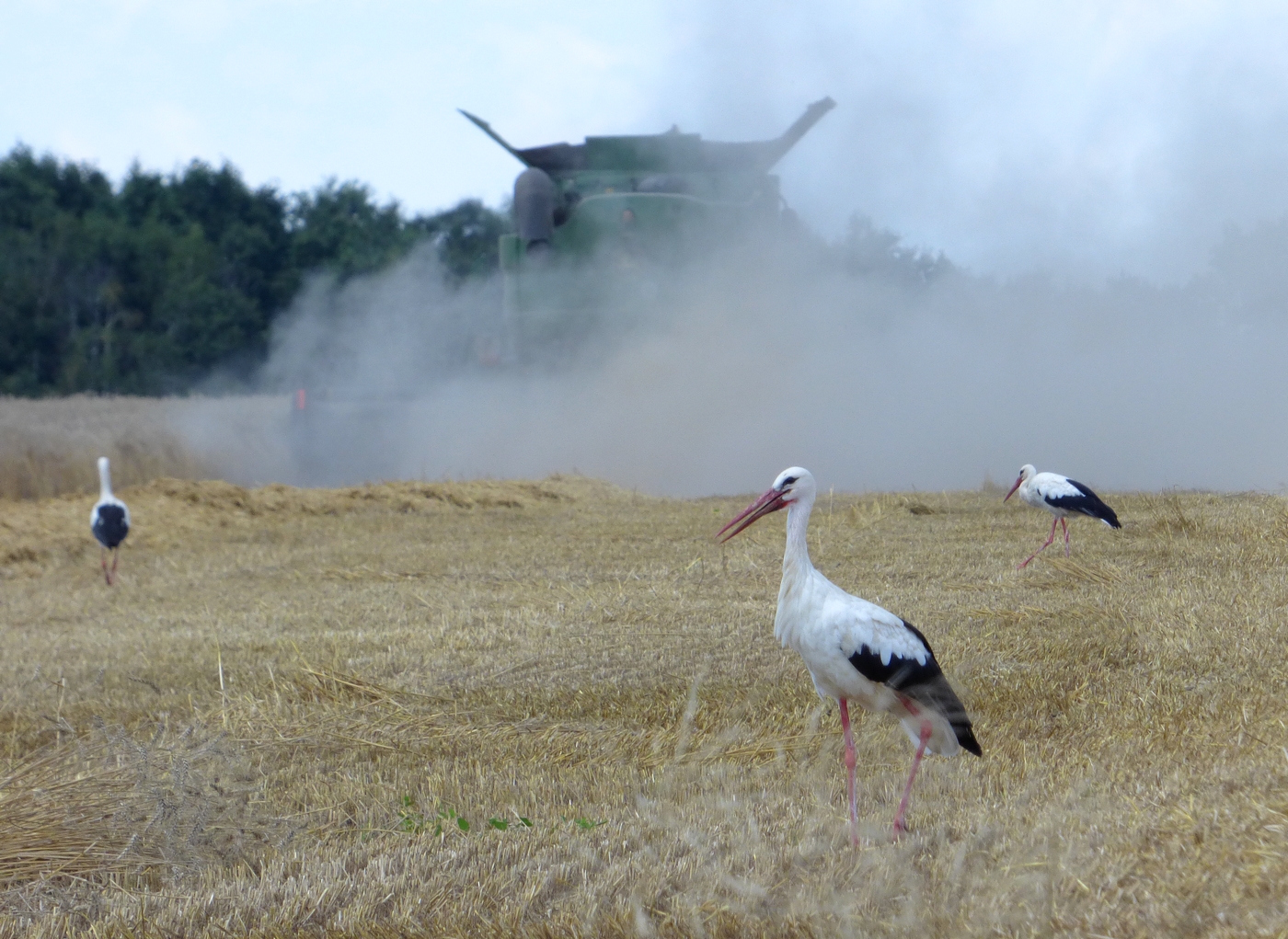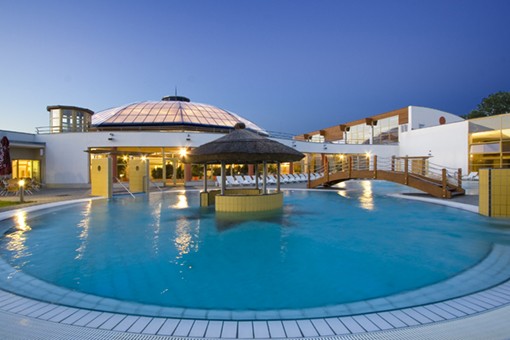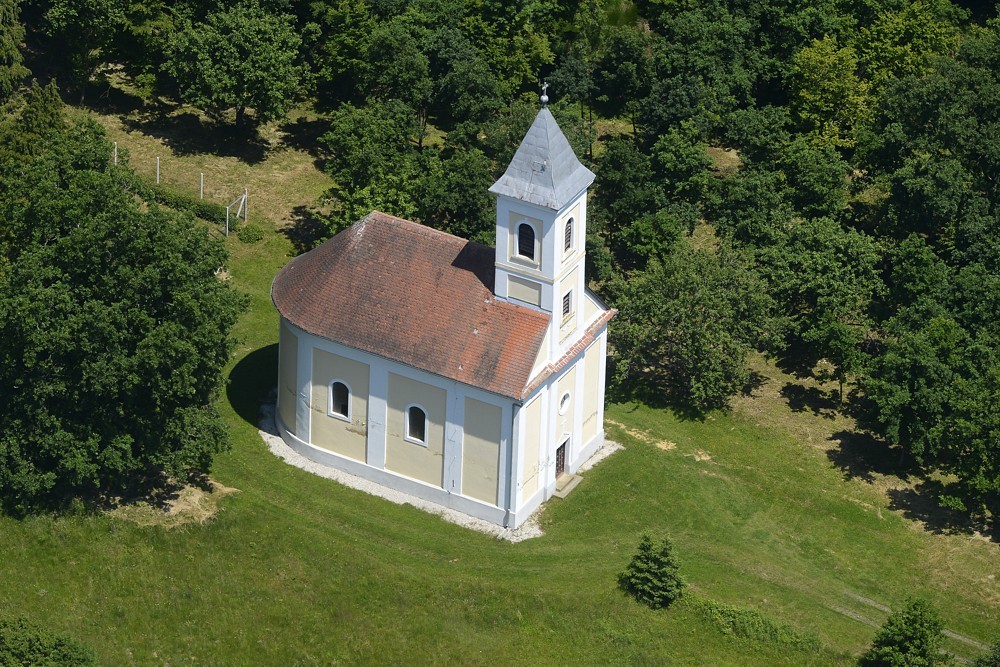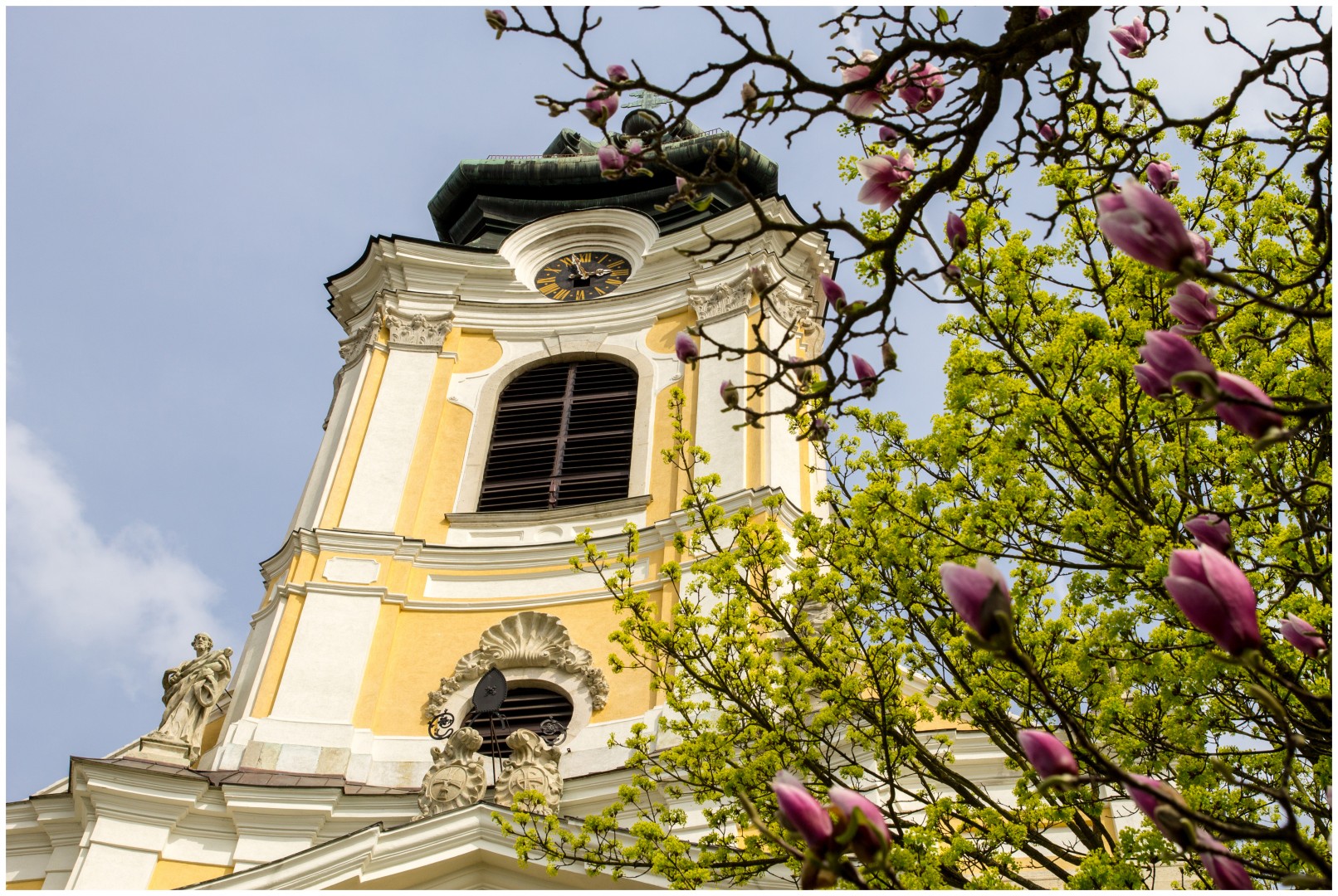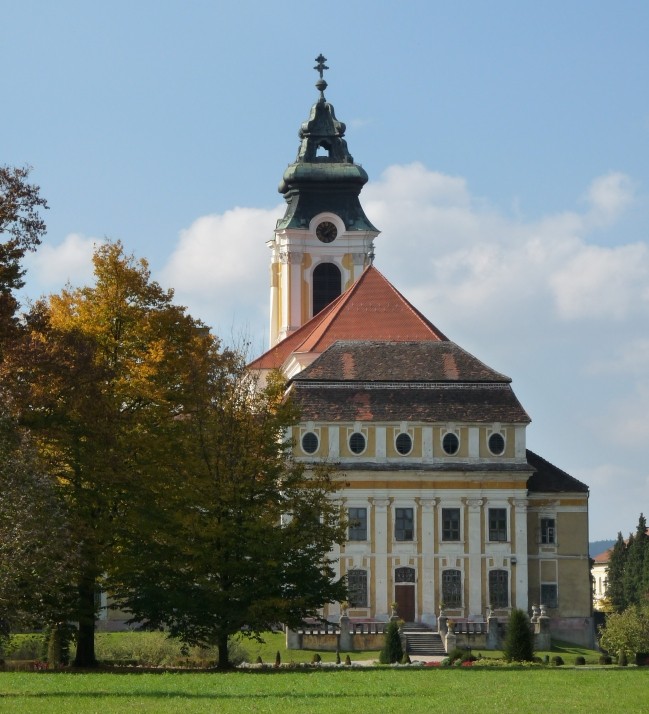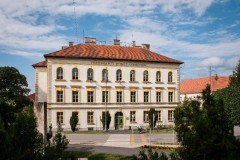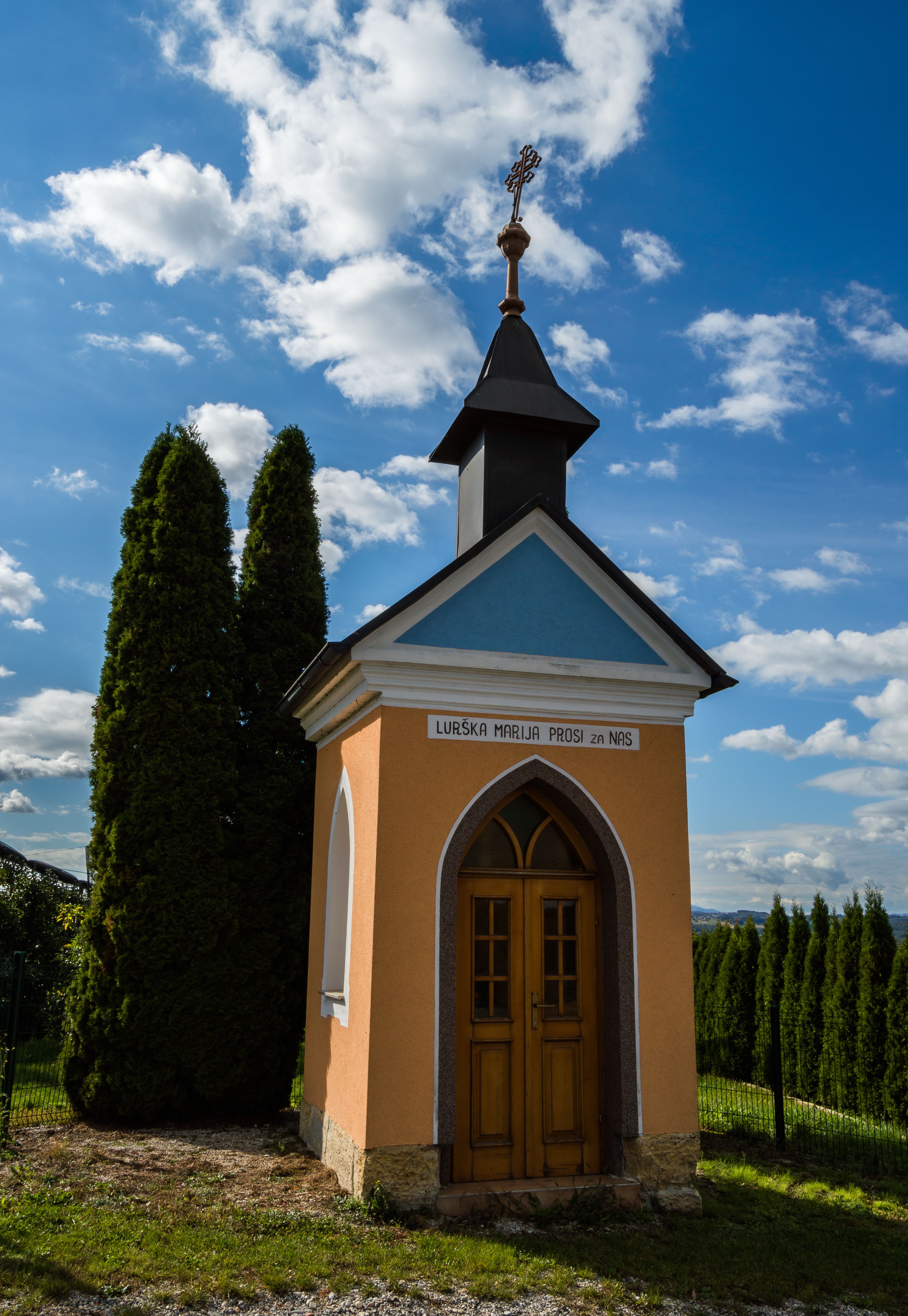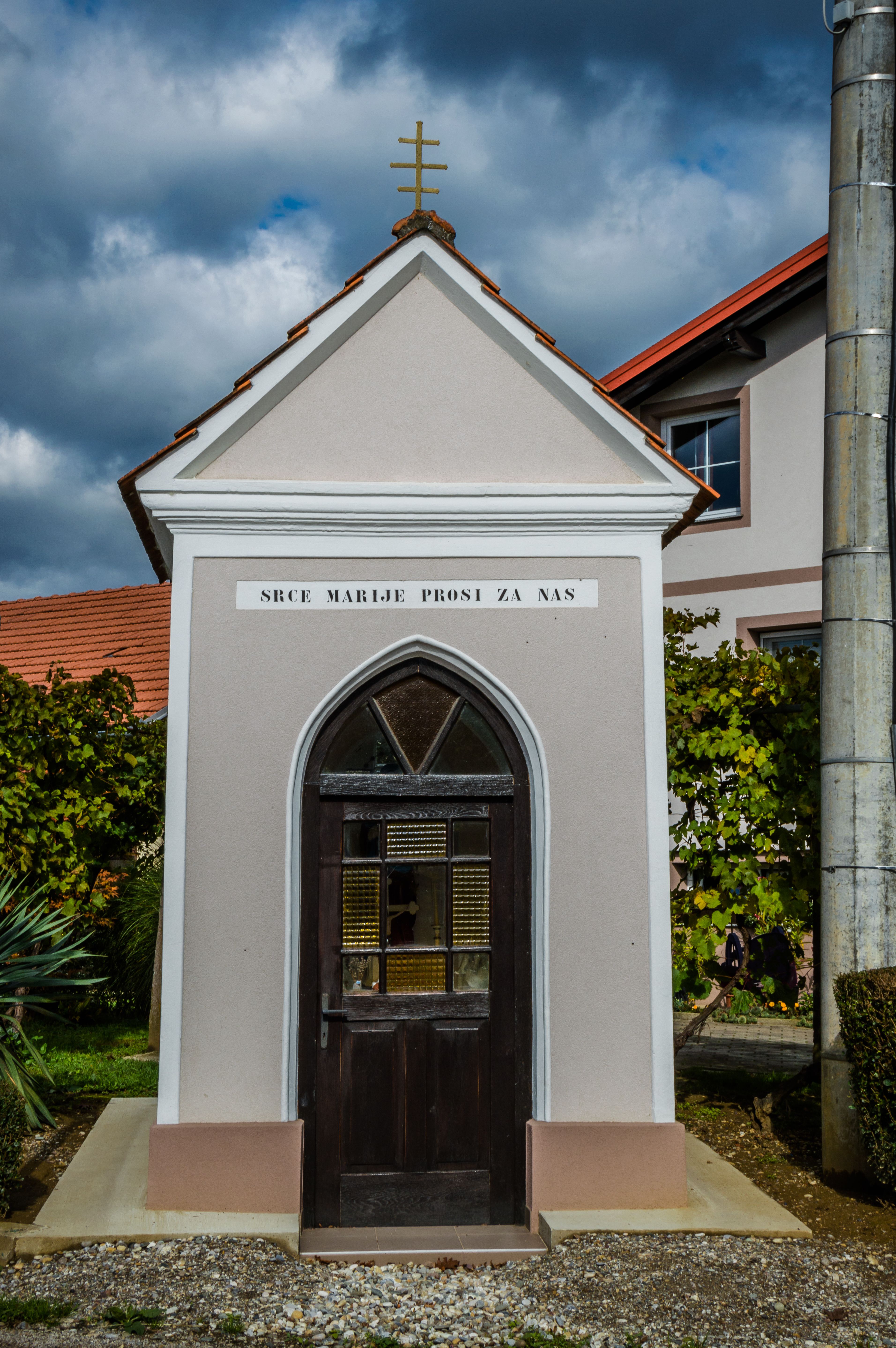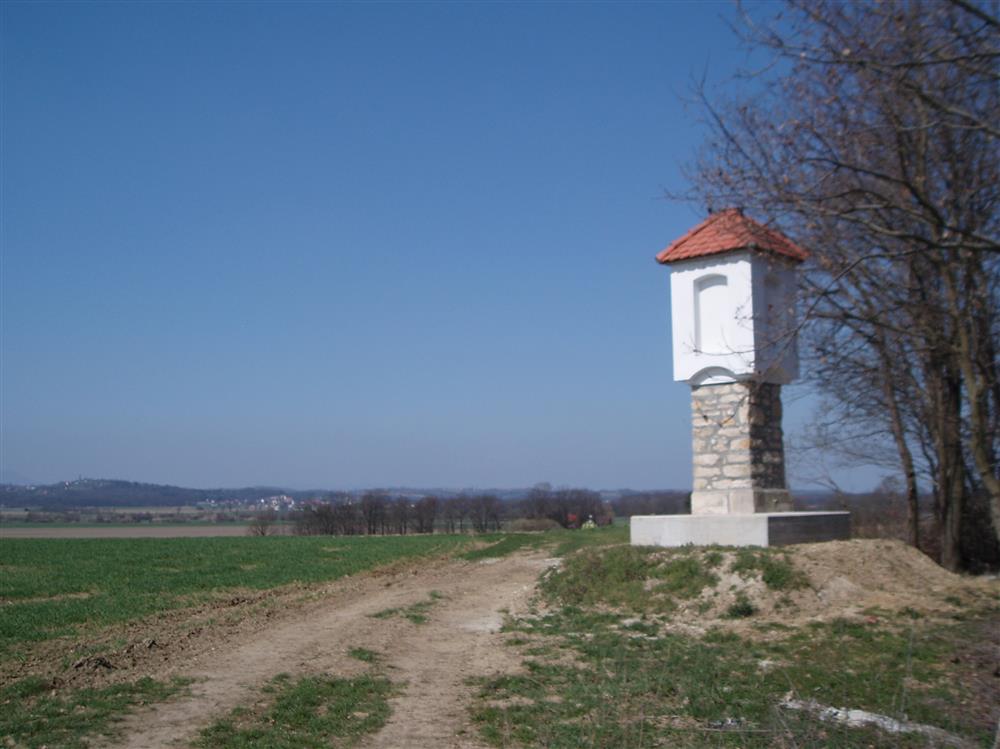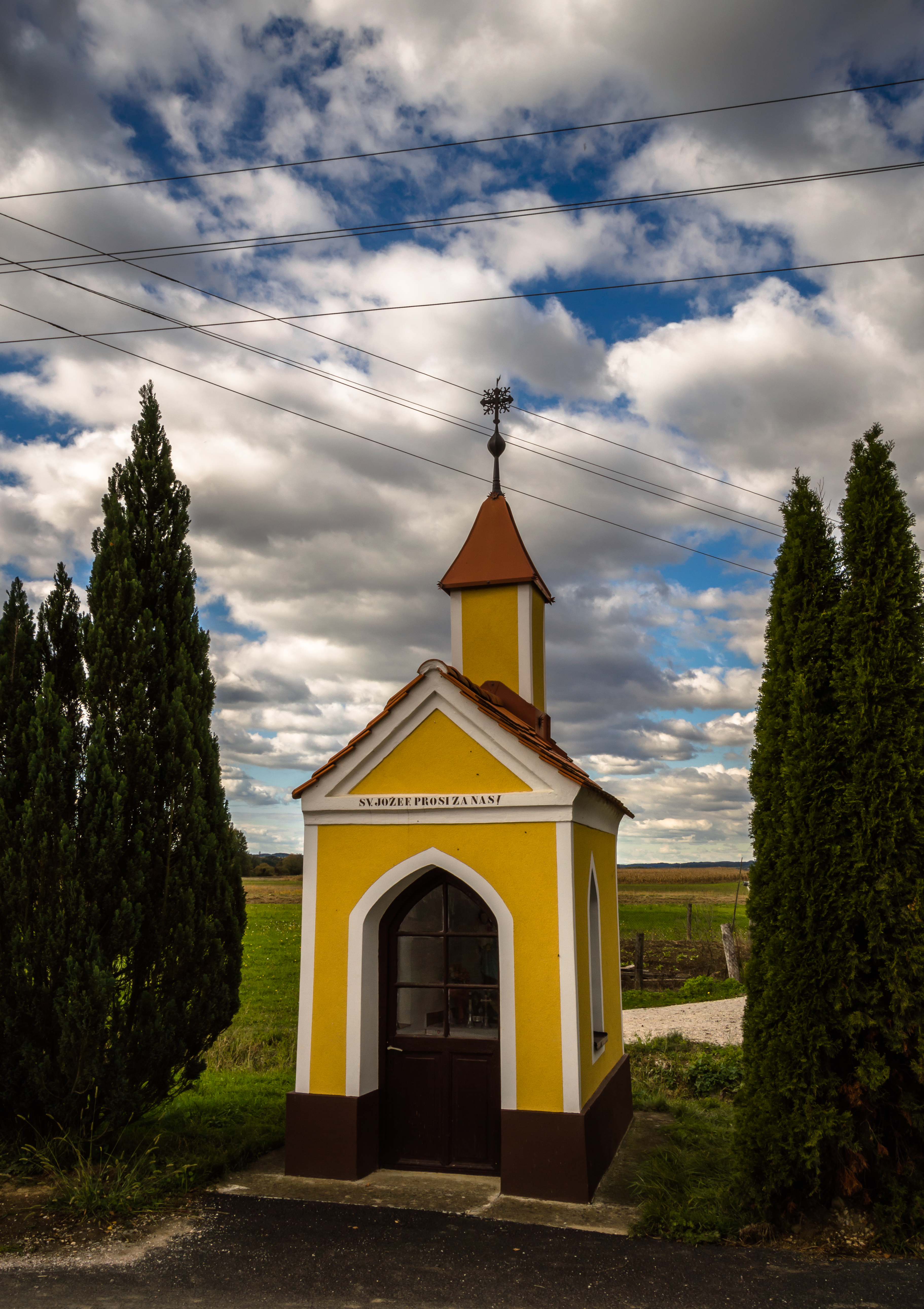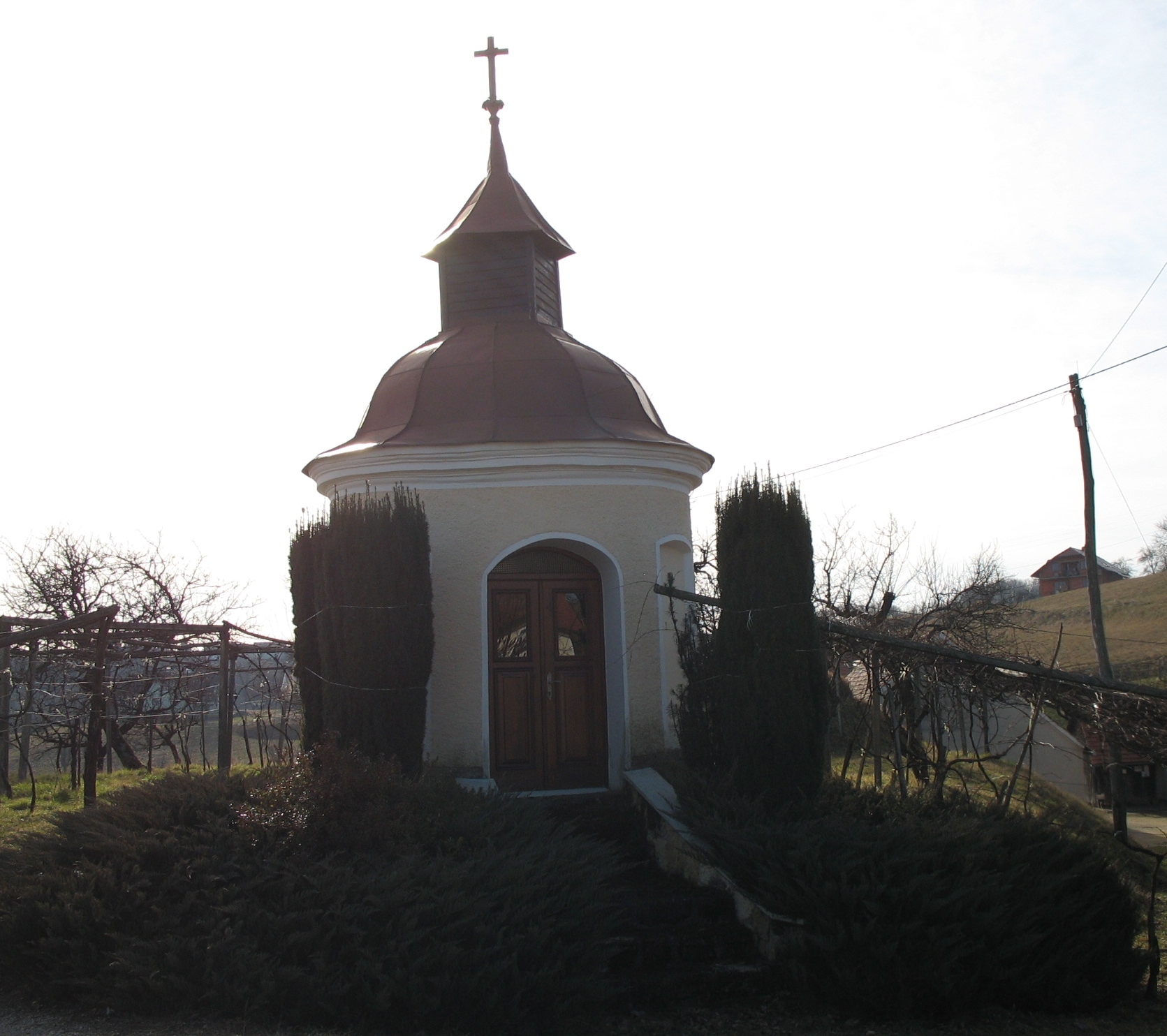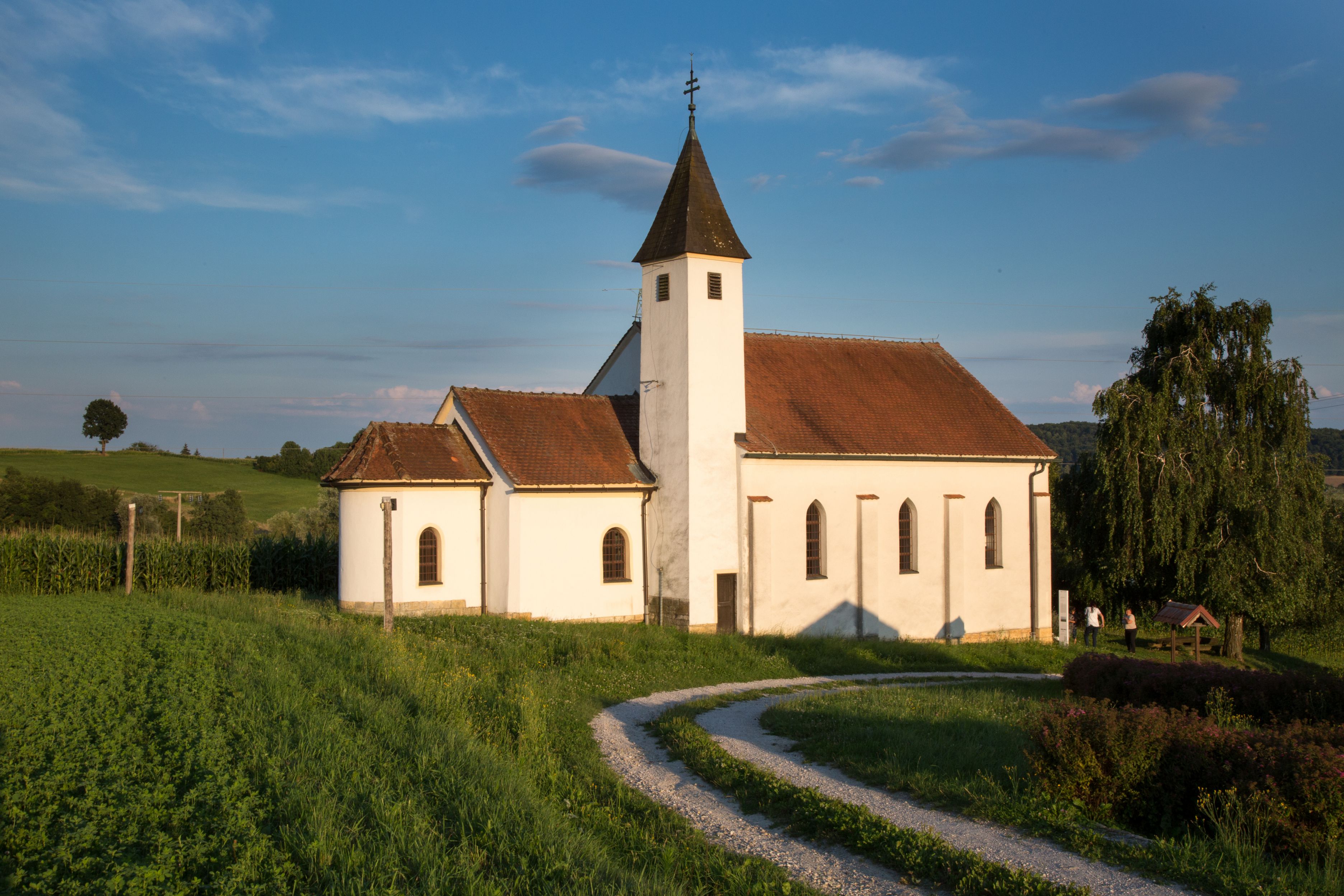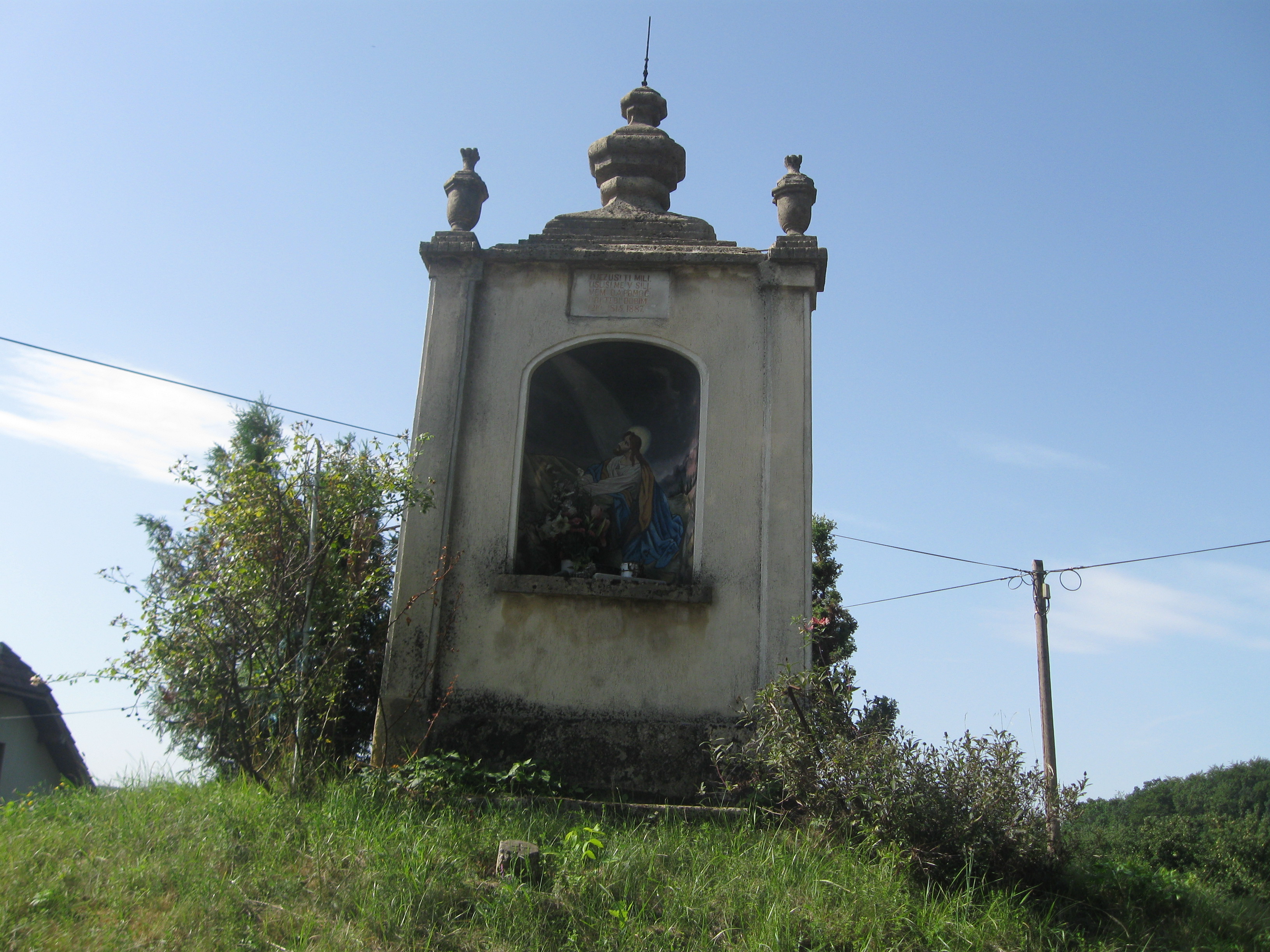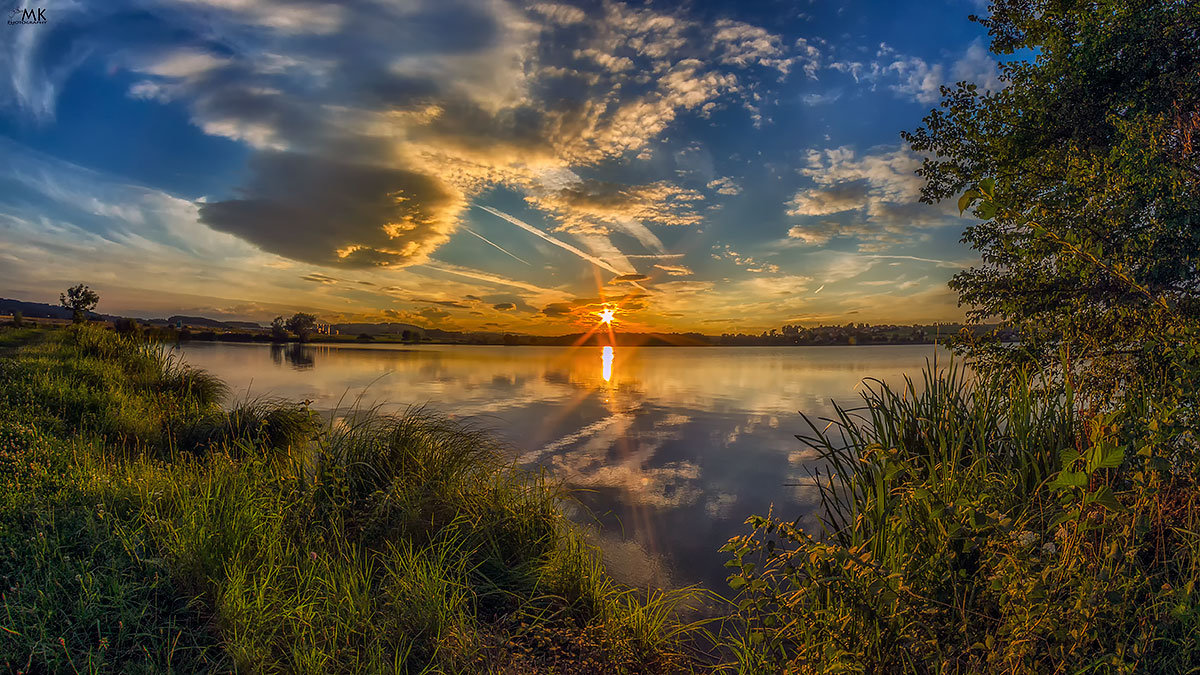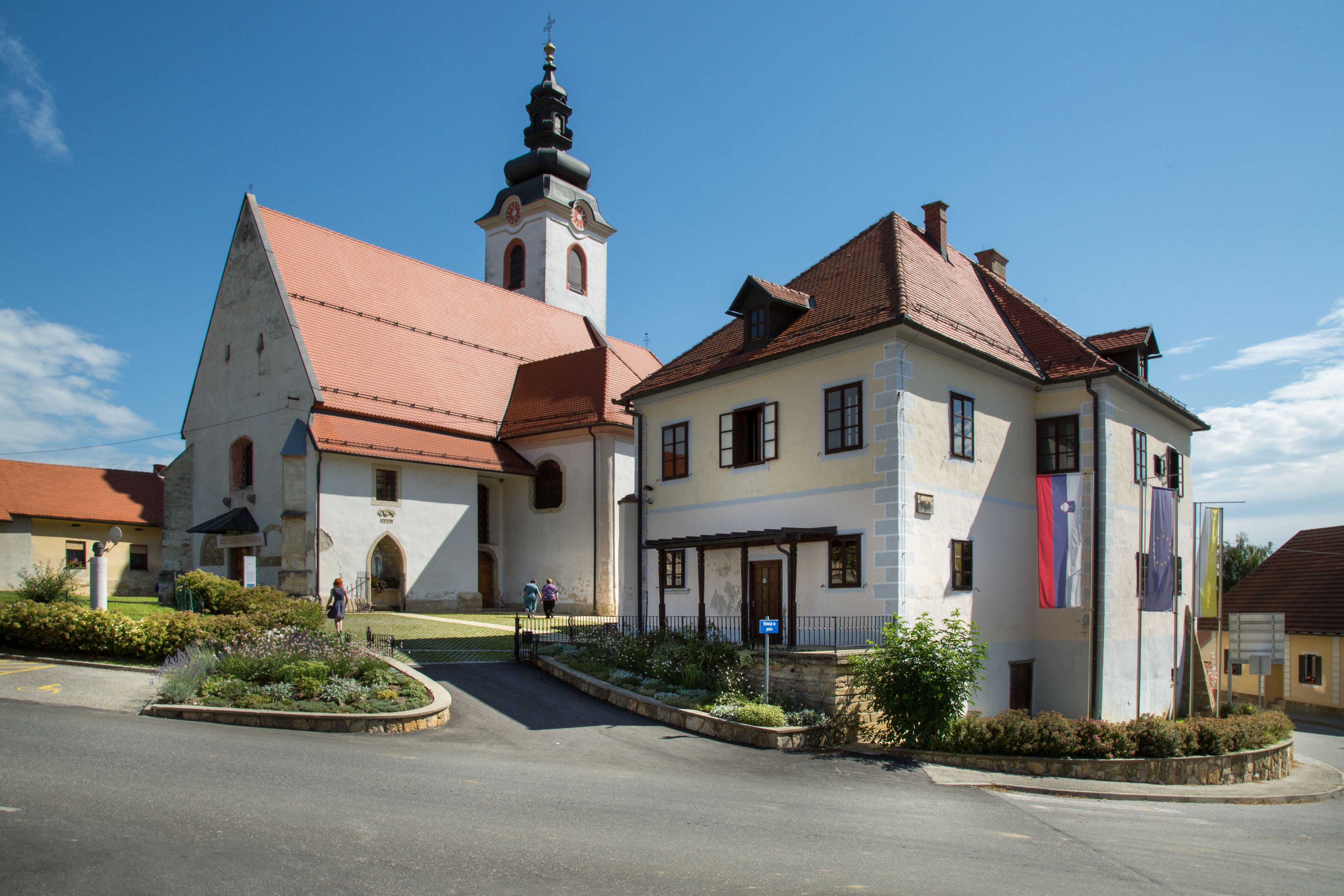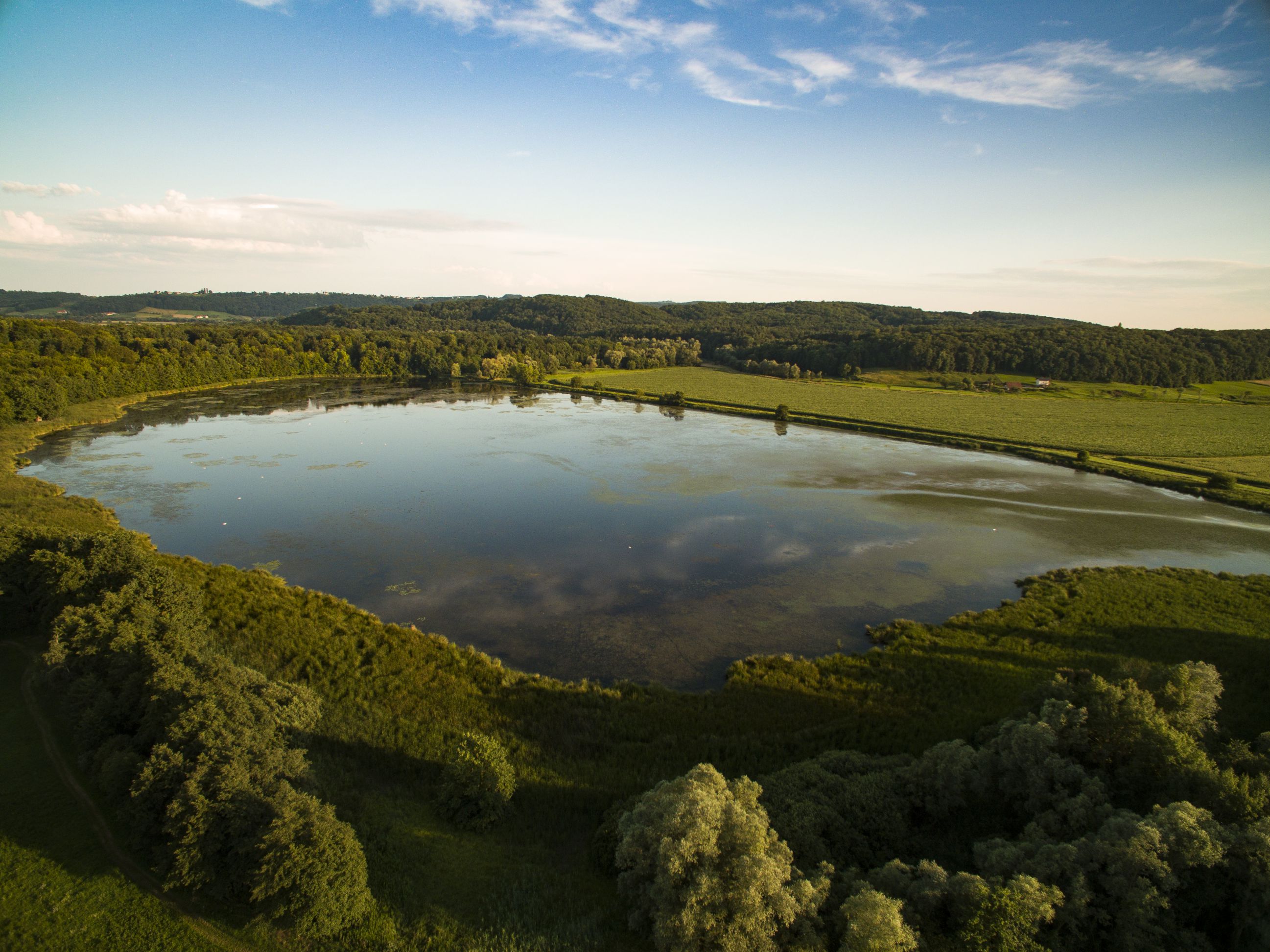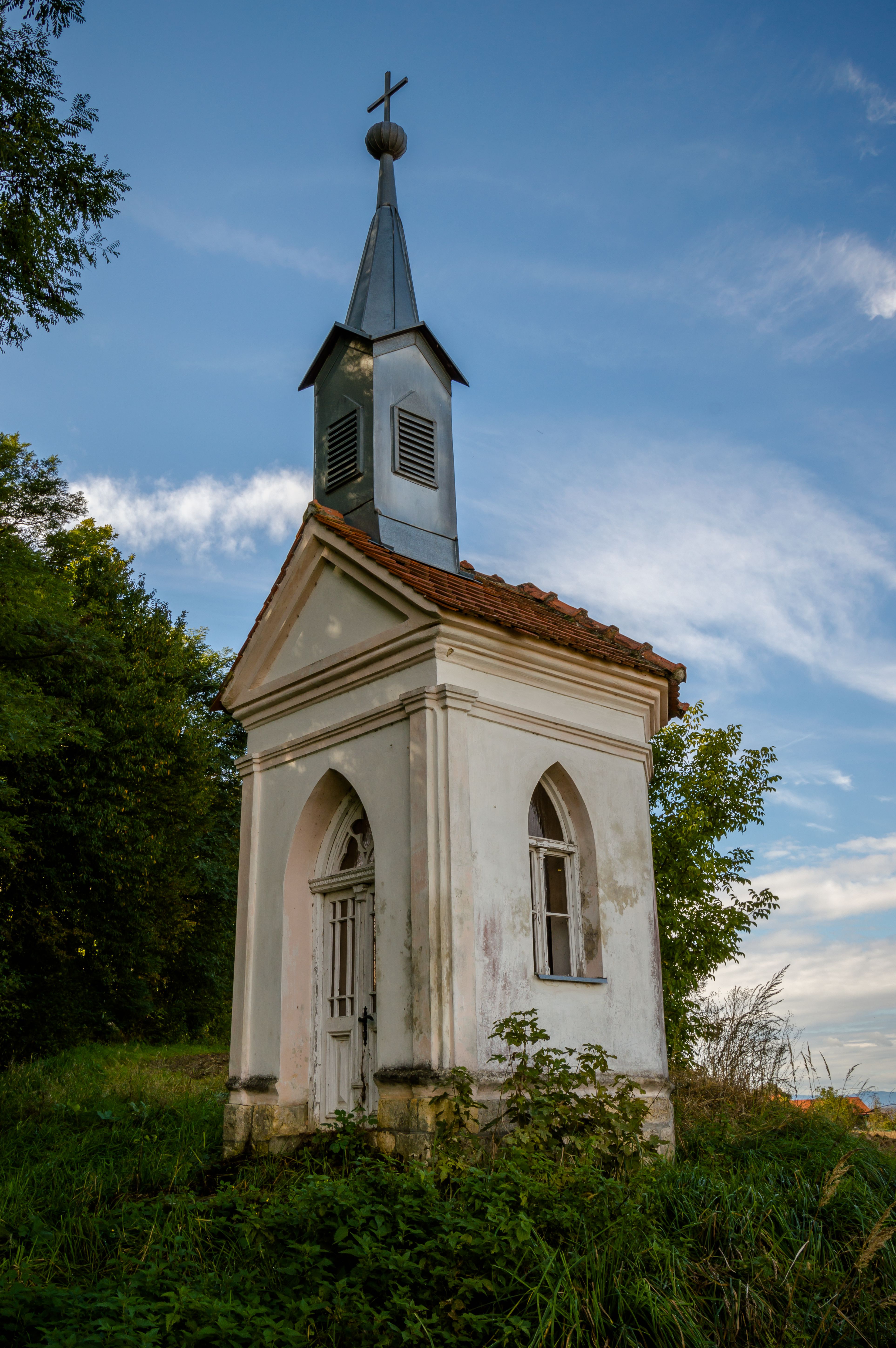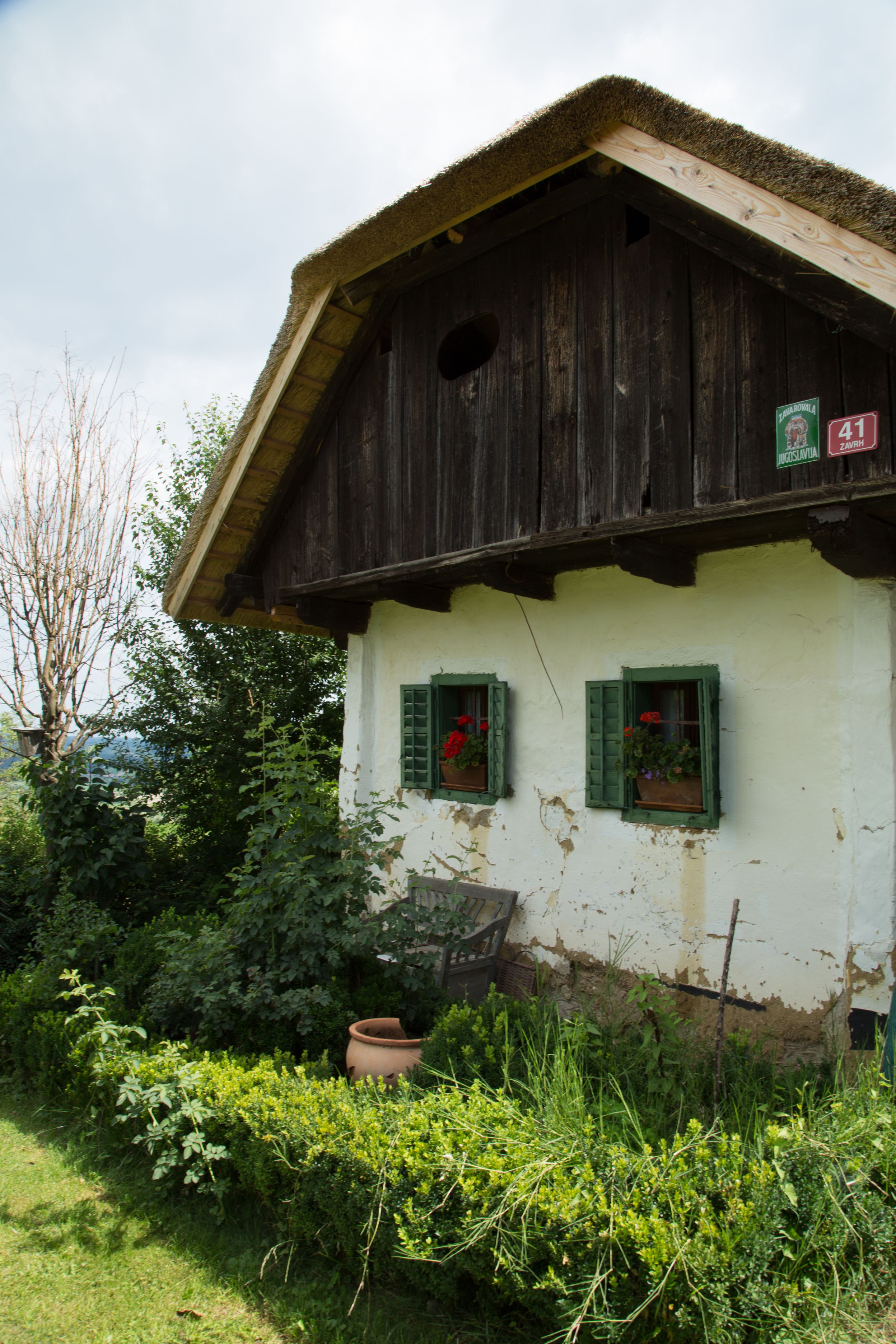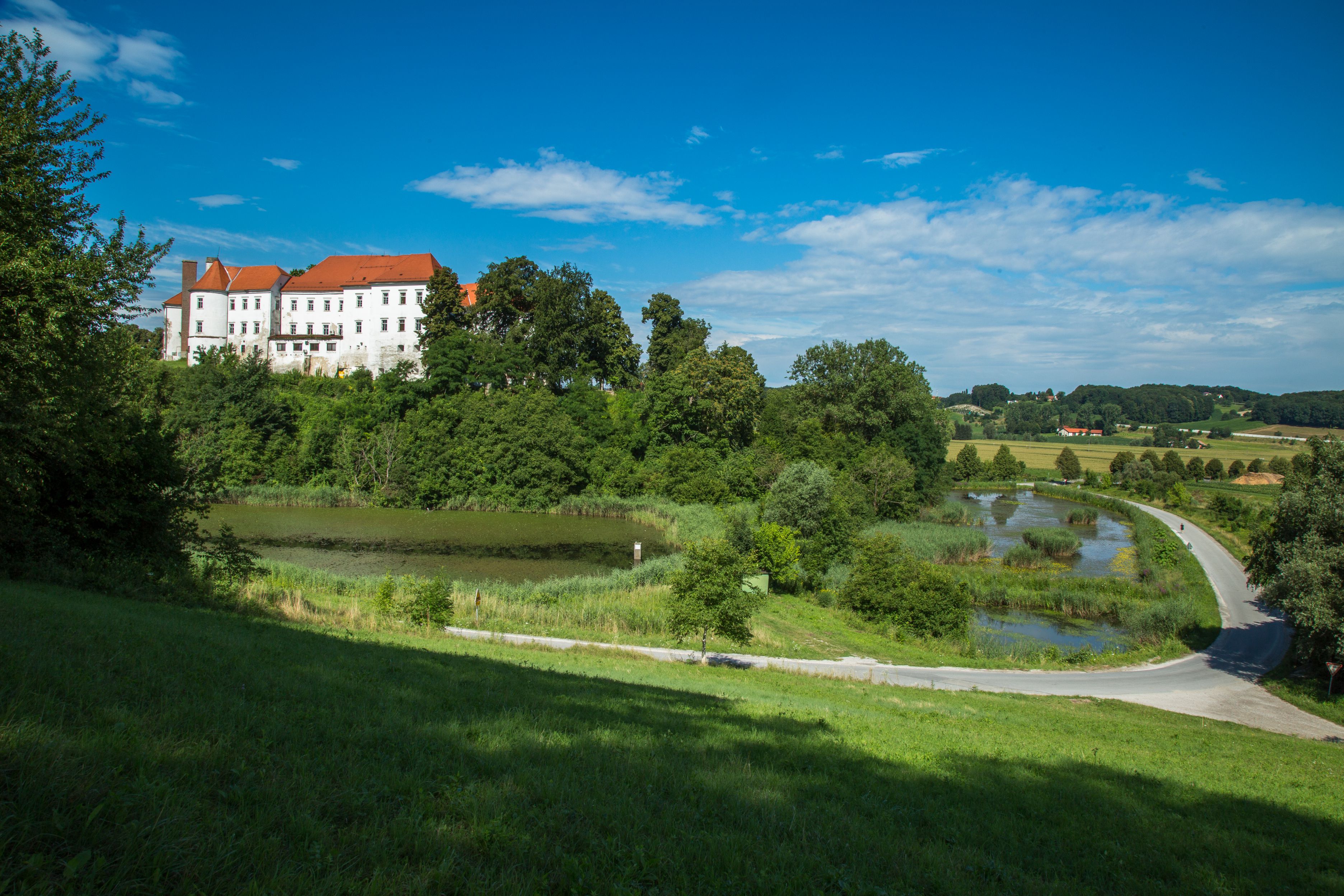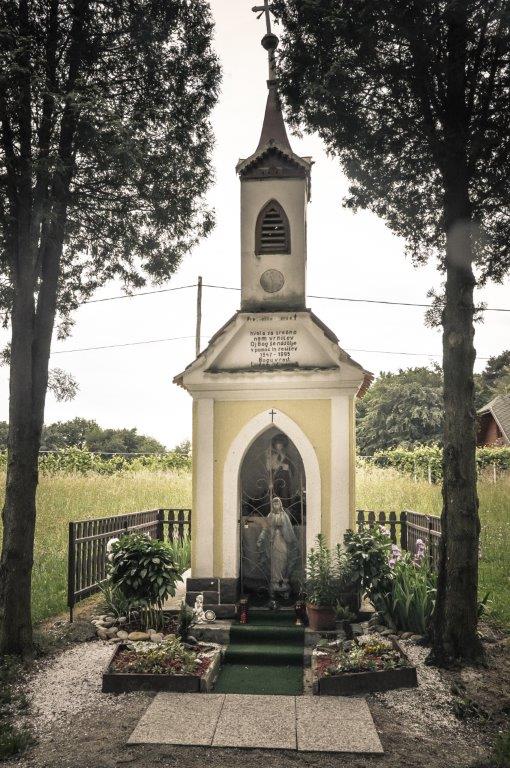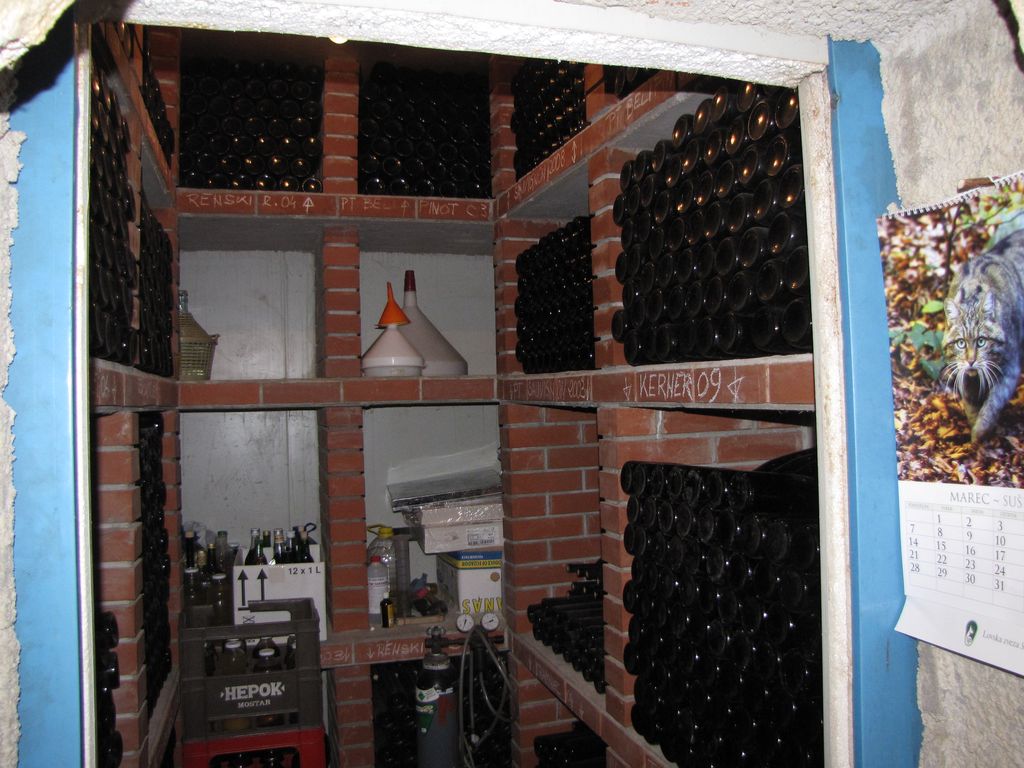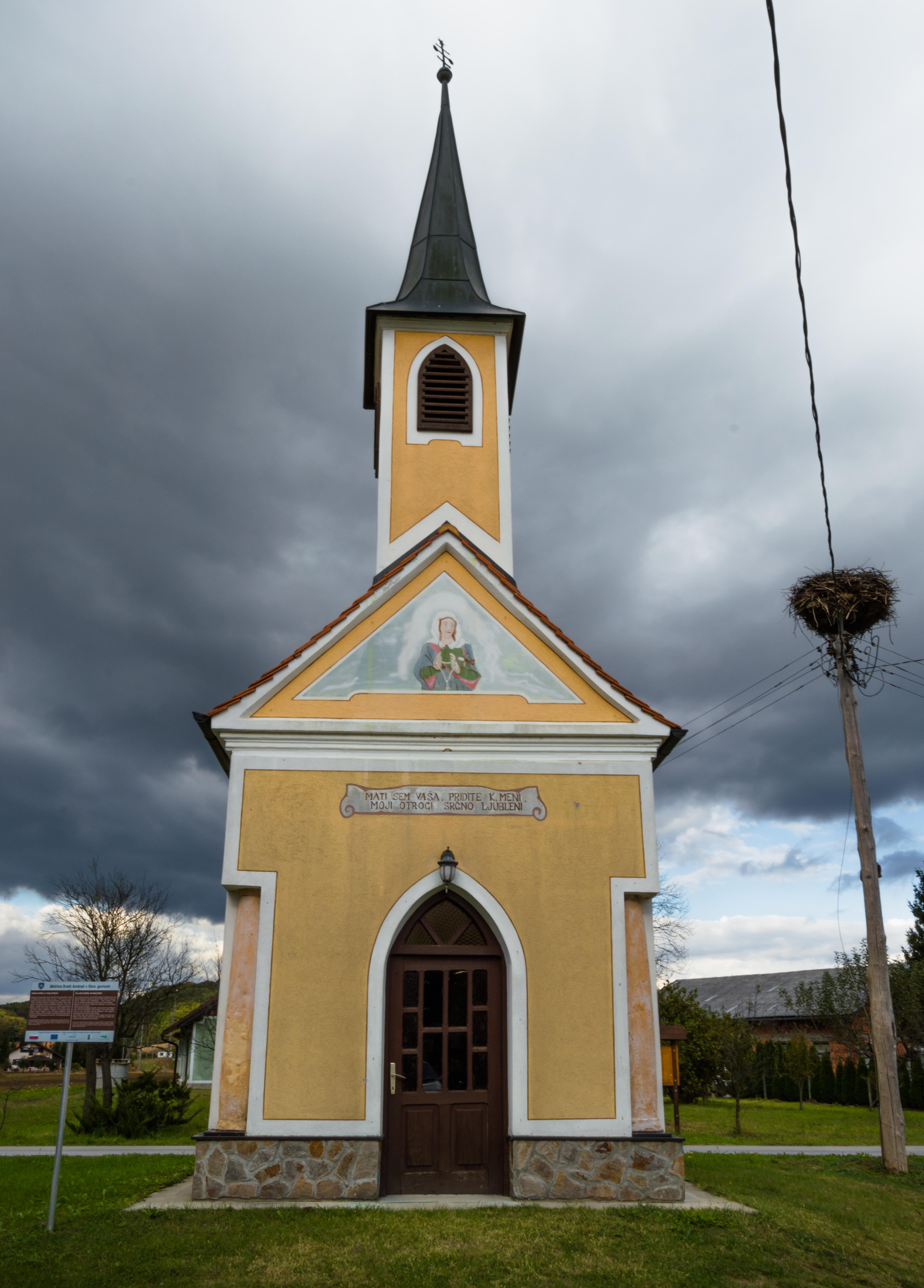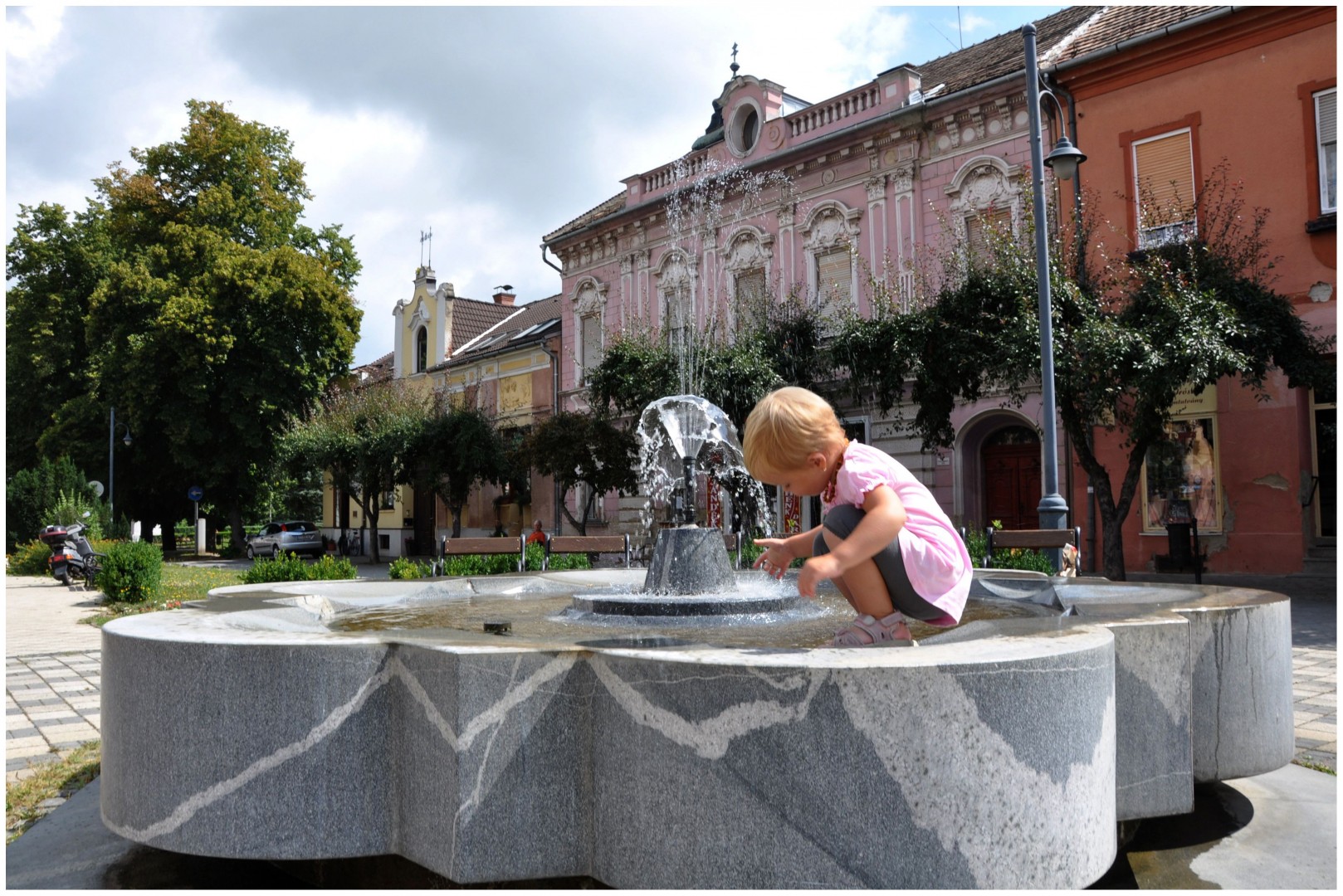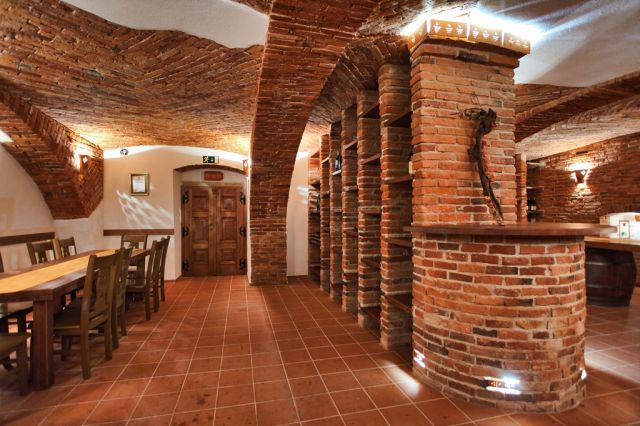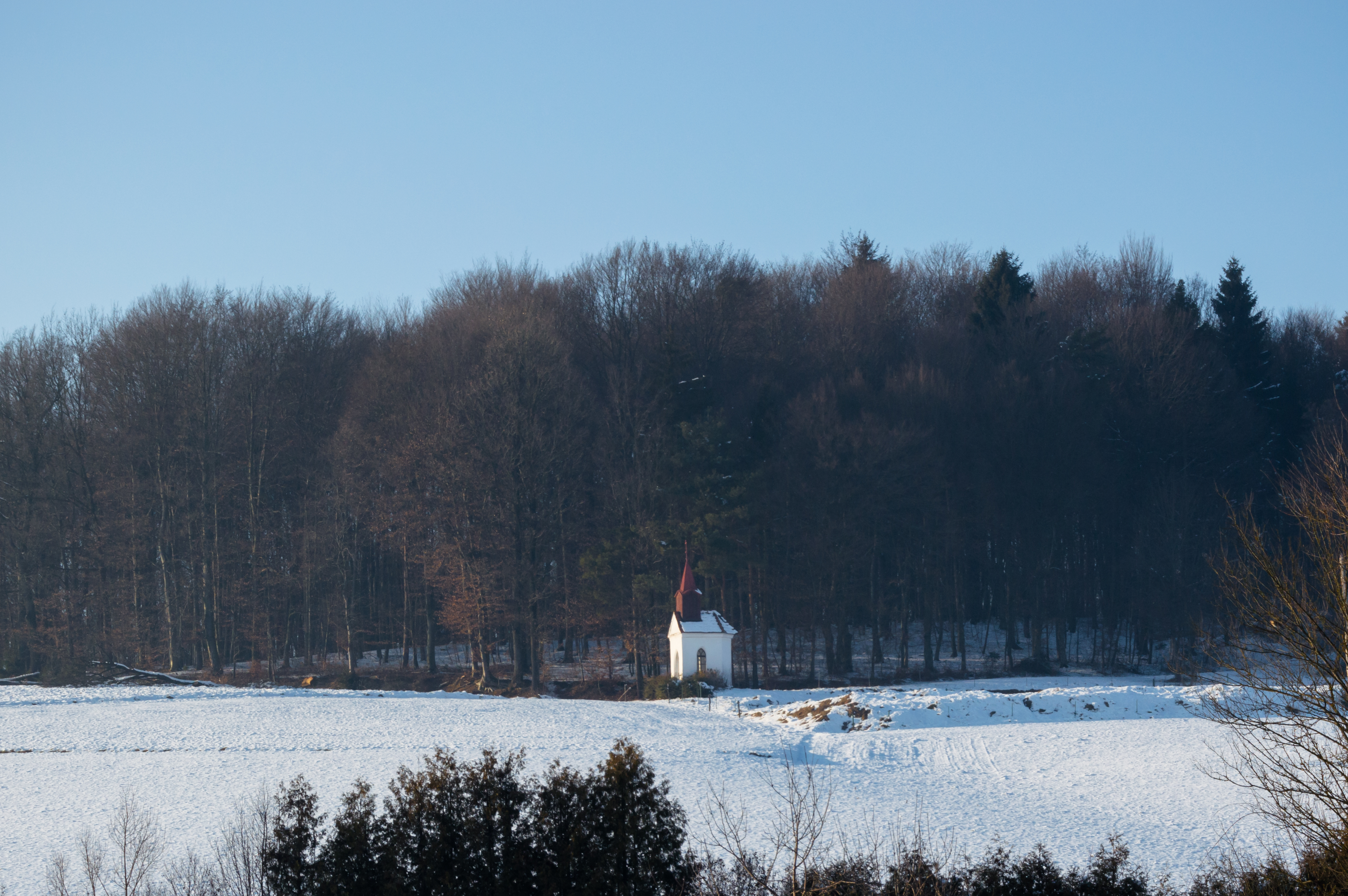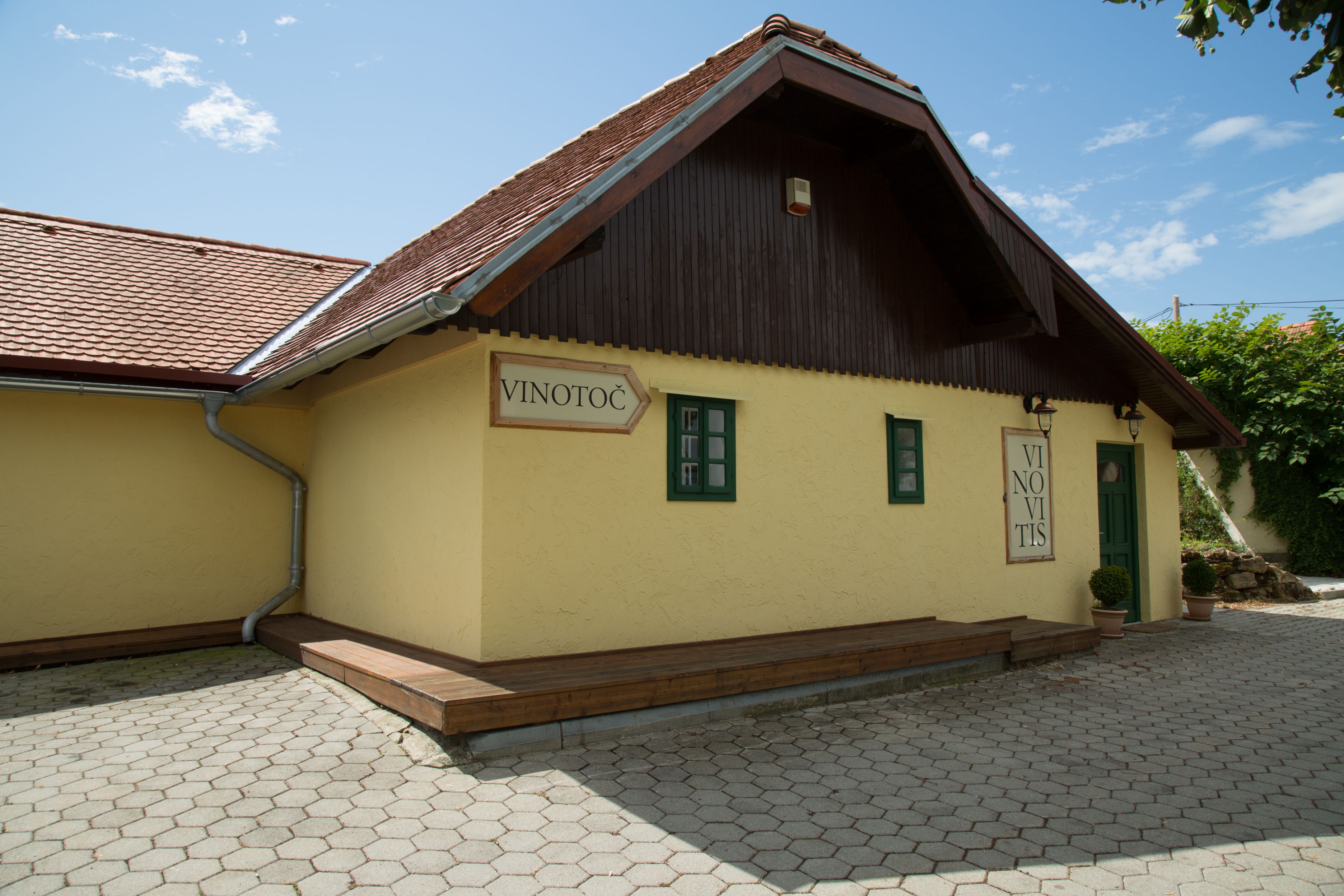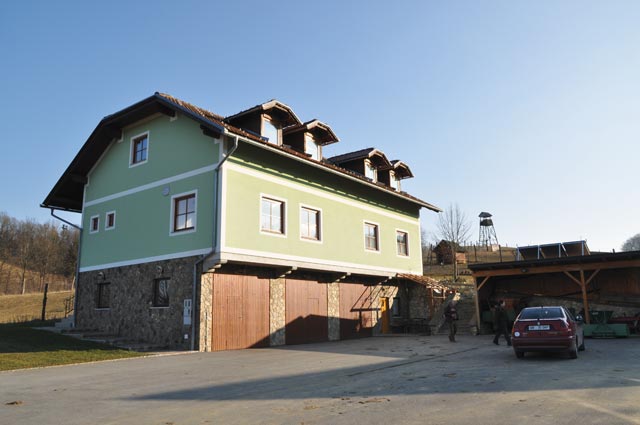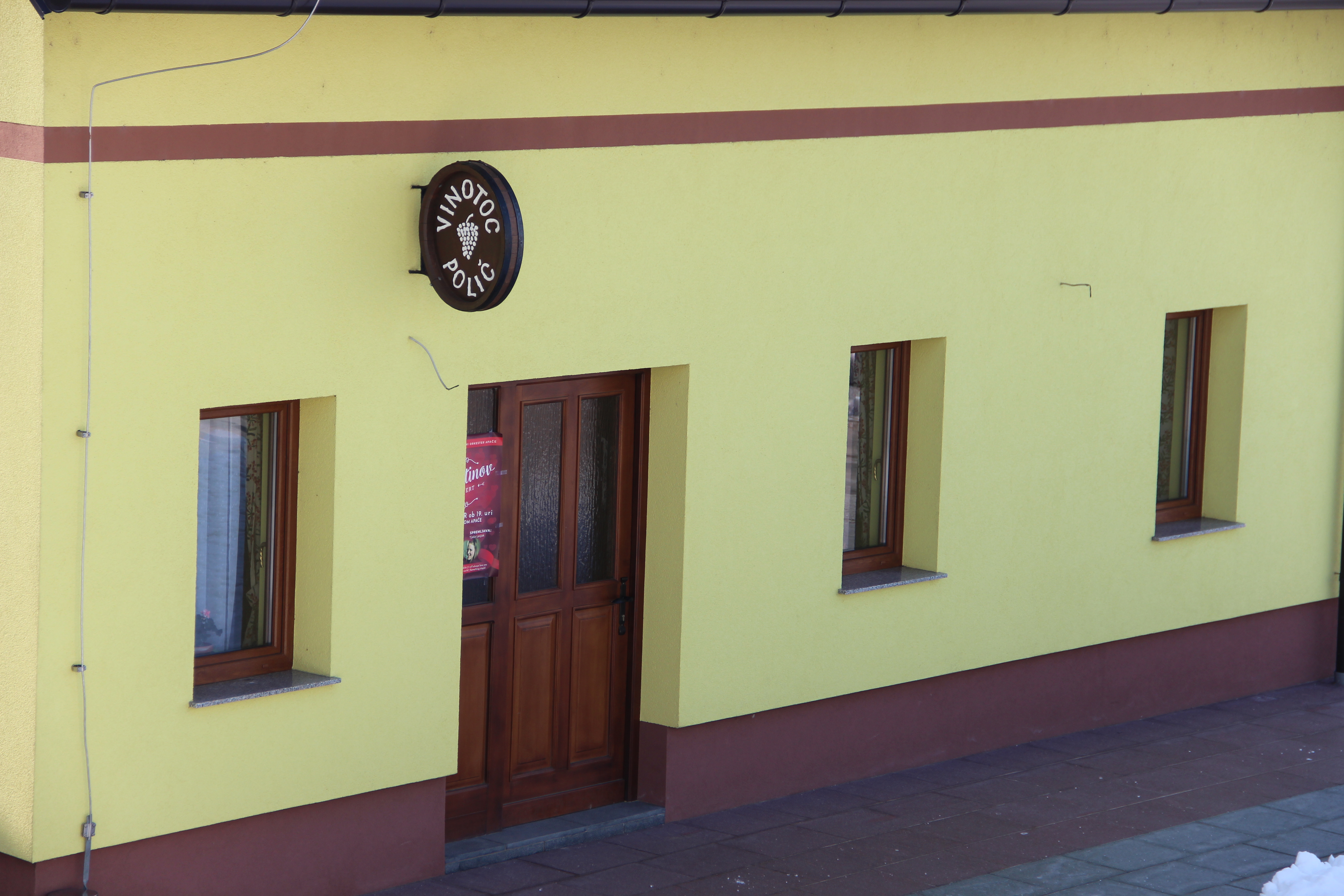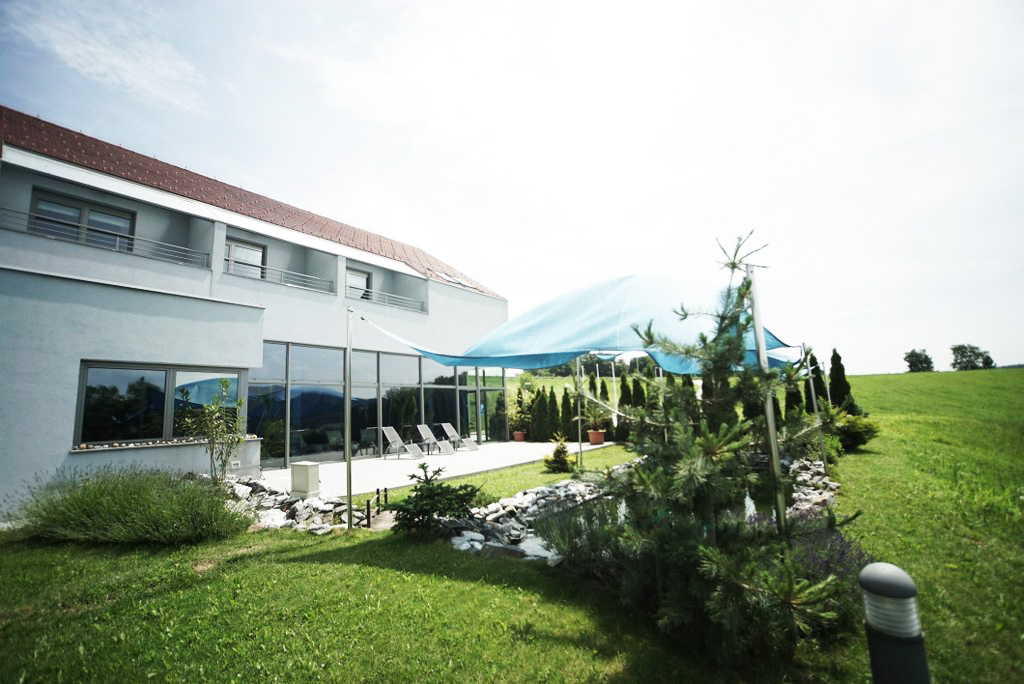I am interested in:
Zgornja Ščavnica 58, 2233 Sv. Ana v Slov. goricah
(
Map
)
A beautiful brick and part wooden house, owned by the Urbanič family and for four generations also called the Grafonž homestead, that allows us to have a look at a museum of the life and management in the past. They also have a stationary and excursion tourism.
The Grafonž homestead consists of the house, a barn, hayrack, wooden toilet, apiary, fountain, a place to dry flax and a trellis.
Hrastovec v Slov. goricah 22, 2230 Lenart v Slov. goricah
Castle Hrastovec, located on the hill above the valley of the river Pesnica, is one of the mightiest castles of Slovenian Styria. The name Hrastovec (originally Gvtenhage) is first mentioned in the Styrian state urbarium for the year 1265. It is assumed, however, that the first mentioning of Gvtenhage does not refer to Hrastovec castle as we now know it, but probably to a small settlement or a much smaller stronghold on the hill.
Vitomarci 58, 2255 Vitomarci
(
Map
)
When feudal peasants were exempted from the land rent and became the owner of their land, the Pover farm stood in the village of Vitomarci, on the left bank of the brook. It was approximately 55 jutro’s (old square measure) large and owned a »gornik« house (today called the family Hrga homestead), as well as a few eighbouring houses and a vineyard.
Zavrh 97, 2232 Voličina
(
Map
)
In 1963, the local people erected a wooden tower on Zavrh, which was 24 metres high, and named it after General Rudolf Maister. On the same spot today stands the 17 metre high metal viewing tower, which, when the weather is fine, offers fantastic views of Pohorje, Kozjak, Boč, Donačka gora, neighbouring Croatia and even the plains of Hungary. In the midst of the settlement proudly stands Stupica’s villa, in which the general occasionally spent some time resting.
Spodnji Žerjavci 41b, 2230 Lenart v Slov. goricah
(
Map
)
On Bunderla tourist farm, we try to win over the gourmand tastes of all who love homemade, traditional Slovene food with our home-cooked food. We serve lunches, dinners and cold cuts for special occasions, paired with selected in-house wine and, of course, freshly baked bread. The sweet specialty of out establishment is the “gibanica”, made by carefully following the recipe of our grandmother.
Kremberk 36, 2233 Sv. Ana v Slov. goricah
Between Spodnja and Zgornja Ščavnica, on the hill above the valley of the river with the same name, in 1654, a wooden chapel was built. Between 1693 and 1705 the current parish church of St. Ana was built and was renovated twice in the 19th century. The church has three altars, the main altar is the work of the sculptor Jože Holzinger from Maribor, made in 1794. In the side chapel there are murals by the classicist painter Jožef Reitter from the first half of the 19th century.
Spodnja Voličina 77, 2232 Voličina
The church of St. Rupert stands in the village centre of Spodnja Voličina. Just a few kilometers to the North is Hrastovec castle, and to the East lies the town of Lenart.
The church, which is covered with a steep gable roof, consists of a spacious Gothic nave and presbytery, and also has a tall, massive bell tower on the North end. Apart from this, the church also has a sacristy on the South end and two Baroque chapels.
46.7878072,16.3490508
(
Map
)
The Kerca stream takes its source in Slovenia in the Goričko area, and flows into Kerka at Bajánsenye. It is the habitat of the thick shelled river mussel and the crawfish. Of the species of dragonfly the presence of several species highly important from the nature conservation point of view has been detected. Of the kinds of the sombre goldenring dragonfly (cordulegaster bidentata) the Balkan goldenring or cordulegaster heros is the most important.
Žice 6, 2233 Sv. Ana v Slov. goricah
(
Map
)
We can claim with certainty that this part of Slovenske gorice has always been populated by different people, among them Romans (about 2000 years ago). Evidence of Roman settlements in these parts are the Roman barrows and tumulus. Barrows, archaeological monuments, were in the past used for burial on these parts. We differentiate between pre-historical and Roman provincial barrows.
The barrows in Slovenske gorice have an unusual characteristic - only one or two urn burials.
46.69642,15.88943
(
Map
)
V sredini 13. stoletja naj bi na mestu dvorca stal strelski doverc. Današnja baročna stavba dvorca Freudenau izvira iz 17. stoletja. Posebnost dvorca je vzidan okrogel rimski relief iz 2. stoletja, ki predstavlja objeta zakonca. Skozi stoletja je dvorec zamenjal več lastnikov, v začetku 20. stoletja je lastnik postal najboljši dunajski veletrgovec s kavo - Julius Meinl, po katerem so domačini poimenovali grad.
46.69747,15.90764
(
Map
)
S priselitvijo Prekmurcev v Apaško dolino v 30. letih prejšnjega stoletja se je v Apačah osnovala evangeličanska skupnost. Za potrebe božje službe so leta 1931 kupili hišo ob glavni cesti skozi Apače ter zemljišče za pokopališče. Hiša je bila zgrajena okoli leta 1864, obnovljena leta 1917. S prihodom prvega pridigarja, Zoltana (Zlatka) Kerčmarja leta 1932, se je cerkvena občina povsem osamosvojila.
46.8632216,16.3448644
(
Map
)
In the Őrség region the river Zala, which is just a trickling little stream here called „Szala”, had for a long time been a vital element of the landscape for the people settled here. Today it is primarily the landscape that represents the valley’s local importance. The alder groves along the stream bed and the traditional orchards on the hill sides and in the bottom of the valley are habitats of European communal importance.
46.57366,15.82254
(
Map
)
In ŠRC Polena you can play football and beach volleyball; boules can also be played. Annual harness races are held on the sand circuit, which is also used by recreational runners, hikers and walkers. The asphalt-covered track is used for training by professional, as well as recreational cyclists of all ages. There is also an annual fair of farming equipment and related crafts (kmetijsko-obrtniški sejem – KOS), held during the last weekend of May.
46.69609,15.90768
(
Map
)
Prvotno katoliško župnijsko pokopališče je bilo okoli cerkve v Apačah. Cesar Jožef II je leta 1784 z ediktom prepovedal pokopališča v središčih vasi zato se je na mestu današnjega pokopališča določila nova lokacija. Obzidje starega pokopališča je bilo odstranjeno že leta 1832. V zgodnjih letih 20. stoletja evangeličanskih vernikov ni bilo dovoljeno pokopavati na katoliškem pokopališču, le ob njem ali v drugih krajih.
Spodnja Voličina 81a , 2232 Voličina
(
Map
)
An old Slovene saying goes »The guest is king«, but in our house we are convinced that a saying is not enough. We are also sure that our culinary masterpieces and friendly staff will do anything to make you feel like a king. You are always welcome in our inn: with friends, celebrating special moments, with a good drink and excellend dishes which warm the soul, both traditional Slovene meals and more modern ones.
46.56582,15.76611
(
Map
)
Among the grasslands of Pesnica valley south of the Močna settlement the river Pesnica was dammed to form Pristava Lake. Its other name is Šiker’s pond, as it lies near the famous Šiker inn. The first pond, which had previously belonged to the Counts Herberstein, who used it for breeding fish, was enlarged decades ago by damming the stream of the Pesnica. The lake is 750 metres long and 500 metres wide, it has a surface area of about 30 hectares.
The memorial stands in the settlement of Lormanje above lake Komarnik, in the Črni les forest. It was erected in memory of Agata of Štralek (today’s Zgornja Voličina), the wife of Friderik Herberstein of Hrastovec castle. The memorial was renovated in 1665 and again in 1789, but was forgotten after that and fell into ruin. The Catholic society Zarja from Lenart rebuilt the memorial on the same spot in 1939.
46.657379,15.853096
(
Map
)
The Ščavnica River is a lowland river in the northeast part of Slovenia. Its headwaters are 330m above sea level in the northeast part of Slovenske gorice, in Zgornja Velka.
In the past, the Ščavnica River had a larger volume of water. It used to power the numerous watermills that stood on the river. Today, only the modern, electrically powered Rožman’s mill is still on the river.
Vrtna ulica 7, 2230 Lenart v Slov. goricah
(
Map
)
The establishment has been in business since 1995. It is situated by the main Lenart-Ptuj road, about 800 metres from the centre of Lenart and above Radehova Lake. It is known for its delicious pizzas. In 2012 it expanded its menu, so that it now also serves lunches, pasta, grilled food, lasagne, salad plates, steak and dessert. The restaurant also serves local wines, coffee and other non-alcoholic and alcoholic beverages. It can accept up to 100 guests in the restaurant and its terrace.
Zgornja Ščavnica 12, 2233 Sv. Ana v Slov. goricah
The Evangelical Cemetery, which the locals like to call ‘the Lutheran graveyard’, can be found in the area of Zgornja Ščavnica.
The history of the cemetery goes back to the 1930s. Back then, some of the residents of the municipality identified themselves as Evangelicals. Between the World Wars there was an increase in resettlement from Prekmurje to the area of Slovenske gorice. Among them there were Evangelicals that wanted to keep their faith.
The Baroque garden, the orchards and the rows of trees were established in the Heiligenkreuz era, which is today known as the castle garden and it is the biggest public park.
Contemporary documents and descriptions of the Cistercian library mention the soothing feeling of looking down onto the garden of the abbey. The area under local protection features several rare plants and consists of an English park and a Baroque garden. The Orangery is an important building herein.
46.8295632,16.4572251
(
Map
)
The building recalls the atmosphere of the 1920s and presents how our ancestors lived and what tools they used in their everday lives. The thatched roofed house in the middle of the village was built at the end of the 1800s with the joint effort of the locals: they built a staff house for the smith of Nagykovács. The house was planned for the bank of the Zala River as the water is indispensable for cooling the wrought iron.
One of Szentgotthárd's most beautiful places is Lake Hársas in Máriújfalu which is an artificial lake fed by Hársas brook originating in the forest of the neighbouring Apátistvánfalva. It is popular not only with fishermen but also with bathers and hikers. The 1-km ‘Hársas Lake' study trial is next to the lakeside walkway and introduces the wildlife and architectural values of the lake's vicinity.
46.759991,16.3415323
(
Map
)
The Pottery-house at Magyarszombatfa presents the form of dwelling and way of life of a typical peasant craftsman. The turntables and kinds of pots that had been made at and around Szombatfa from the late 19th century to the middle of the 20th century are on display here. The room and smoke kitchen of the 19th century log-walled dwelling house shows the late 19th century living space of the poor peasants where many pieces of simple hard wood furniture can be seen.
16.4148222,46.8414481
(
Map
)
The rose daphne (Daphne cneorum) is the coat of arms plant of the Őrség National Park, as its prostrate stemmed subspecies is very typical of the region. Its strongest stands can be found in the central parts of the Őrség region, especially along the service road at Szalafő, on the top and the sides of the drainage ditch, at the edge of the woods, in a length of nearly 1 km. Several smaller stands are known to exist within the borders of the village Őrihodos, although these are all endangered.
46.8091456,16.3086219
(
Map
)
At Kapornak, which today belongs to Hodoš administratively, the inhabitants of the village have established an orchard for the conservation of local fruit species within the framework of the Fairy-garden movement widely spread in Hungary. In an area of about 30x50m surrounded by a fence all around, some 60 young fruit trees of a height between 1 and 1.5 m can be found.
46.8485919,16.3954304
(
Map
)
The image of the old traditional farms in the Őrség region would not be complete without the orchards around the houses and the traditional orchards lying some distance away on steeper hill sides with spaciously scattered fruit trees of varying ages that are still a characteristic feature and habitat in this region.
46.8480971,16.4017447
(
Map
)
Templomszer near Őriszentpéter is known for its Roman Catholic Church dating back to the times of the Árpád Dynasty (cc. 895 -1301) and surrounded by a deep ditch and a double mound. The bricks used for building the castle wall that stood here were baked in the brick kiln located in front of the church mound and restored to its original condition. Its remains were unearthed in the 1980s. A protective building was erected over the site of the kiln by the National Board of Historical Monuments.
Fő út 48 , 9982 Orfalu
Mali Triglav - it is a rock that was brought from the Triglav National Park - is a symbol of Slovene and unity of Consumer Slovenes. In the pillar of the monument, which was ceremoniously erected and blessed on August 25, 2007, seven stones from all seven Slovenian villages of Porabje are also built. The KTD Andovci is responsible for the monument, located next to the House of Crafts and Porabskaya Homestead.
The oldest monument of the town is the granary-theatre, thus it accompanied the history of Szentgotthárd over centuries. At the time when the Cistercians settled down, they built an unusually large-scale church. Royal captain Wolfgang Tieffenbach had it blown up in 1605 in fear of the approach of the Haiduk, led by Gergely Németh.
Gradenšak 10, 2232 Voličina
(
Map
)
Kužno znamenje na kvadratnem podstavku je iz obdobja 1710–1712, ko je tod zadnjič morila kuga. Domačini mu pravijo tudi pomorski križ. Njegove niše krasijo podobe svetnikov. Stoji ob hiši številka 9 v Gradenšaku.
Zgornji Žerjavci 28, 2230 Lenart v Slov. goricah
(
Map
)
The farm measures 25 ha. Its owners are engaged in milk production and the provision of services with machines. For more than 10 years, they also have a complementary activity, i.e. excursion tourism. All family members work on the farm.
46.876321,16.5479583
(
Map
)
In the Vadása Valley the building of the Vadása Lake started in 1968, with the use of the water of the Vadása Creek. The name was given because a lot of foxes lived in this area and dug holes along the creek, and the creek was named “dug by the wild” that is “vad-ásta”, in Hungarian, shortened Vadása. 12 springs feed its clear water. The 200-meter wide and 350-meter long lake is a popular destination for hikers in the summer months. Vadása Lake consists of two lakes.
46.55836,15.78714
(
Map
)
The landscape park, enclosing some 851 hectares of land, was placed on the list of protected areas in 1992. It encompasses part of the Slovenske gorice hills between the Drava and Pesnica valleys, more specifically between Završka vas, Korena, Voličina and Hrastovec. It is part of so-called isolated karst, which has both above- and below-ground karst features. The isolated karst area is 1-2 kilometres wide and stretches from Duplek in the Southwest to Hrastovec in the Northeast.
46.901991,16.5690994
(
Map
)
On the outskirt of the village of Szőce, in the valley of Szőce Creek, the monilia meadow of 127 arces is one of the most famous and significant, highly protected part of the Őrség National Park where you can also find a reasearch house for nature reserve. The most valuable part of the nature reserve is the chain of meadows spreading over the valley floor (14 acres) — the locals named it “wide water” or “wide water meadow”. Its most relevant community is the moor with sphagnum (Sphagnetum).
Kremberk 36a, 2233 Sv. Ana v Slov. goricah
(
Map
)
On the premises of the health dispensary in Kremberk there is a memorial room of Dr. Roman Lesnika. He is a local figure, born in 1898 near Sveta Ana, his parents were teachers at the Elementary school in Sveta Ana.
Roman Lesnika was born in 1898 and gained his education at the Medical Faculty in Graz. He specialised in dentistry and was managing the pharmaceuticals. During the wartime occupation, he helped many people. The permanent exhibition showcases the equipment of Roman Lesnika, M.D.
46.840396,16.4158802
(
Map
)
The Collection on Local History bears the name of Edit Szikszay Károlyné and it presents the history of Őrség, and the everyday lives of the local people with the help of archive records and typical objects of Őrség. Edit Szikszay, local teacher established first a school collection from 1961, then a village collection. She collected the objects of folk culture and the intellectual values of Őrség with talent and good sense.
Rožengrunt 37, 2233 Sv. Ana v Slov. goricah
(
Map
)
Besides tourism, the main business of the farm is livestock farming: they keep cattle, pigs, poultry, sheep, rabbits and fallow deer. The farm has 10 ha of arable land. Everything they produce, they sell on the farm. If you wish for some peace, you can watch fallow deer in nearby pens, walk through woods or along gravel paths. They offer different types of home-produced wines, cider, grape juice, peel oven bread, gibanica and homemade cold cuts.
Močna 7, 2231 Pernica
(
Map
)
The private museum collection contains a great variety of farmyard tools and machines. It is divided into six groups: agriculture, fruit farming, viticulture, carpentry, cooperage, making wheels and peasants’ means of transport. Some of the exhibited objects are also related to the apartment culture and milling. The tools and machines, displayed in the museum, mostly date from the 19th century.
Dražen Vrh 56, 2233 Sv. Ana v Slov. goricah
(
Map
)
The homestead is known for its old, wooden house called ‘cimprača’ and is a local ethnological monument. This typical farm house, with its preserved furbishing was built in the middle of the 19th century. The homestead is comprised of the main house; a low, brick agricultural building with typical ventilation nets from the bricks; and a wooden cross.
On 15 December 1957, János Brenner the chaplain of Rábakethely was brutally murdered. The martyr pastor could not be commemorated publicly during the communist dictatorship. The first official commemoration ceremony was held on 13 December 1992 after the change in the regime when a crucifix was erected in front of the School Chapel in Zsida a few metres away from his place of murder.
Začetek gradnje cerkve sega v daljnje leto 1200, prvotni cerkveni objekt, ki je bil na tem mestu naj bi nastal že veliko prej. Najznamenitejša dela cerkve sta edinstvena gotska rozeta nad vhodom v cerkev narejena iz enega samega kosa kamna in kamniti gotski kip Marije iz leta 1470. Do leta 1898 se je cerkev imenovala Marija v trnju, od konca 19. stoletja naprej pa se imenuje cerkev Marijinega vnebovzetja.
16.3108832,46.8667018
(
Map
)
Based on its history, the pristine forest of Szalafő could not really be termed „pristine”, as it has enjoyed its relative wilderness for hardly more than half a century. However, it is one of those forested areas in Hungary that have been left in their natural condition for the longest time, and therefore it is of outstanding natural and scientific value.
Zavrh 42, 2232 Voličina
(
Map
)
In Zavrh, opposite Maister’s viewing tower, lies a country villa, built in 1923 and named after its former owner, Fran Štupica. A cultural centre was added to the building in 1947/48. The villa is important because it was frequented by Rudolf Maister – Vojanov (1874-1934), who was a general, fighter for the Slovene northern border, poet, bibliophile and patriot. He enjoyed visiting his friend in Zavrh – the notary of Lenart, Fran Štupica.
Froleh 9, 2233 Sv. Ana v Slov. goricah
(
Map
)
The farm is situated between Sveta Ana and Benedikt, more accurately in the village of Froleh. To guests, they offer excellent homemade food and beverages. They can boast with their gold awarded homemade bread baked in a peel oven, homemade gibanica and meat from tünka.
Aside from excellent homemade food and beverages, the farm offers travellers a lovely view in a peaceful area. Their core business is farming but they have started to produce wine too.
46.8629754,16.329723
(
Map
)
The watchmen of olden times had built their groups of houses consisting of dwelling and farm buildings on hilltops and clearings, establishing in this way scattered settlements. Szalafő is a listed village on account of its structure, and it is a settlement that might possibly possess the most folk values in the Őrség region.
According to its design elements, the stone column at Sela dates back to the first quarter of the 16th century. The ancient role model for this type of columns can be seen in cemetery and other light columns, where an eternal light was lit on top. They are especially interesting because they can be seen as a mix of two different styles: the departing late Gothic and the first signs of the Renaissance, which is being invoked in details.
Drbetinci 26 , 2255 Vitomarci
(
Map
)
It was built around 1920 and has a bell tower with a bell dating from 1930, which was hidden during WWII in the Pekel cave, because they were afraid that the bell would be stolen and melt. The oral tradition tells us that two basket makers were murdered here, and a repented killer erected a chapel as a penance. Their grave is said to lie under the chapel. It is currently owned by Druzovič, who care for its appearance with the help of other citizens.
46.844631,16.4057931
(
Map
)
It was built in 1790, after the Patent of Toleration by Joseph II (the parish was established in 1783). Local craftmen prepared the organ house and the pulpit a couple of years after the construction of the church. The late Baroque style building has a single nave and a rectangular floor plan. The ground floor of the tower in front of the entrance façade is open, with entrances closing in semicircles on three sides.
The ethnological collection in Rábafüzes was opened by the former principal Ferenc Dankovics and his wife Angyalka Szőke in 1986 in the school building. After Ferenc Dankovics' death, the management of the collection was taken over by Mrs. László Cseri until the school of Rábafüzes was closed down. On the basis of the collection, a picture gallery was established in 2006. A Local History Exhibition was opened in 2009 based on the collection of the Dankovics couple.
Vitomarci 74, 2255 Vitomarci
(
Map
)
The church lies on the territory of the original Ptuj parish. It was completely rebuilt in the 16th century, if not even newly built. The only inscribed year is 1529, on the bell tower, according to which we can date the building in time before the Turkish invasion in 1532. There is a mighty western bell tower on the western side, followed by a slightly trapezoidal and, towards east, broader nave with two support pillars along side walls.
46.7329253,16.3708688
(
Map
)
Velemér can boast one of the most important medieval Romanesque monuments in Hungary, the Holy Trinity Church. The church was built by the members of the Szécsi family at the end of the 13th century (in the Anjou period) at Paprét for their serfs. The building also shows some gothic features and had been made widely known and famous by the frescos painted by János Aquila in 1377.
46.8629754,16.329723
(
Map
)
In the Őrség, at the farm houses we can still come across tiny ponds of a diameter of 4-5 m, made by the local people a couple of decades ago when these ponds had a decisive role in everyday life. Originally, they were dug for collecting water for the farm animals and irrigation.
46.8446312,16.4057931
(
Map
)
One of the best known monuments in the Őrség region. The first church of the Zala Valley had certainly been in existence in the middle of the 13th century, and its construction can probably be related to the watchmen, the Zala-watchmen of the area. The patron saint of the church also confirms this: St.Peter. The nave and the western tower of the church are built in richly embellished Romanesque style to which a large Gothic section had been added.
Spodnja Voličina 80a, 2232 Voličina
(
Map
)
The Fekonja tradition of gastronomy began in 1970, when my mother Brigita went into the business. When I took over, I focused on pizzas and other wood-fire food at first, but later on we expanded our menu with lunches, in order to tend to the wishes of our guests. A family restaurant with a tradition, authentic home-cooked food, delicious food from a wood-fired oven, tasty lunches and pizzas of all sorts.
46.8853889,16.5333113
(
Map
)
Őrimagyarósd was founded by border guards in the period of the Kingdom of Hungary. In 1270, King Steven V issued the patent of the guards of “Monorosd” which determined their rights and duties in details. The Castle, Fortress of Őrimagyarósd came to existence during the Ottoman Hungary period. The Darabos Family of Magyarósd converted their own noble mansion for guarding purposes around 1590.
Trg osvoboditve 9, 2230 Lenart v Slov. goricah
The church is situated on a hill above the town square, in the highest area of Lenart, and it gives a special character to the town. It is a uniformly Late-Gothic building, which was originally Romanesque and was built between 1515 and 1518. The matrineum (which houses the choir), bell tower and some defensive structures were added in 1531. The bell was cast in 1573.
Rožengrunt, 2233 Sv. Ana v Slov. goricah
(
Map
)
The chapel in Rožengrunt stands on land that is a part of the parish property of the Church of St. Ana. It is a big chapel with a presbytery, a double-decked belfry and was built in the first third of the 20th century.
There is no information on why and when it was built, probably because the area used to belong to Austria. It is only known that at this exact spot there was a chapel, which was later extended. The chapel stands on the west side of the road from Rožengrunt to Lokavec.
46.7997209,16.4733671
(
Map
)
The age of this very old linden tree at the edge of the village Szatta is estimated at 400 years and its origin has been traced back to the times of the country’s Turkish occupation. Legend has it that a woman fleeing from the rage of the Turks with her child had broken a twig off a linden tree and stuck it into the ground for posterity. The little twig had been blessed with life and vitality, taken root and grown into the miraculously old tree we see today.
The old cemetery chapel of Szentgotthárd, located in a small grove on the left bench of the Rába river in the vicinity of the scythe factory, is still standing. The building is of Baroque origin, today it bears Gothic features and at the time of the Heiligenkreuz and Zirc Abbey it was the burial place of the Cistercians. Its Baroque main altar is the work of Joseph Schnitzer. The chapel was the final resting place of the order since 1756.
46.57586,15.83019
(
Map
)
The old part of Lenart contains buildings typical for a market settlement, including 18th century bourgeois houses which stretch from the rectory by the church along the road to Maribor, Gornja Radgona, Ptuj and Jurovski Dol. The rotovž (town hall) and hospital are what remains from the secular architecture of Lenart’s past.
46.8382611,16.4151029
(
Map
)
Razstava je bila ustanovljena leta 2003 kot samostojna zbirka, ki temelji na večdesetletnem delu predsednika Lovskega društva Széchenyi Zsigmond iz Őriszentpétera, Mátyása Gömbösa. Razstava je osnovana na trofejah gostitelja razstave, na trofejah divjadi, ulovljenih v Őrségu, med katerimi so kapitalni jelenovi rogovi in veliki podočniki (čekani) divjega merjasca, zanimivi srnjakovi rogovi in trofeje divjih živali, odstreljenih zaradi njihovih neustreznih genskih lastnosti.
46.8320772,16.4654611
(
Map
)
Having become the symbol of Őrség, the skirted belfry of Pankasz has been standing on top of the settlement’s highest hillock since 1755. Among these typical structures of folk architecture in the region, the one at Pankasz is the oldest and the most impressive.
The building of the museum, the so-called Stajer House was originally built for the foreign workers of the scythe factory established by Baron József Wieser in 1902. With its beautiful pillared arcade, the museum is a prevailing element of townscape. The building has been hosting the Pável Ágoston Museum of Local History and Slovenian National Minority since 1983, the 800th anniversary of the foundation of Szentgotthárd.
46.839637,16.2857755
(
Map
)
Today being part of Slovenia, this village’s undoubtedly most widely known and most important natural value is the Lake of Hodos fed by the Dolenc stream. The water body of the lake brought about by using the principle of a dam is a decisive element of the landscape. What gives its outstanding natural value is primarily its avifauna which also makes it part of the international network of Important Bird Areas (IBA).
46.69379,15.89057
(
Map
)
Kapelica z zvonikom je bila najverjetneje zgrajena na prelomu 19. in 20. stoletja. Imenuje se tudi Žalostna mati božja. V pritličnem delu zvonika so v stranskih nišah novejše poslikave. Vsako leto se v mesecu maju pri vaški kapeli odvija vremenska maša.
20 Gibina, 2255 Vitomarci
(
Map
)
The chapel was built around 1923 as an expression of gratitude to the 25th marriage anniversary. It has a bell tower and an altar with three statues representing the Holy Family. The ceiling is patterned and inscribed.
46.8146642,16.3444604
(
Map
)
One fifth of the about 50 pairs of white storks nesting in the Őrség National Park can be found within a single settlement, Bajánsenye. Compared to other settlements this is a salient figure that can partly be attributed to the settlement structure. Along the several kms long road storks can find more places for nesting than in the smaller dispersed settlements typical of the Őrség region.
The spa satisfies all needs of wellness and medicinal spas. The nearby thermal well provides the pools with thermal water of approximately 35°C. Guests wishing to rest and relax can enter a truly Mediterranean world: beneath the huge glass dome of the spa you can find palm and banana trees and evergreen plants. Even in the coldest winter you have the feeling of a Caribbean summer.
Our spa won an architectural standards award 2008.
46.7898336,16.3380645
(
Map
)
To je najstarejša cerkev Őrséga, njena zgodovina sega vsaj v 12. stoletje. Stavba je bila porušena šele v drugi polovici 18. stoletja, ves material je bil vgrajen v takrat grajeno protestantsko cerkev. Cerkev je nekoč stala na starem pokopališču, na tem mestu je danes informacijska tabla.
Močna 7, 2231 Pernica
(
Map
)
Next to the Radgona-Maribor road, once frequented by carters, stands the Šiker inn, where one can quench one’s thirst and get a full belly of good food. It all began in 1870, when Mihael and Ana Schiker began the story of the local inn for carters, which soon became popular among locals and wayfarers too. The rich experience was passed on from generation to generation, which is why we can prepare traditional, time-tested meals.
The Virgin Mary Church (Nagyboldogasszony templom) was built in Baroque style between 1748 and 1779 on the basis of the plans by Franz Anton Pilgram. The bearing of the church was laid only on 14th August 1748 but the construction was moved on so fast that before the end of the renovation, on the occasion of the hundredth anniversary of the Battle at Szentgotthárd, the church could have been consecrated by Alberik Fritz, successor of Robert Leeb who had died meanwhile.
The Cistercians arriving at Szentgotthárd first started to build a place to live in, the monastery, in 1740. The plans were also made by Franz Anton Pilgram. First they began building the southern wing and the monks could move in as early as in 1746. The part of the monastery, which can still be seen today, was completed around 1750, yet the symmetrical, northern part around of the church could not be completed.
The building is now used as the Townhall.
The Ministry of Religion and Public Education approved the foundation of a sub-grammar school in Szentgotthárd on 1 September 1893. Education was started two years later in the building constructed in accordance with the plans prepared by Zsigmond Herczeg and built by Henrik Loetz. After the school was upgraded to main grammar school, school-leaving exams could also be organised. This occurred first on 26 and 27 June 1906.
Drbetinci 5 , 2255 Vitomarci
(
Map
)
It was built in 1888 as an expression of gratitude that all the members of the family survived a house fire. The chapel used to have a slightly different appearance - it used to have windows. During WWII, a nearby bridge was blasted and that is why the windows were replaced by bricks.
Vitomarci 56, 2255 Vitomarci
(
Map
)
In 1928, relatives of a fallen soldier from WWI erected it and dedicated it to Holy Mary. During WWII, the attic of the chapel was used as a hiding place for basic consumer goods. There used to be a pilgrimage post, where they were refreshed before continuing their pilgrimage towards Sv. Trojica in Slov. gorice.
Drbetinci 47, 2255 Vitomarci
(
Map
)
Tourist farm Druzovič is a well-kept homestead, located in the heart of Slovenske gorice, with a beautiful view of the valley. You should visit it when you wish for a short break, walks in nature and cycling across Slovenske gorice or when you just wish to enjoy real homemade food. In addition to plentiful, varied, homemade food, you can enjoy several varieties of homemade wine, which you can also pour yourself in a stone cellar.
46.511867,15.9369115
(
Map
)
It used to be a crossroads, where the cross was located. Crossroads is no longer there, so the column is located on fields and meadows. After the plague, this place was considered sacred, and in the 19th century a plague column with stout lower part was erected, on which there is a wider “house” with saddle-shaped niches.
Vitomarci 13, 2255 Vitomarci
(
Map
)
Year of construction and cause unknown. It has a bell tower, which never had a bell in it. In the immediate vicinity, several aircraft crashed during WWII.
Zavrh 1a, 2232 Voličina
(
Map
)
The unique open-type chapel dates from the 19th century. It has a gently-sloping pyramid-shaped roof, which stands upon Tuscan order pillars of a baldachin shape. In the building’s centre is a plague column dating from 1510, which has, however, only been preserved above the roof. The chapel stands upon a triangular lawn by a road intersection just after one enters Zavrh.
V Radehovi, v bližini akumulacijskega jezera Radehova,stoji edina podružnična cerkvica lenarške župnije;domačini jo imenujejo Stiperjeva kapela. Sestoji iz prezbiterija in zvonika iz 17. stoletja, v 19. stoletju pa ji je bila prizidana večja novogotska ladja. Kapela je bila nekdaj protestantska, konec 16. in v začetku 17. stoletja so se tukaj zbirali t. i. skakači, pripadniki srednjeveškeverske sekte. Vaščani vsako leto na veliki šmaren, 15.
Zamarkova 23, 2230 Lenart v Slov. goricah
The memorial, constructed on a triangular base, has a niche on its front side, on which can be seen the remains of decorative paint. It was set up in 1610 and refurbished in 1815 and 1887. The structure is topped by a baroque roof with a cardinal’s cross and two vases along the sides. It stands next to the Maribor-Lenart road not far from Šiker’s inn.
46.56358,15.84081
(
Map
)
The accumulation lake near the Radehova settlement in the Pesnica Valley was made by damming the Globovnica. It is 750 metres long and 400 metres wide, and has a surface area of 24 hectares. It is a popular fishing spot, as it is the home of various fish, including catfish, carp, pike, zander and some others.
46.54494,15.81286
(
Map
)
Voličina is a typical example of a Slovene clustered village with an old village core, which formed in the vicinity of the church. The settlement was first mentioned in a ducal urbarium from 1265. The lands of Voličina were owned by the feudal lords of Hrastovec and Vurberk. The central part of the village is the church of St Rupert, first mentioned in 1443.
Novinci 33, 2255 Vitomarci
(
Map
)
It was built in the 18th century to express gratitude of a married couple whose only son survived a fall in an 18-meter deep well. Once, a footpath from Slavšina to Sv.Andraž lead past the chapel; today, when the path is lowered, the chapel is on a more remote location.
46.57069,15.80717
(
Map
)
The accumulation Komarnik Lake is located approximately 2 kilometres west of Lenart in Slovenske gorice. It was first mentioned in records in the 16th century, when the Herbersteins from Hrastovec used it to breed fish. In the 1960s it was repurposed into a flood control reservoir and reinforced with an embankment on the western side. It encompasses 25 hectares and has an average depth of 1.5 metres.
Vitomarci 77, 2255 Vitomarci
It is located below the church. It was built in 1925, at the initiative of Tomaž and Genovefa Toš, as an expression of gratitude to the fact that relatives and their property were protected from lightning, which hit the building before the new year of 1925. It has a bell tower, which was once wooden, but it is metal today. In it, a statue of Holy Mary, about two meters high, created by a local artist, can be seen.
Hrastovec v Slov. goricah 23, 2230 Lenart v Slov. goricah
(
Map
)
In the dispersed settlement Hrastovec in the northern part of the wooded karst plateau Hrastovenjak lie the Hrastovec ponds, encompassing some 4.2 hectares. These were originally owned by the Counts Herberstein, who also owned the nearby Komarnik Lake. The area is an important habitat to some endangered plant and animal species – it was classified as a natural monument in 1992.
Kapelica z zvonikom je bila postavljena leta 1947. Ima manjši lesen zvonik z dekorirano pločevinasto streho. Na stranskih fasadah so manjša neogotska okna. Posvečena Srcu Jezusovemu je bila postavljena v spomin na srečno vrnitev Ivana Potočnika iz nemške vojske. Vsako leto ob kapelici poteka blagoslov velikonočnih jedi.
Kremberk 9a, 2233 Sv. Ana v Slov. goricah
(
Map
)
The vineyard of the Majcenovič family is situated in a famous location from where, in the past, they supplied the Viennese Court with wines and fruit. The place is also an interesting vantage point, from it you can see the Koralpe in Austria. Their achievements are reflected in the certificate for integrated production of grapes and a number of awards for quality wines (fairs, viniculture societies). One can buy their products at their home (on prior arrangement) throughout the year.
Hvaletinci 13, 2255 Vitomarci
(
Map
)
It is the oldest chapel in the area of the municipality and was built around 955 AD. During the war, German ammunition and weapons were loaded around the top of the chapel and the villagers feared of it blowing up. The Germans also thought of dispossessing a bell from the bell tower, but the villagers hid it in a stream before their arrival.
46.636665,15.845509
(
Map
)
The Plague memorial or Pomorski križ is situated by the main road from Sveta Ana towards Lenart in a place called Krivi Vrh.
The Plague memorial is inscribed with the year 1637. Back then, people died as a result of the plague and the memorial was named accordingly. Allegedly, there is a cemetery under the memorial. It is also known as Bajnkov križ and, in more recent times, as Ajlečov križ, for in the past it was owned by the Aljec family.
Ledinek 23, 2233 Sv. Ana v Slov. goricah
(
Map
)
A very lovely, neat and tidy tourism farm with a beautiful ambience. They can boast with their homemade paté, a wide range of homemade schnapps and homemade grape and apricot juices.
Bauman Farm is situated on one of the many hills of Slovenske gorice, in a place called Ledinek. They are 3 km away from the centre of Sveta Ana and 10 km from the neighbouring town of Lenart. Among their various farming activities, they produce food and beverages.
Drbetinci 13, 2255 Vitomarci
(
Map
)
In the lower part of Drbetinci, on the road from the exit from the motorway Cerkvenjak - Vitomarci, you can see many buildings on the left side of the road, which are the home of the SiSi wines. The Druzovič family has been engaged in viticulture and wine-growing for more than 100 years. The art of cultivation of wine grapes, production and processing of wine passes from father to son for several generations. The Druzovič old press of has a year 1884 inscribed in it.
With its houses built in the 18th and 19th century, the Main Square of Szentgotthárd preserved the beauty of the towns of that era. Each building is a piece of history. The houses of the Main Square now used as shops, cafés or flats once housed workshops, coffee-houses, casino, printer, cultural centres. The square was named after Kálmán Széll in 1900 to commemorate the region’s former Member of Parliament.
Sveta Ana 28, 2233 Sv. Ana v Slov. goricah
(
Map
)
Buffet restaurant Šenk invites you to Sveta Ana, where you can enjoy yourself drinking a cup of coffee with your loved ones.
They also have a summer terrace where you can relax in the company of friends. Besides the regular 'buffet' menu, they offer catering for groups, celebrations and parties.
Novinci 8, 2255 Vitomarci
(
Map
)
It is about 200 years old and was built by a married couple who have managed to build their own house, so they built a chapel to express gratitude. The chapel has a bell tower, but no bell as it was dispossessed during WWII.
Drbetinci 26 , 2255 Vitomarci
Tourist farm "Pri kapeli" is a homestead, located at the end of the village of Drbetinci, on a hill, which offers a wonderful view of the valley. The view stretches towards the 15 kilometres distant city of Ptuj, and, about the same distance away, Gornja Radgona. The family makes sure that the guests, who come to their farm, will make pleasant memories of this part of Slovenia.
Zavrh 93, 2232 Voličina
(
Map
)
Welcome to our establishment! Our love for viticulture and wine led us to the wish to share the passion with you. So we started a new project and renovated the dilapidated building in Zavrh to give it a pleasant, homelike ambient where you can enjoy good wine in good company. From our exterior seats you can watch the growth of our vineyard full of young sauvignon or admire the view of the sun-bathed Slovenske gorice.
Krivi Vrh 13, 2233 Sv. Ana v Slov. goricah
(
Map
)
Hafner Winery is situated in the middle of Slovenske gorice at Sveta Ana, where all the best vineyards in Styria were found in the past. Wine drinkers are welcomed to wine tastings in their cellar, accompanied by professional guidance. They produce approximately 30,000 bottles of top-quality wines.
Dražen Vrh 35, 2233 Sv. Ana v Slov. goricah
(
Map
)
They are situated among the lovely hills of Slovenske gorice, between Sveta Ana and Zgornje Velke. The old name for it is Pri Güngli. They grow 9000 vines of different varieties on 2 hectares of land, and various crops for livestock food on 10 hectares of land.
Sv. Ana v Slov. goricah 14, 2233 Sv. Ana v Slov. goricah
(
Map
)
A tavern with a long tradition. Founded in 1949, it is a renowned and famous restaurant. They have a lovely ambience and offer various dishes.
On their menu, you can find wines, salamis made of game and sausages. On the farm they have been producing wine for over thirty years. They have more than 3 hectares of vineyards and 12 hectares of pens for rearing deer, with 60 fully-grown animals (deer, mouflon, fallow deer).
Kremberk 36, 2233 Sv. Ana v Slov. goricah
(
Map
)
The Polič family produces top-quality wine. They are the recipients of several certificates of quality.
The farm’s main business is producing wine and cattle farming on 5 hectares of arable land, 1.4 hectares of that land is for growing vines. Their cellar has a tunnel under the road that leads to the vineyard. They have completely rebuilt the winery and they are planning to extend the menu and offer accommodation. Their menu and wine list is available in the winery and at their home.
Močna 4, 2231 Pernica
(
Map
)
Šiker Hotel is a large and demanding newer investment and valuable acquisition of Gostilna Šikar, which was opened in late 2011. It is situated in pristine nature near Lake Pristava, only a hundred paces from the inn. It is meant for tourists who wish to get to know Slovenske gorice, for a family break in nature, for passers-by and business-people alike.
46.56809,15.83172
(
Map
)
Račji gaj je urejen kot miniaturni obvodni park. Je krajmiru in počitka, ki omogoča opazovanje življenja na vodi in ob njej. Tukaj živijo race domače vrste, race mlakarice,labod grbec, zelenonoga tukalica, vodna kura liska,različne ptice, dvoživke in še nekatere druge živali.
Zavrh 86, 2232 Voličina
(
Map
)
Once inhabited by feudal vintners, the building has been renovated into an interesting museum of peasants’ life. It has a well-preserved cellar dating from 1860, and its upper portion, made from stone, was added in 1926. The rich and interesting private ethnological collection includes personal affects, viticultural tools and technical heritage of the people of the Slovenske gorice region in the past, in the time of the wine cottages.
Zgornja Voličina 87, 2232 Voličina
(
Map
)
Zidano znamenje iz leta 1659, ki stoji na cestnem križiščuv Voličini, ima v zgornjem delu štiri globoke, polkrožnozaključene niše s podobami naslednjih patronov:svetega Ruperta (Voličina), svetega Lenarta (Lenart vSlovenskih goricah), svete Barbare (Korena) in sveteMarjete (Pernica).
46.7898336,16.3380645
(
Map
)
Območje, znano pod imenom Gozdni park ali gozd Laczó, je eno od najstarejših prireditvenih prostorov v Őriszentpétru. Spomini segajo v prvo polovico 20. stoletja, ko je bil Gozdni park zelo priljubljena in obiskana lokacija ne le za lokalno prebivalstvo, temveč tudi za obiskovalce Őrséga: tu so se odvijali krajevni in regionalni kulturni dogodki; med domačini, ki so se zanimali za šport, pa je bilo zelo priljubljeno teniško igrišče ob cesti in pozneje igrišče za odbojko. V sedemdesetih letih 20.
Zavrh 42, 2232 Voličina
(
Map
)
V završkem kulturnem domu (Zavrh 42) si je možno ogledati spominsko sobo, posvečeno generalu Maistru, z razstavljenimi predmeti in dokumenti, tesno povezanimi s pomembnimi dogodki iz njegovega življenja. TD Rudolf Maister - Vojanov Zavrh vsako leto v novembru pripravi t. i. Maistrove dneve v spomin na znamenitega Slovenca, ki je na Zavrh rad prihajal na oddih. V Stupičevi vili je napisal svojo drugo pesniško zbirko Kitica mojih(1929).

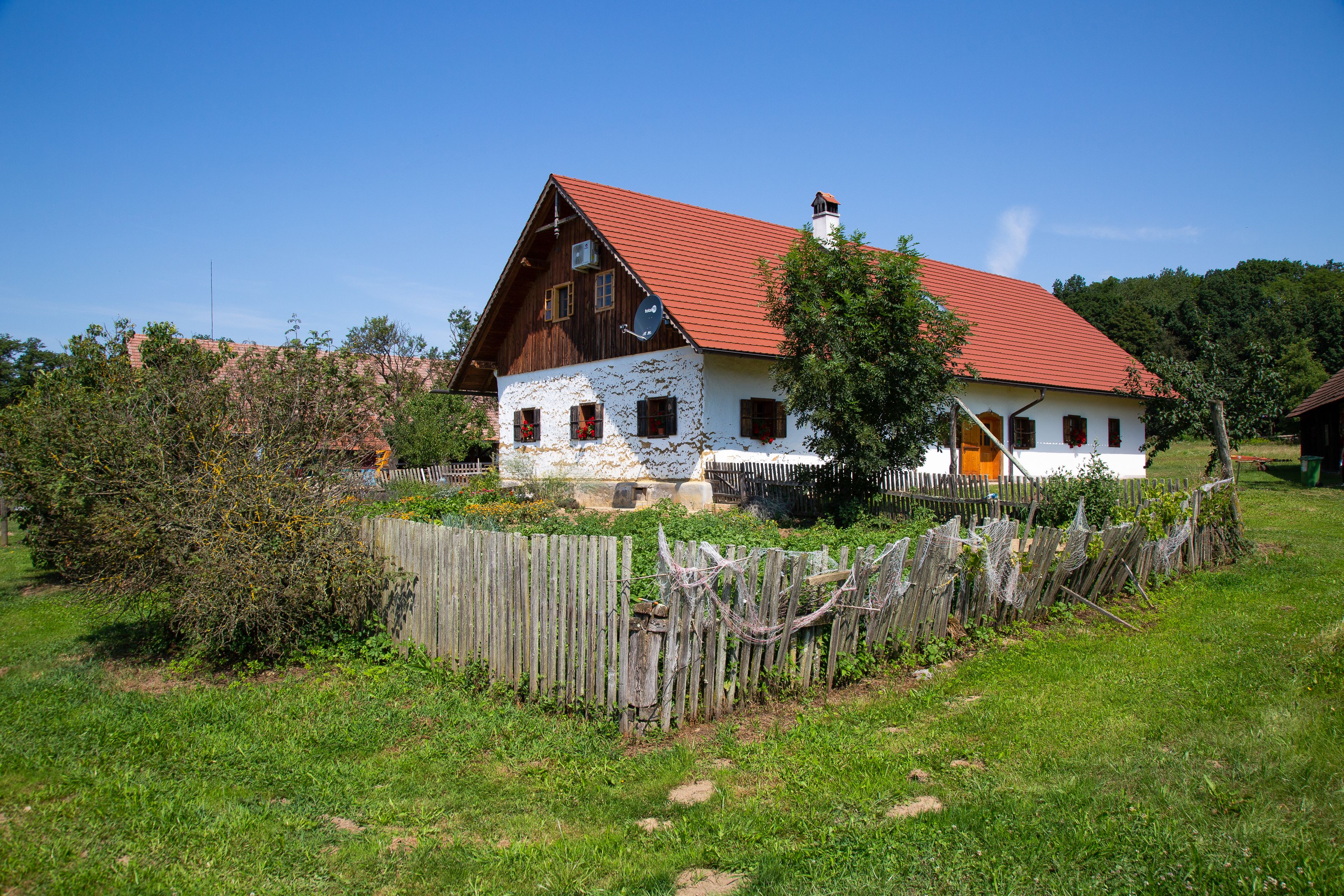
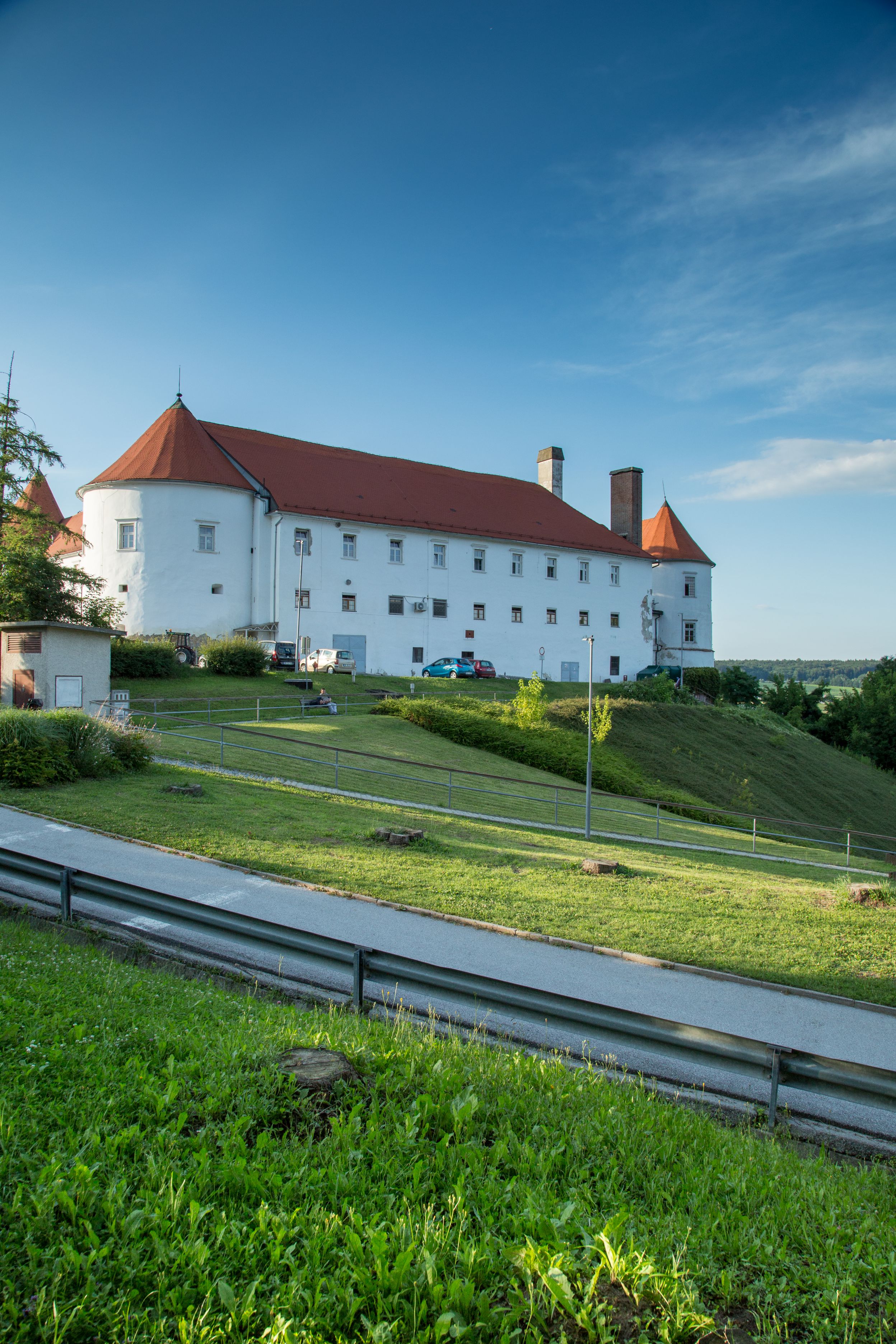
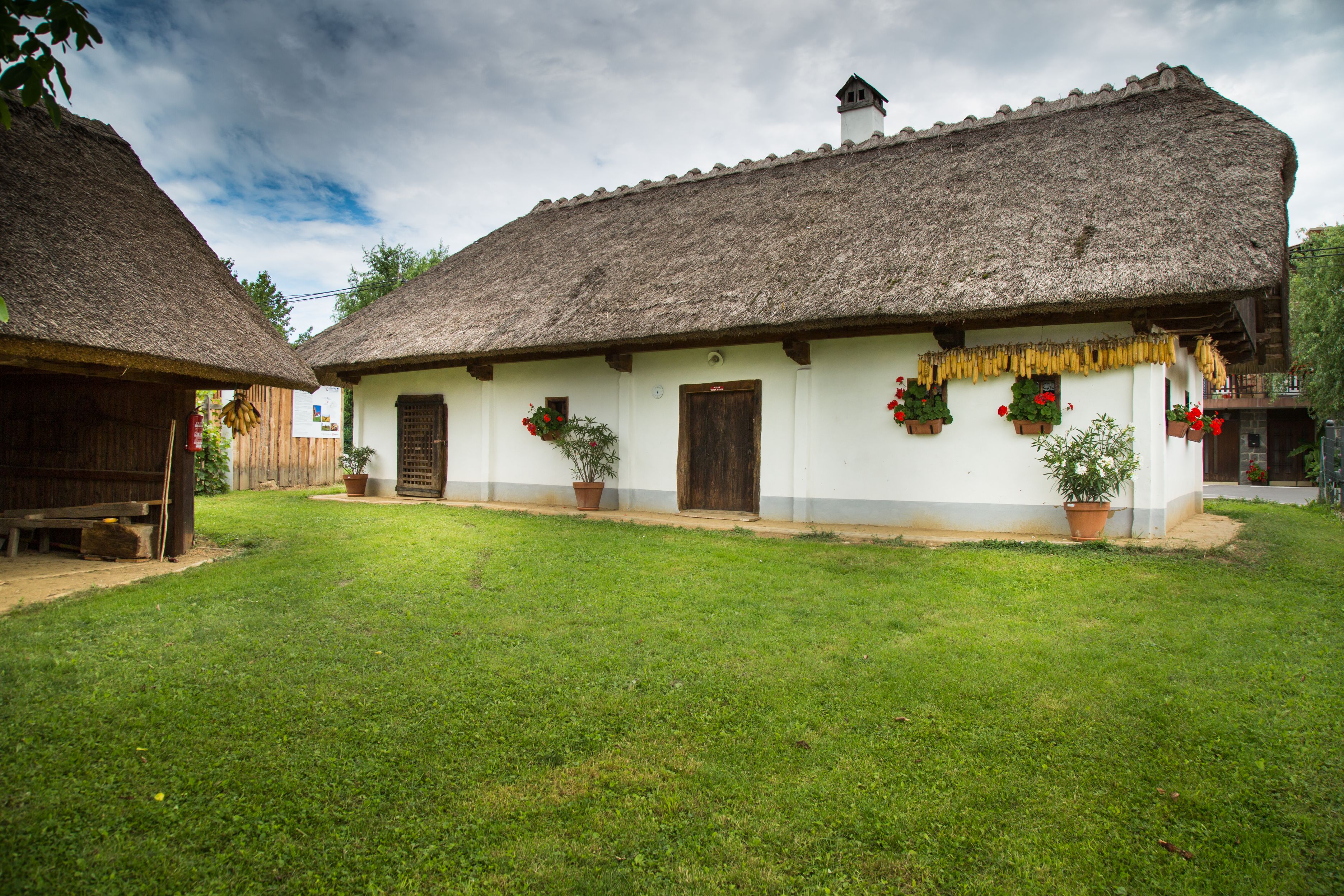
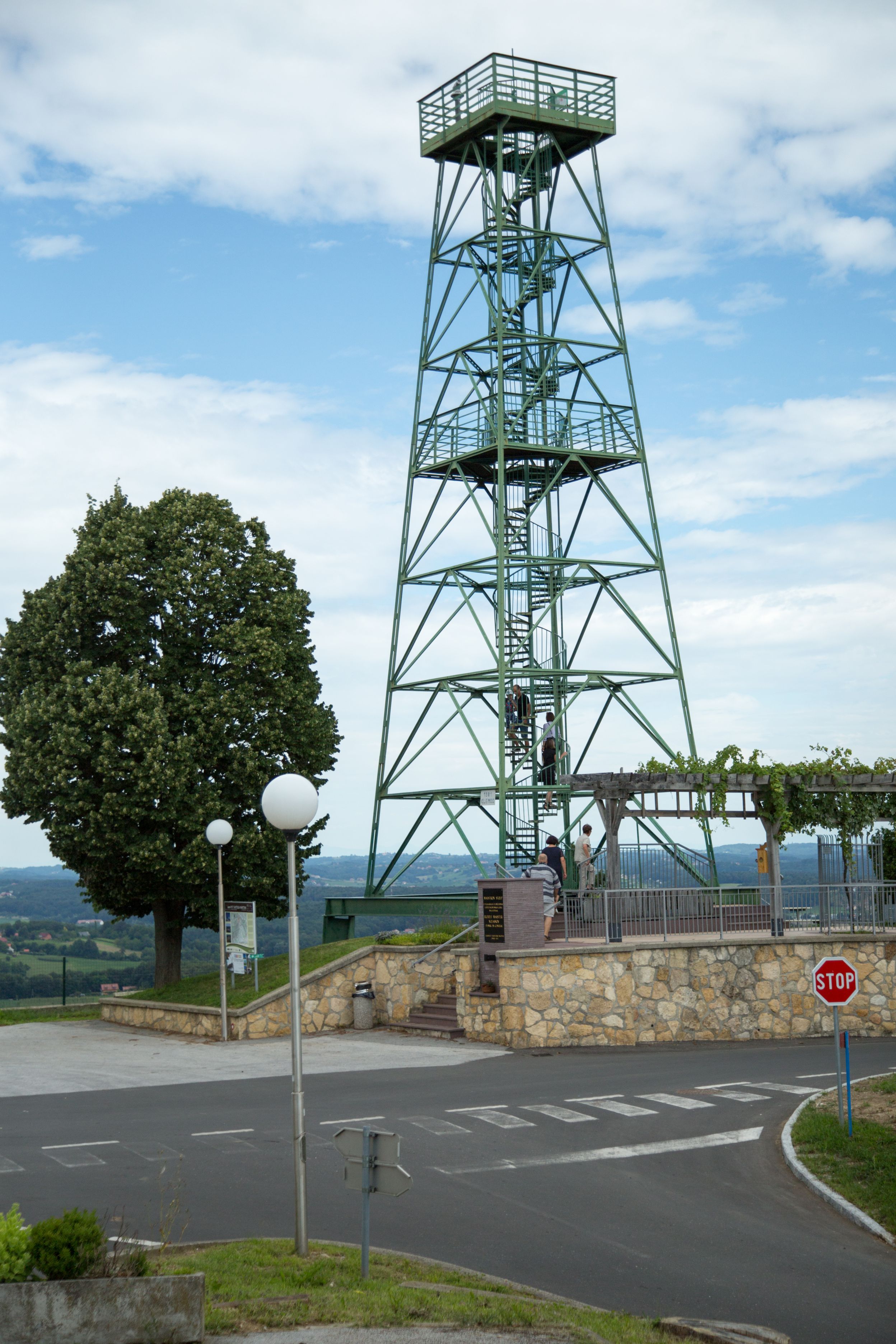
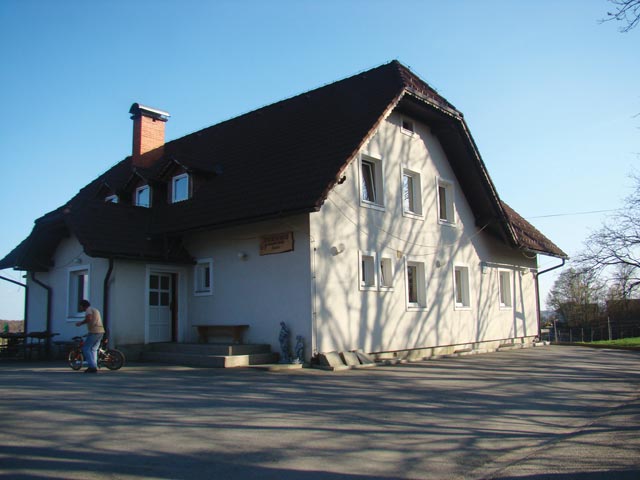
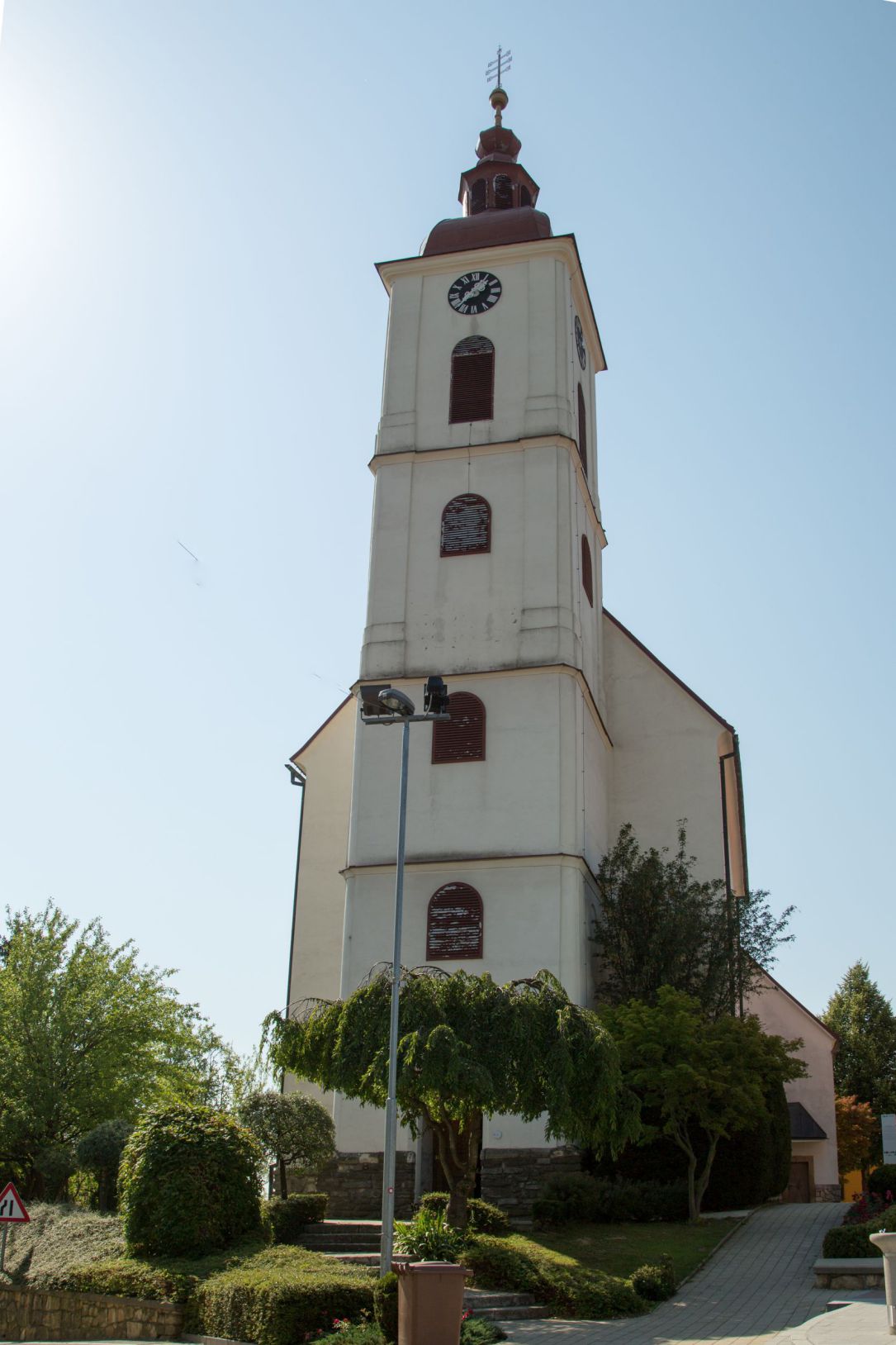
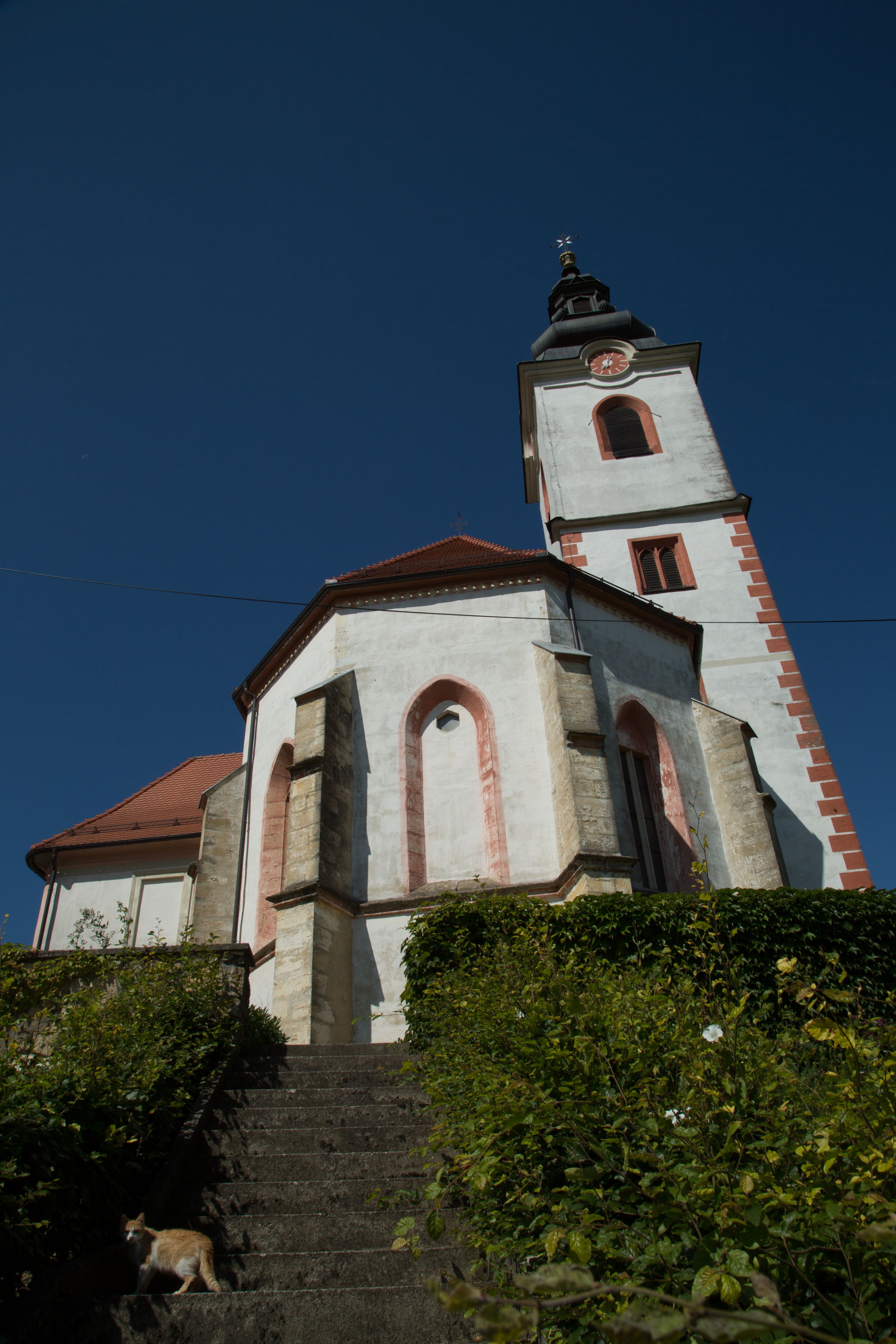
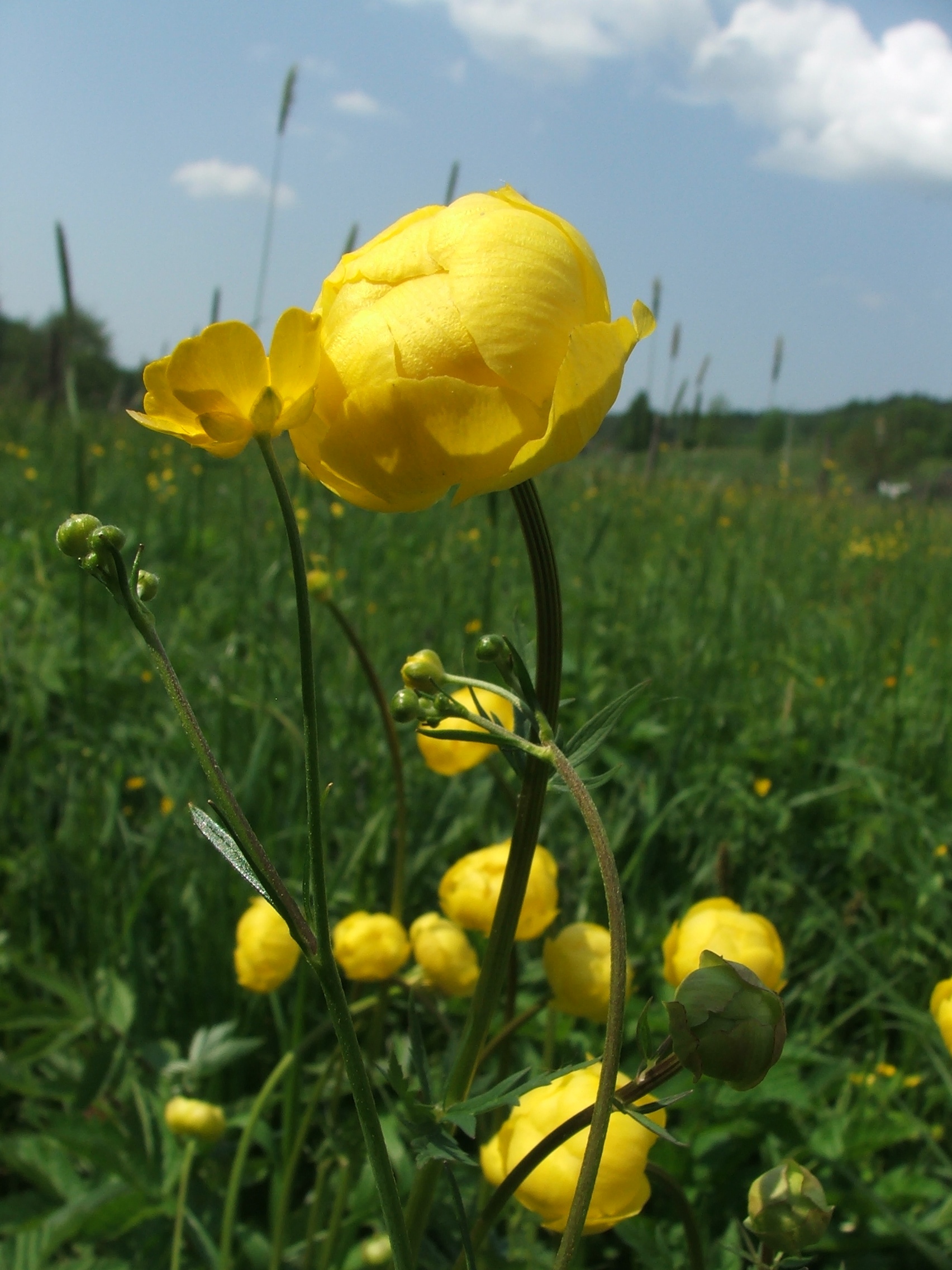

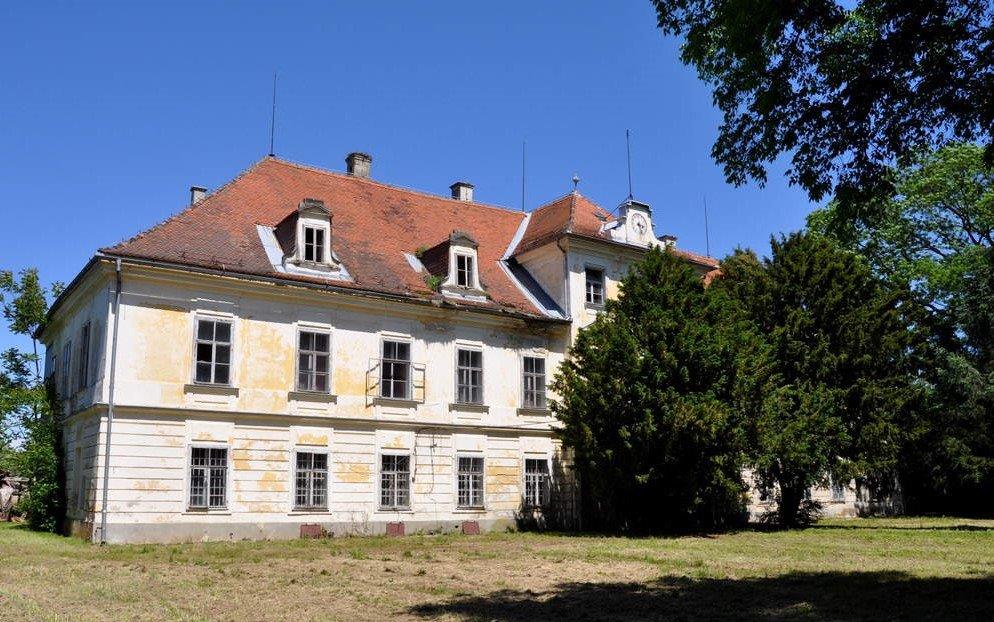
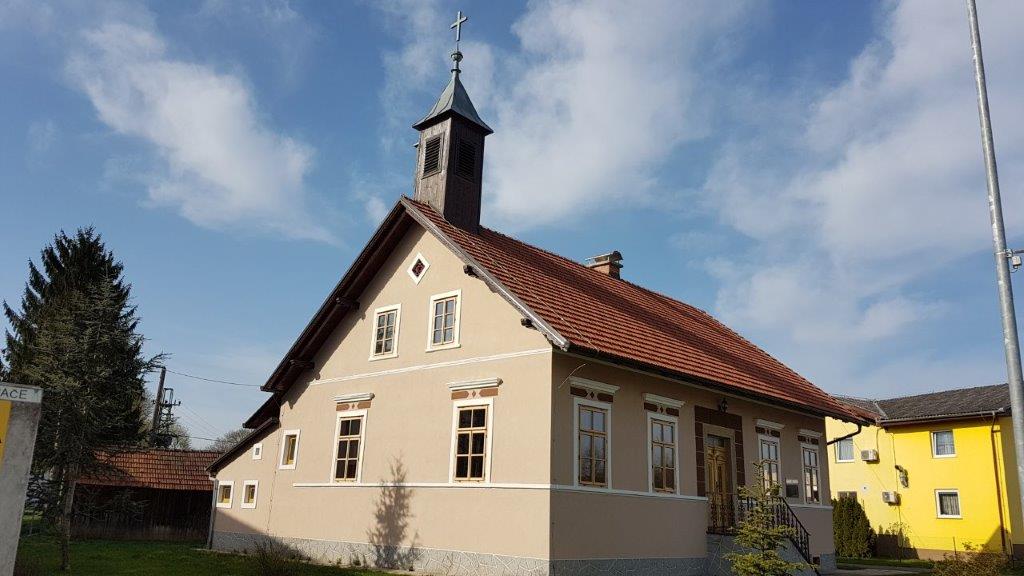
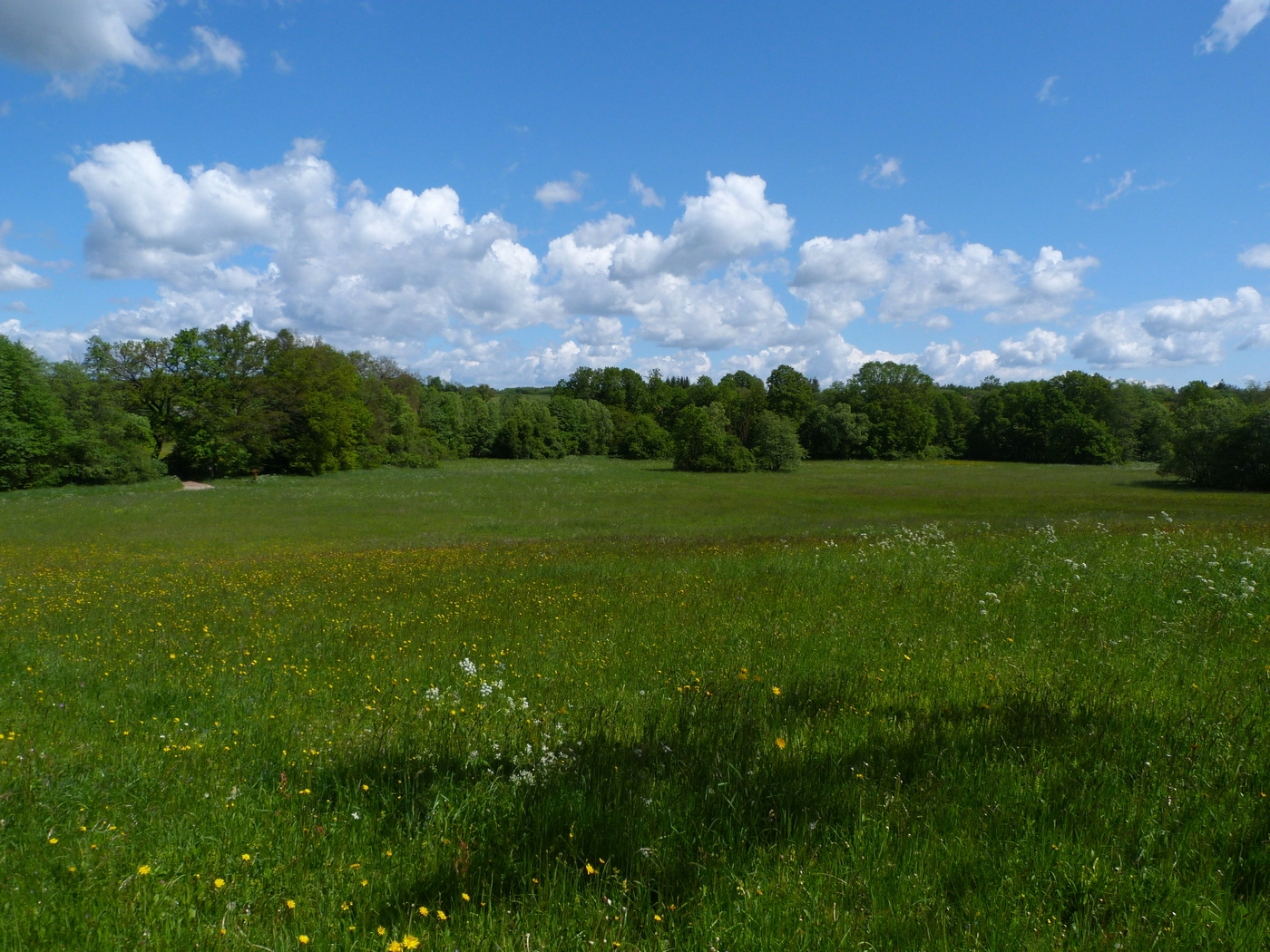
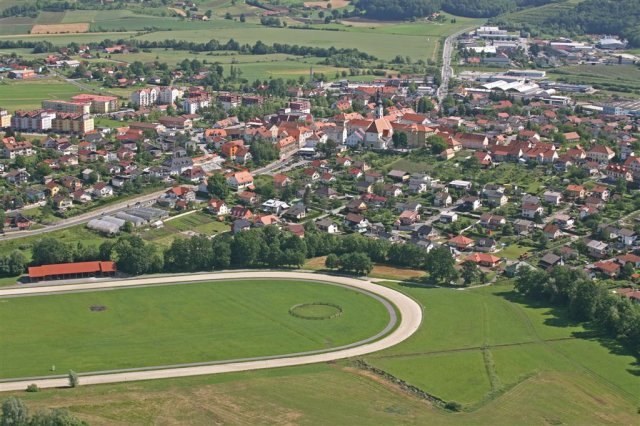
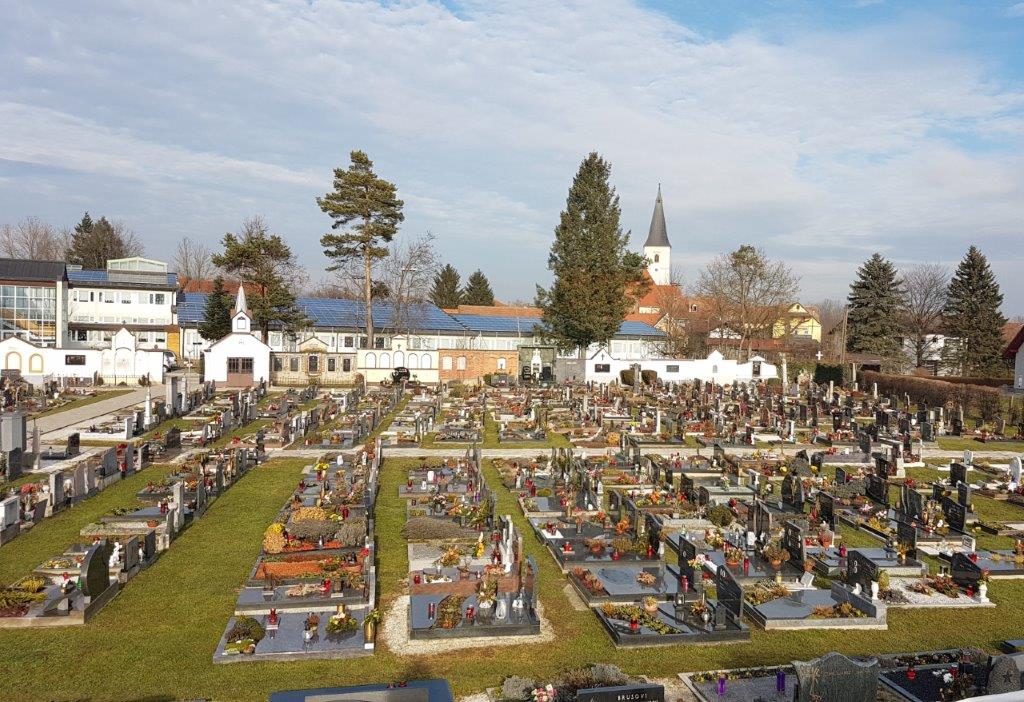
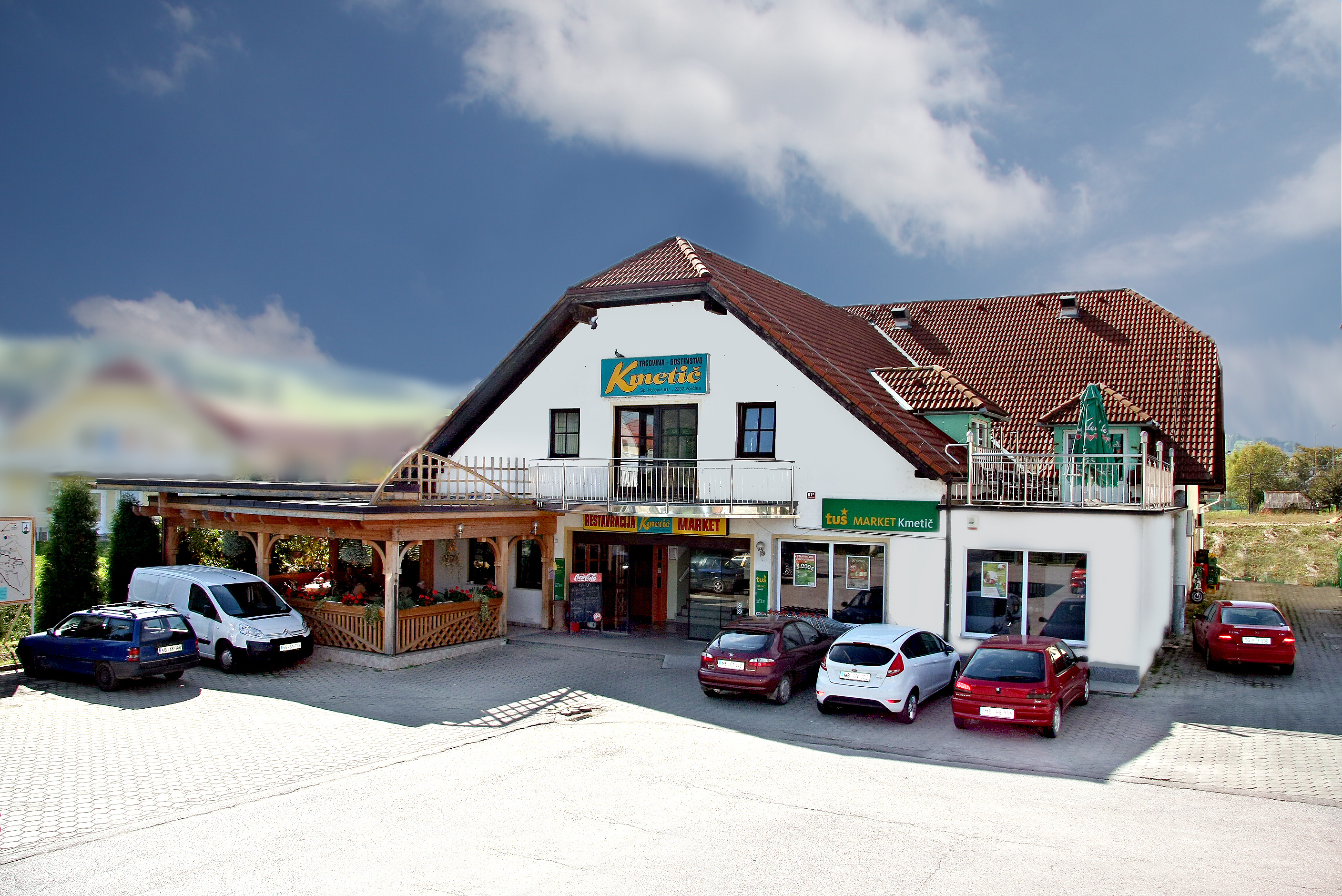
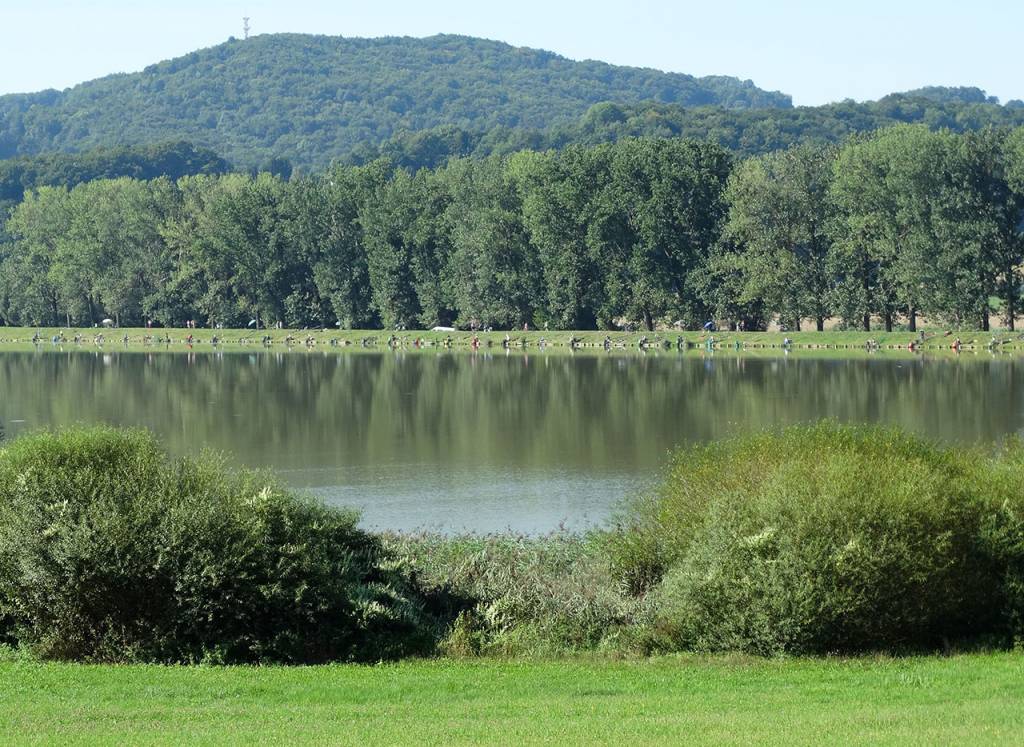
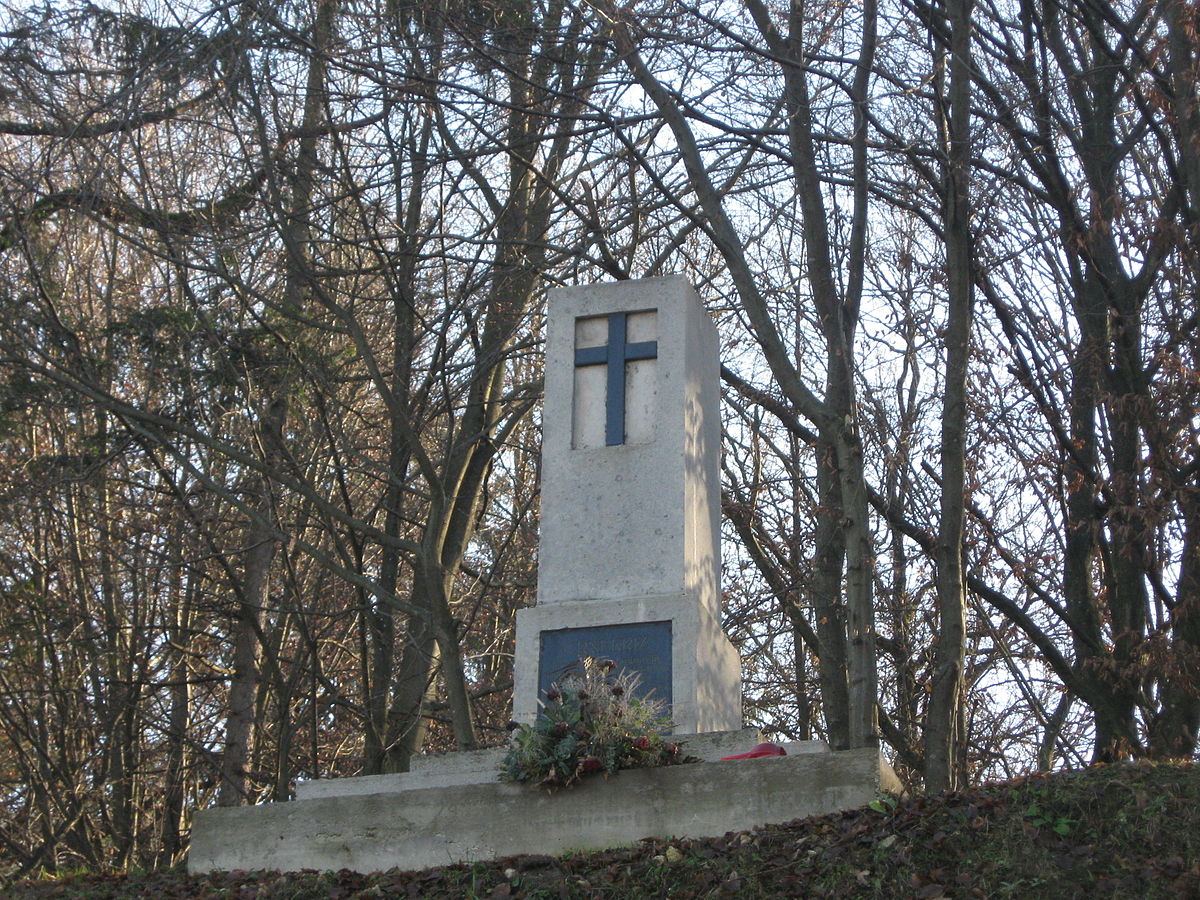
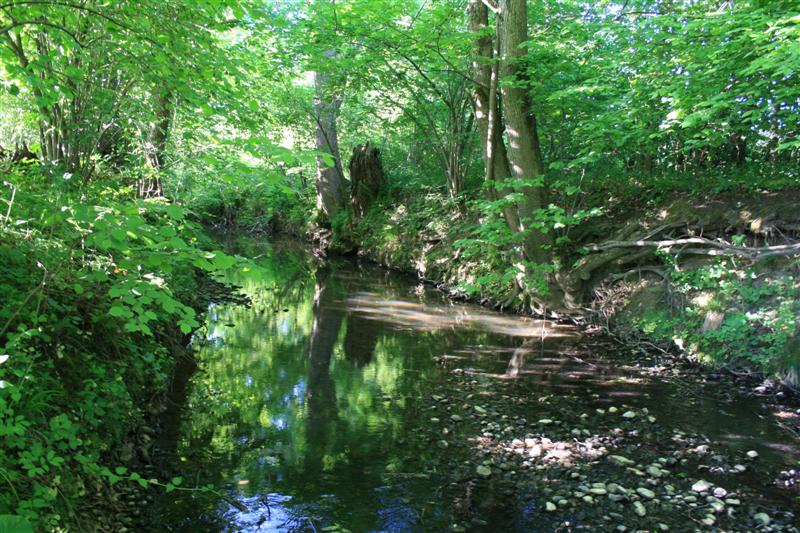

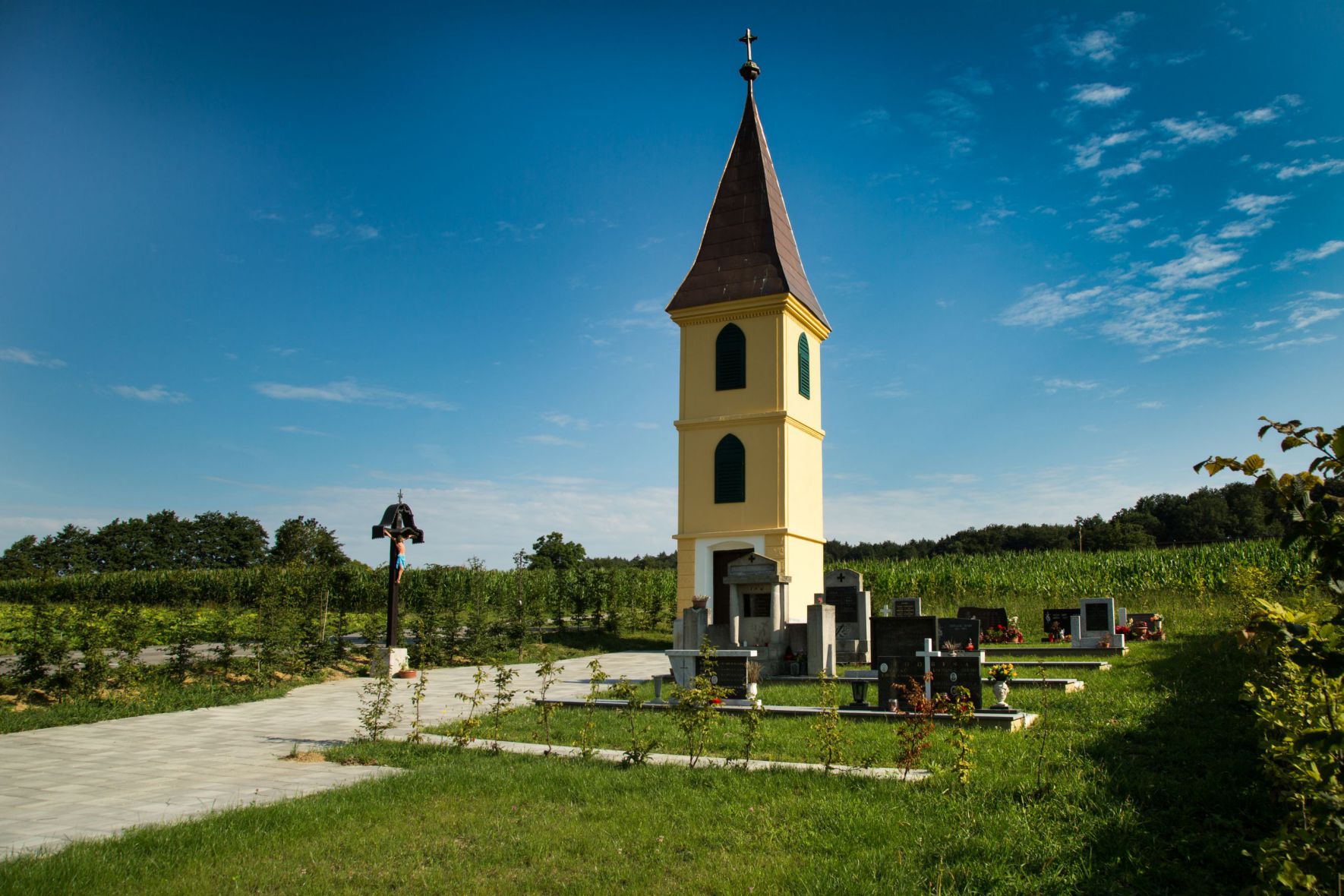
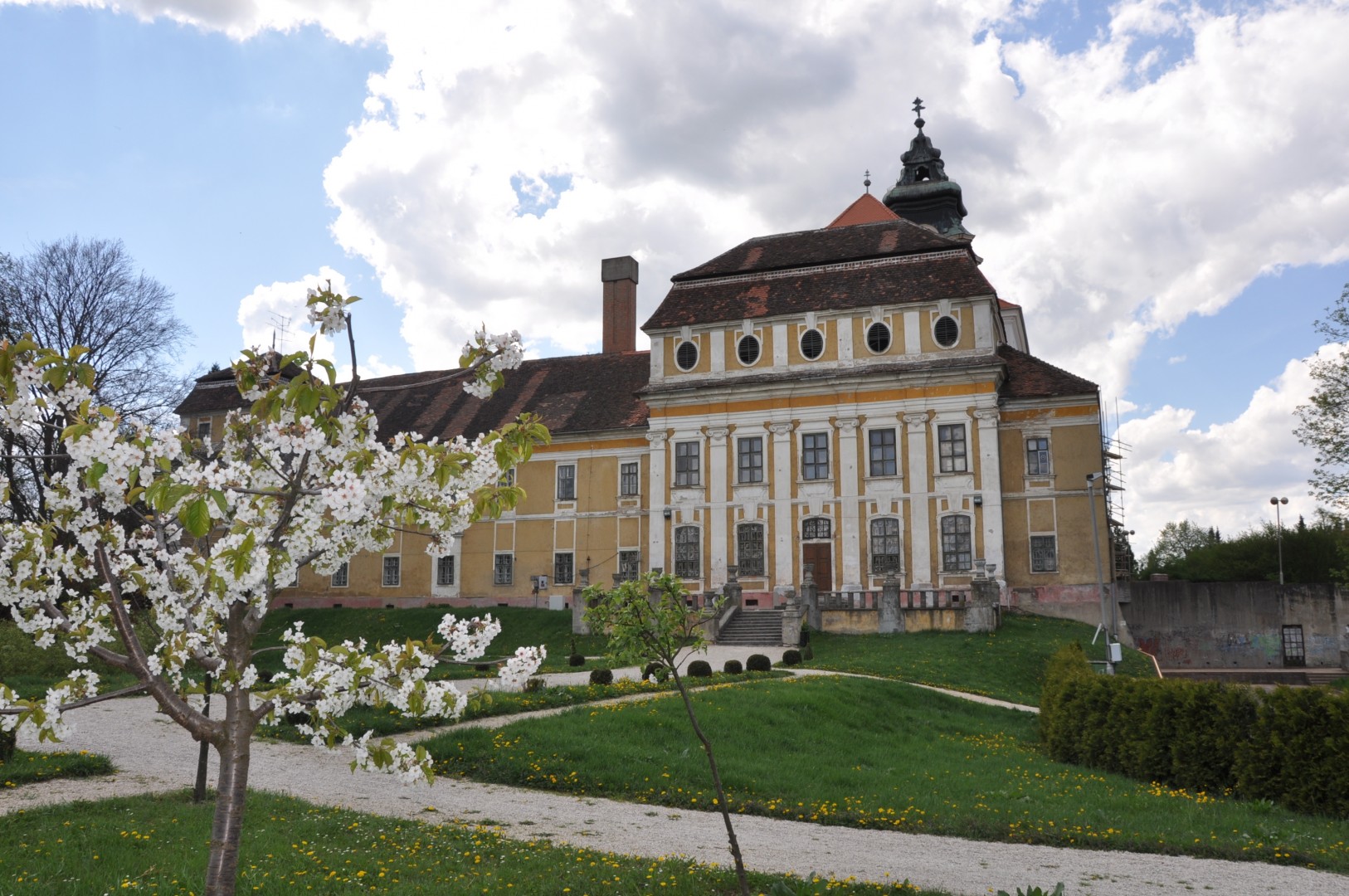
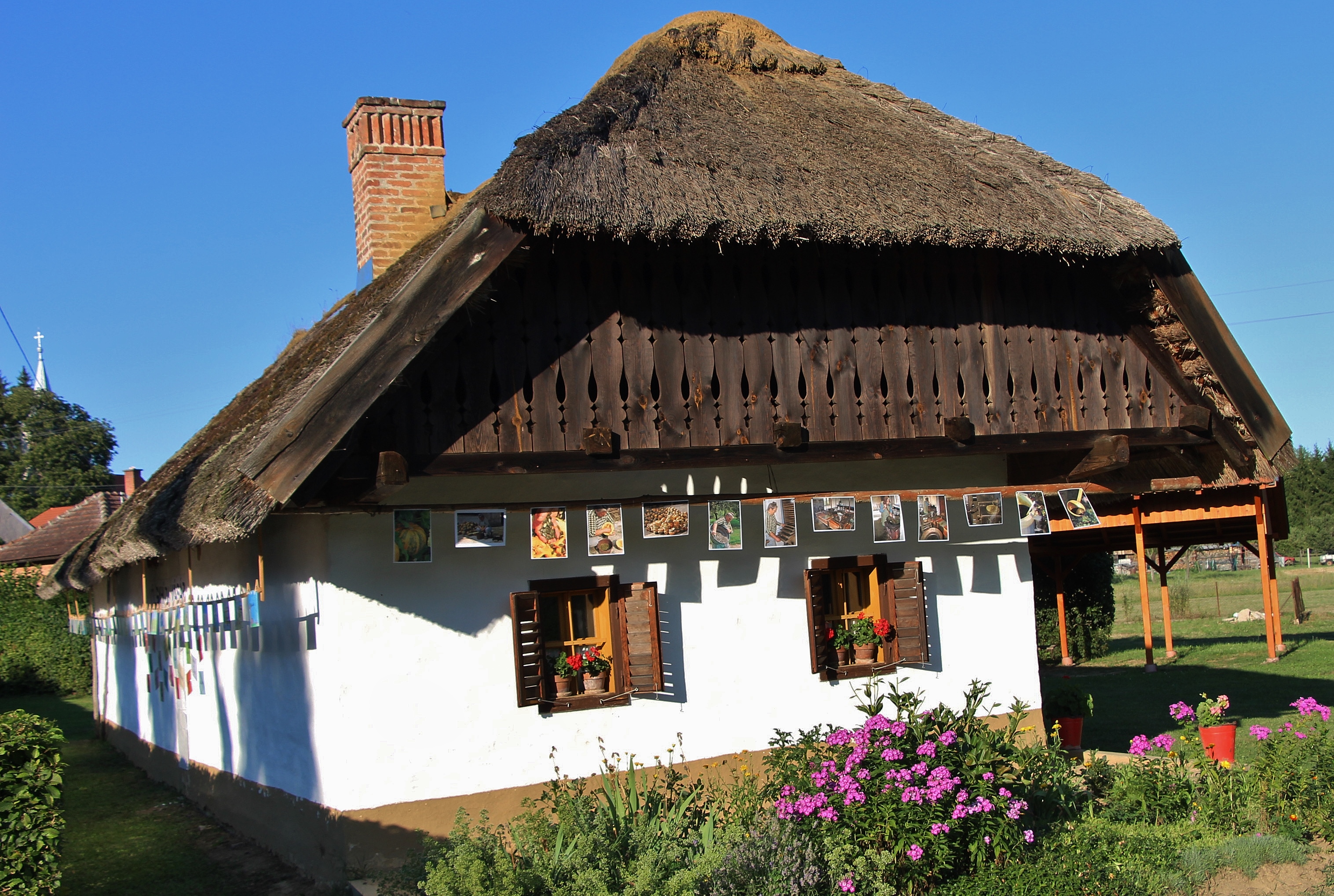
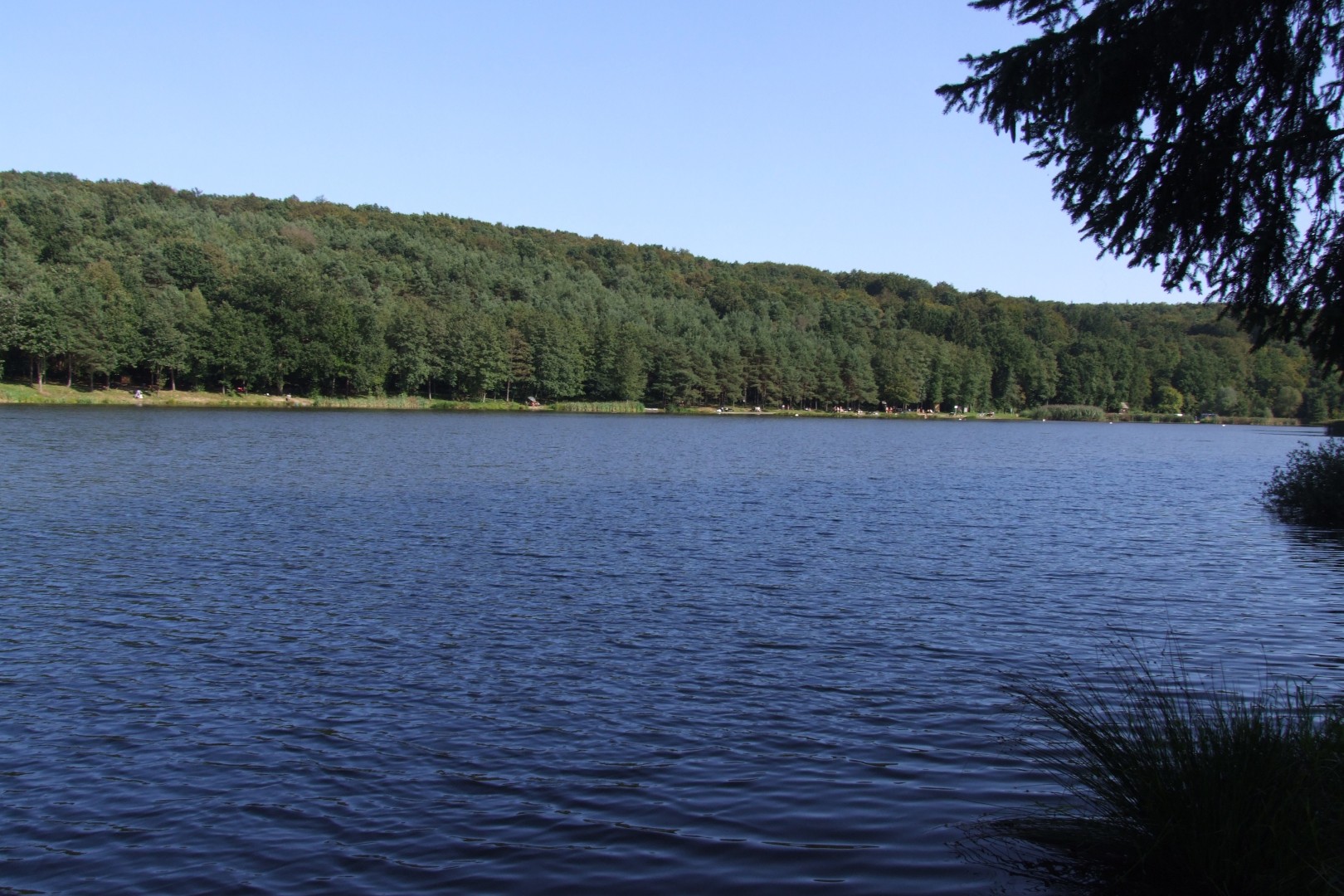
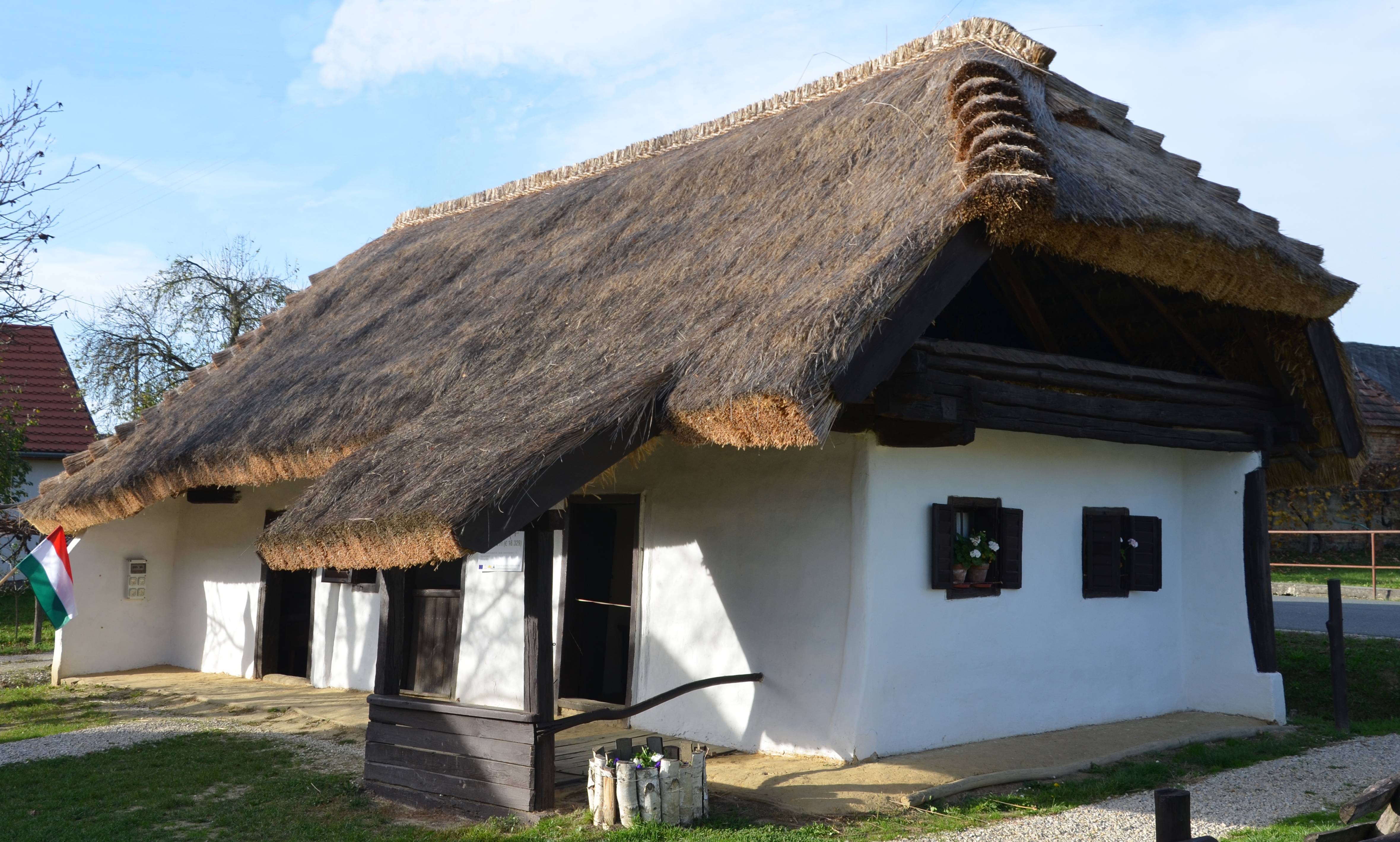
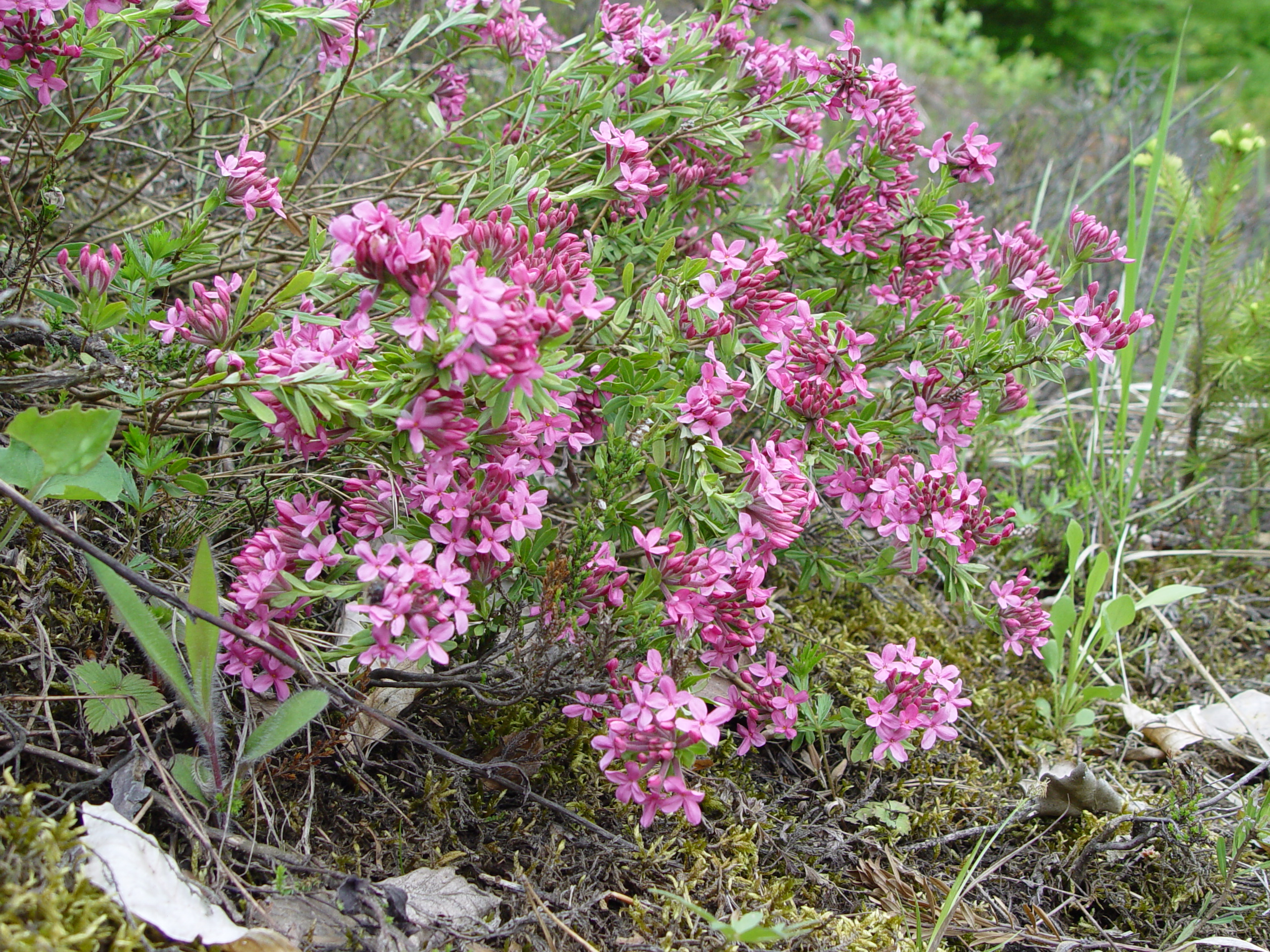
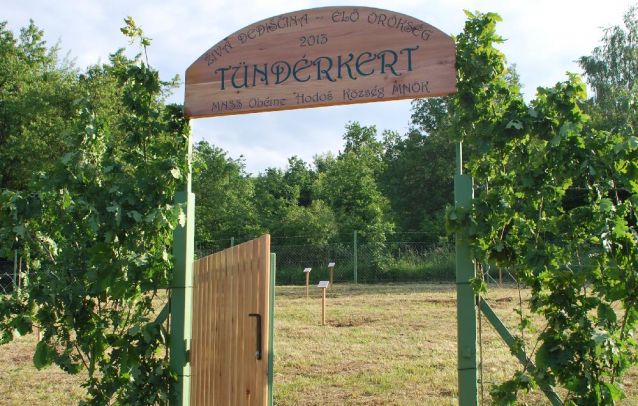
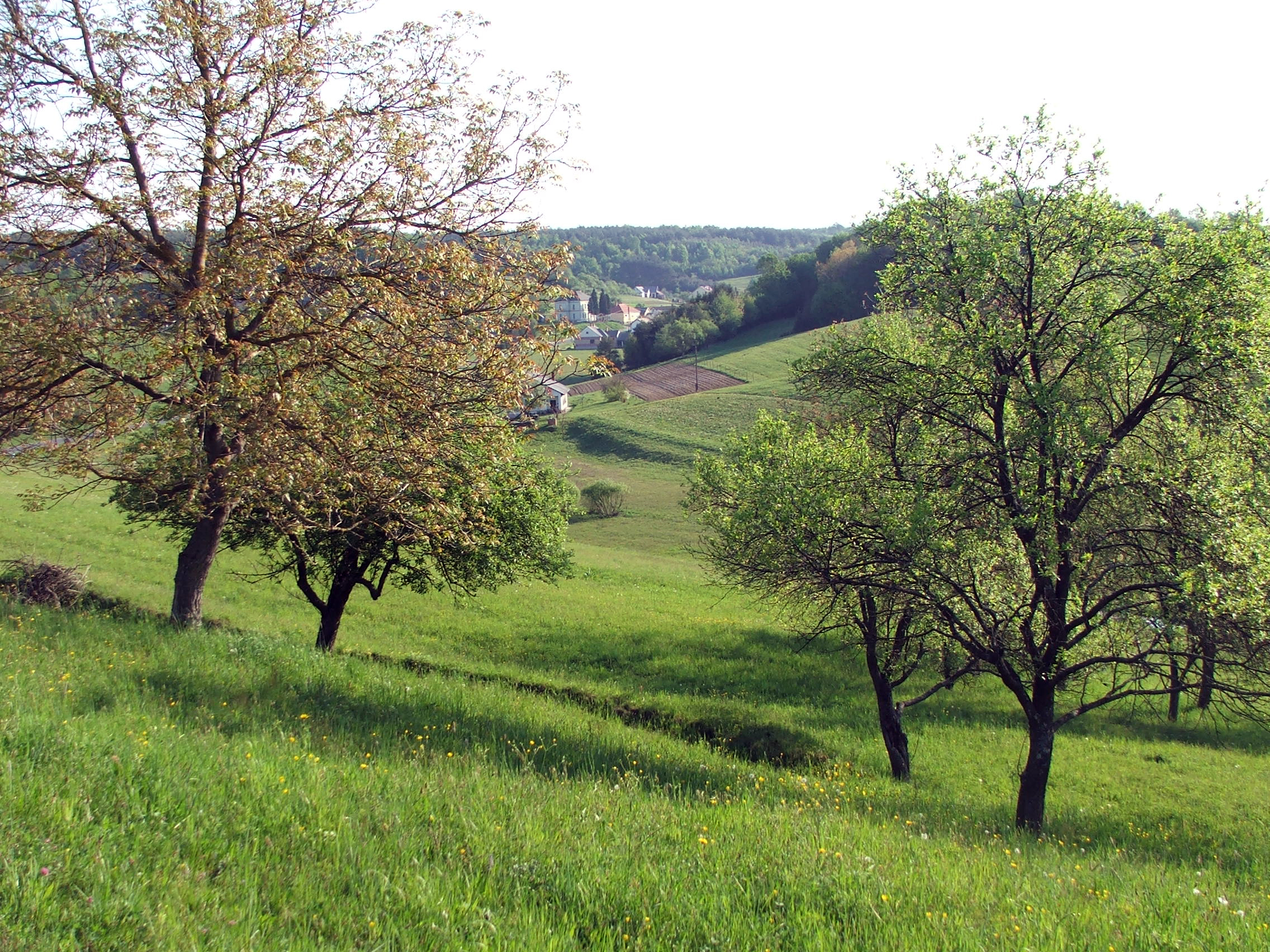
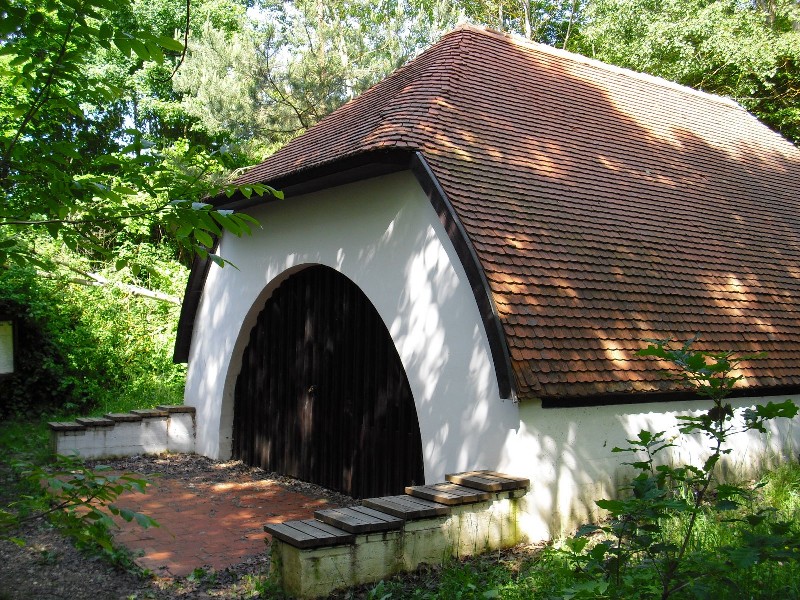
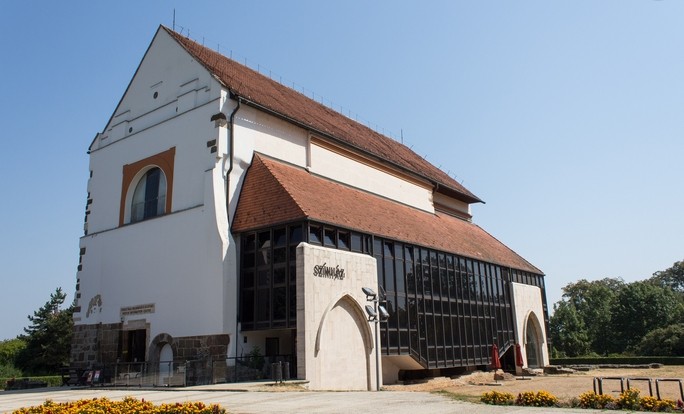
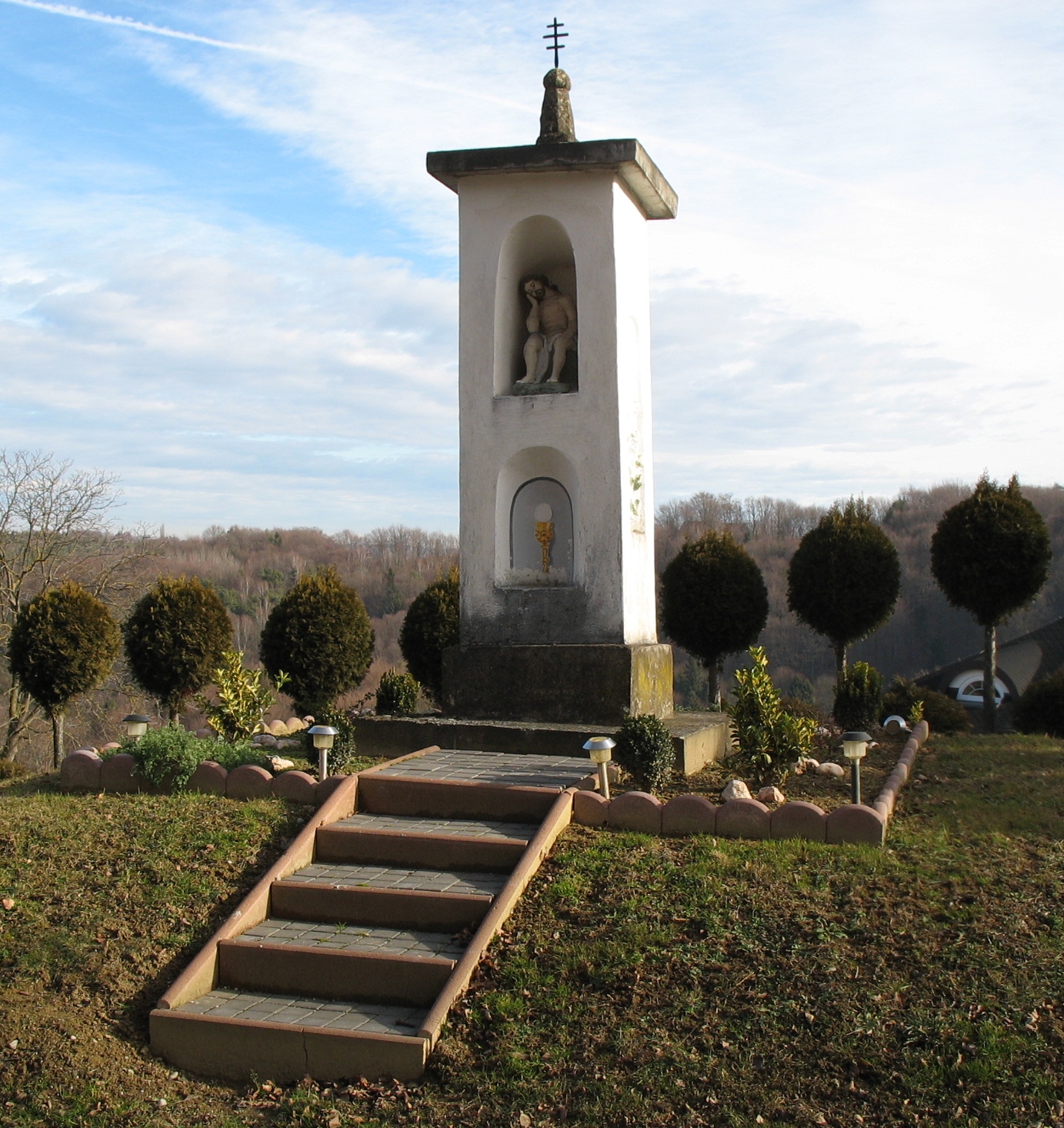
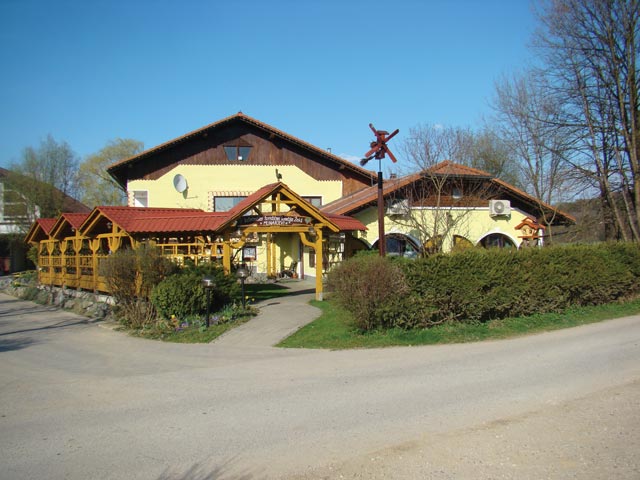
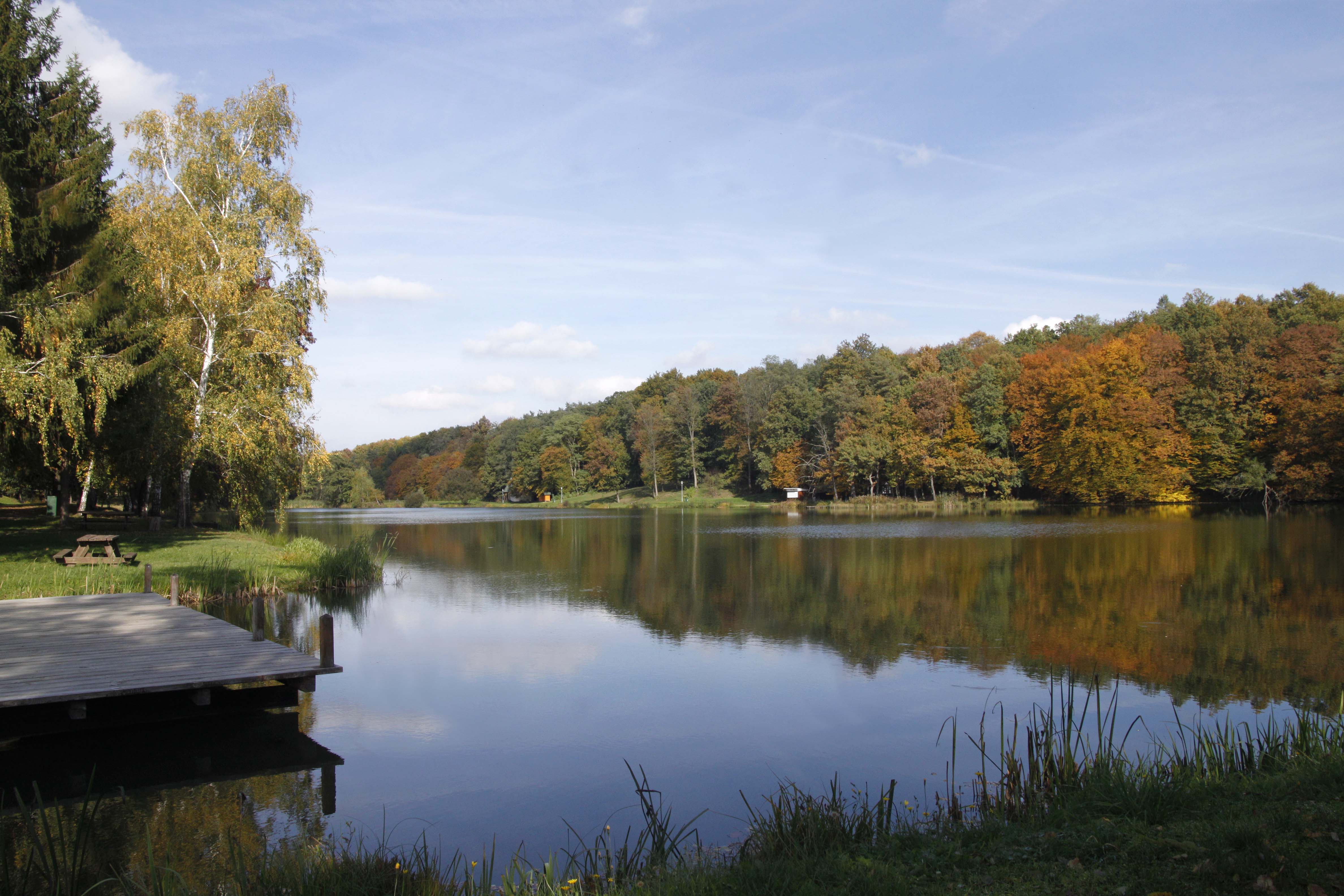
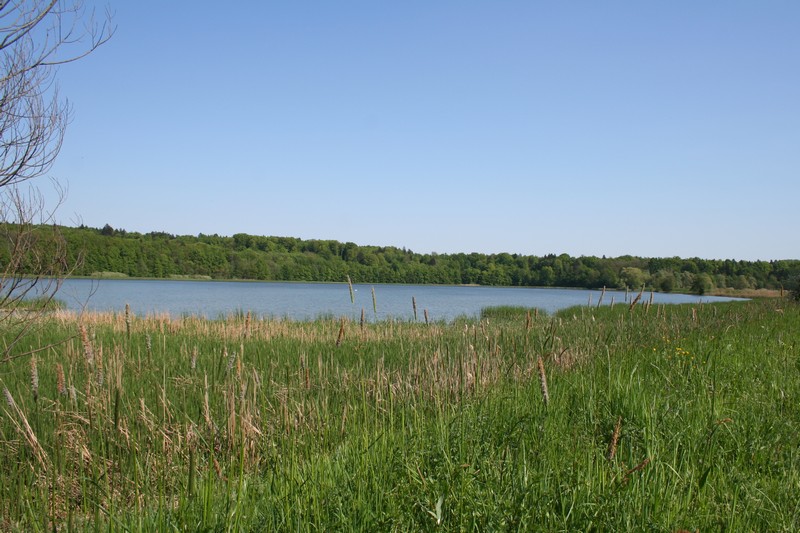
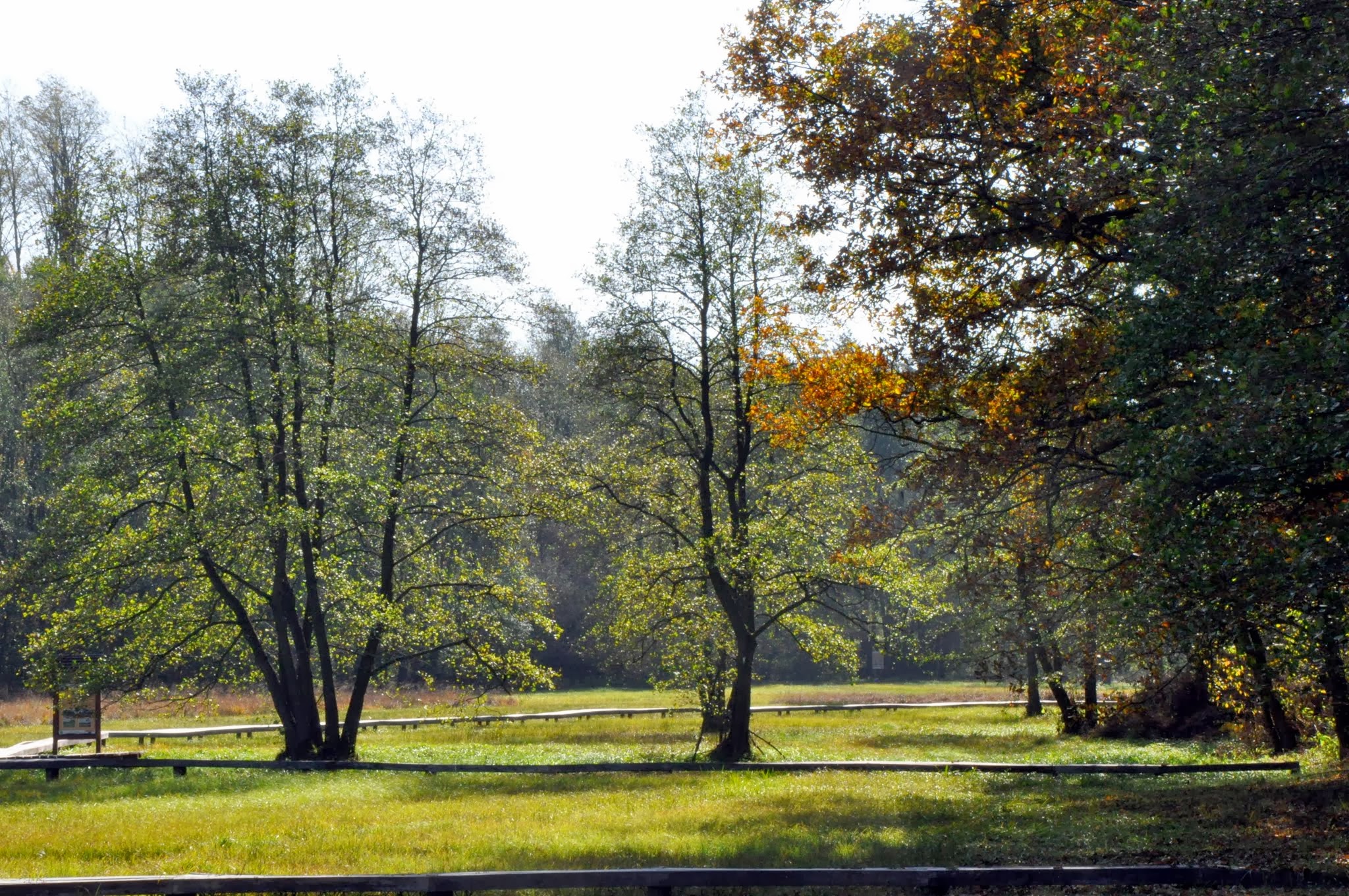
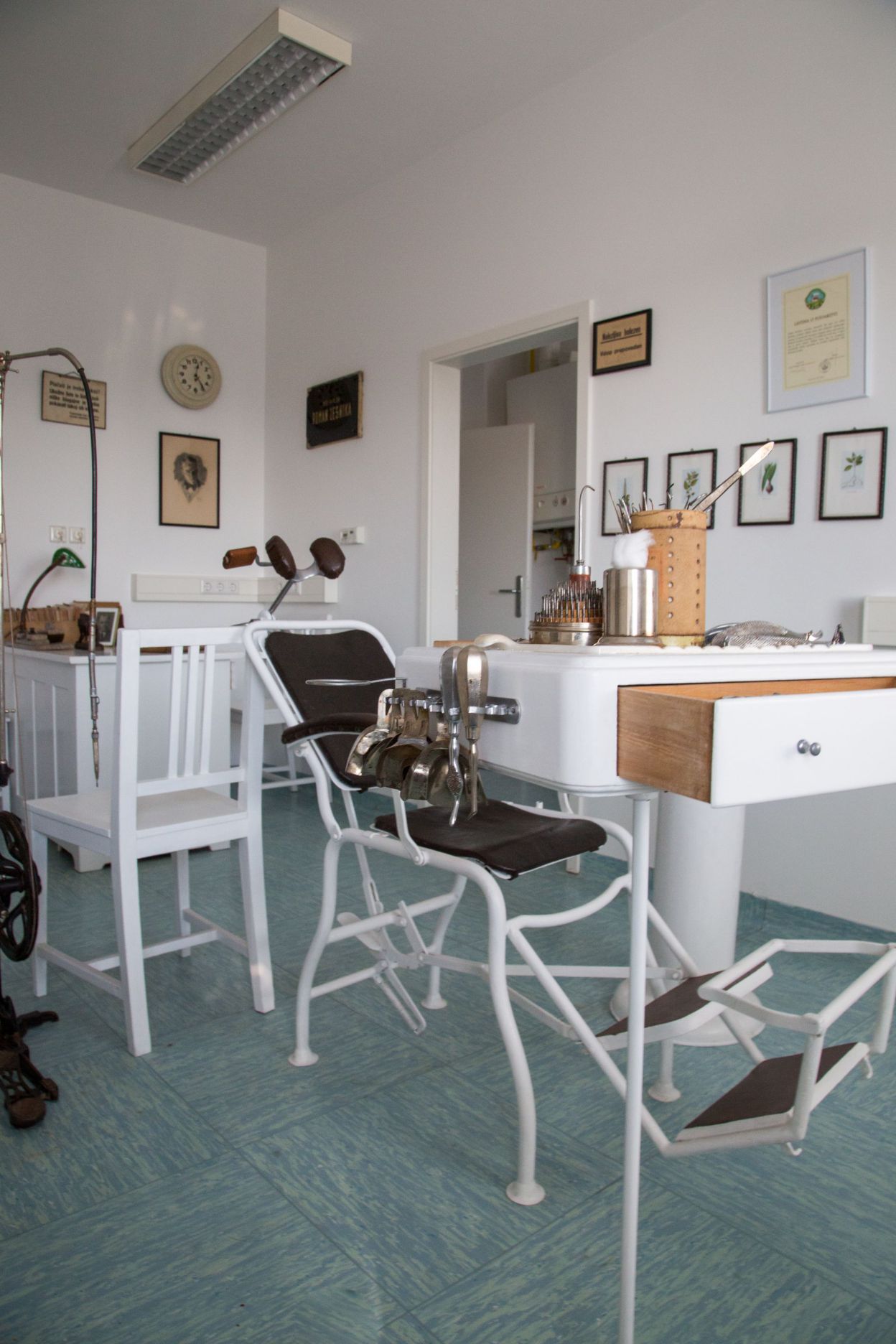
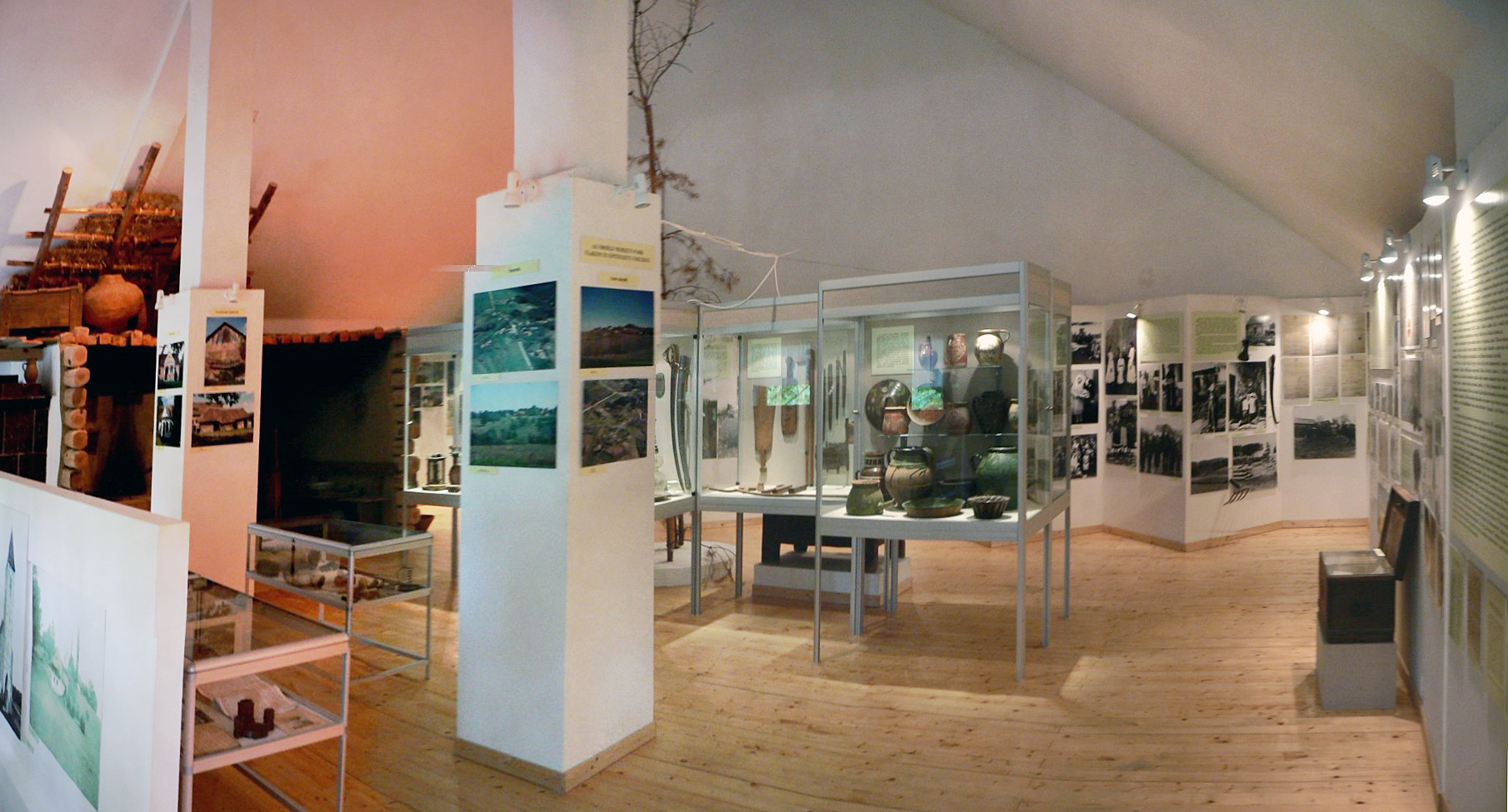
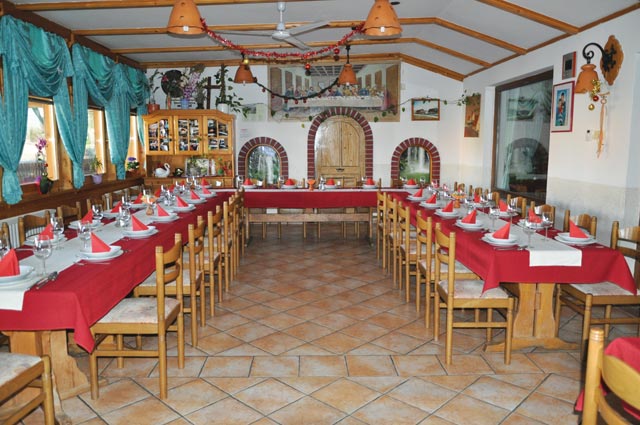
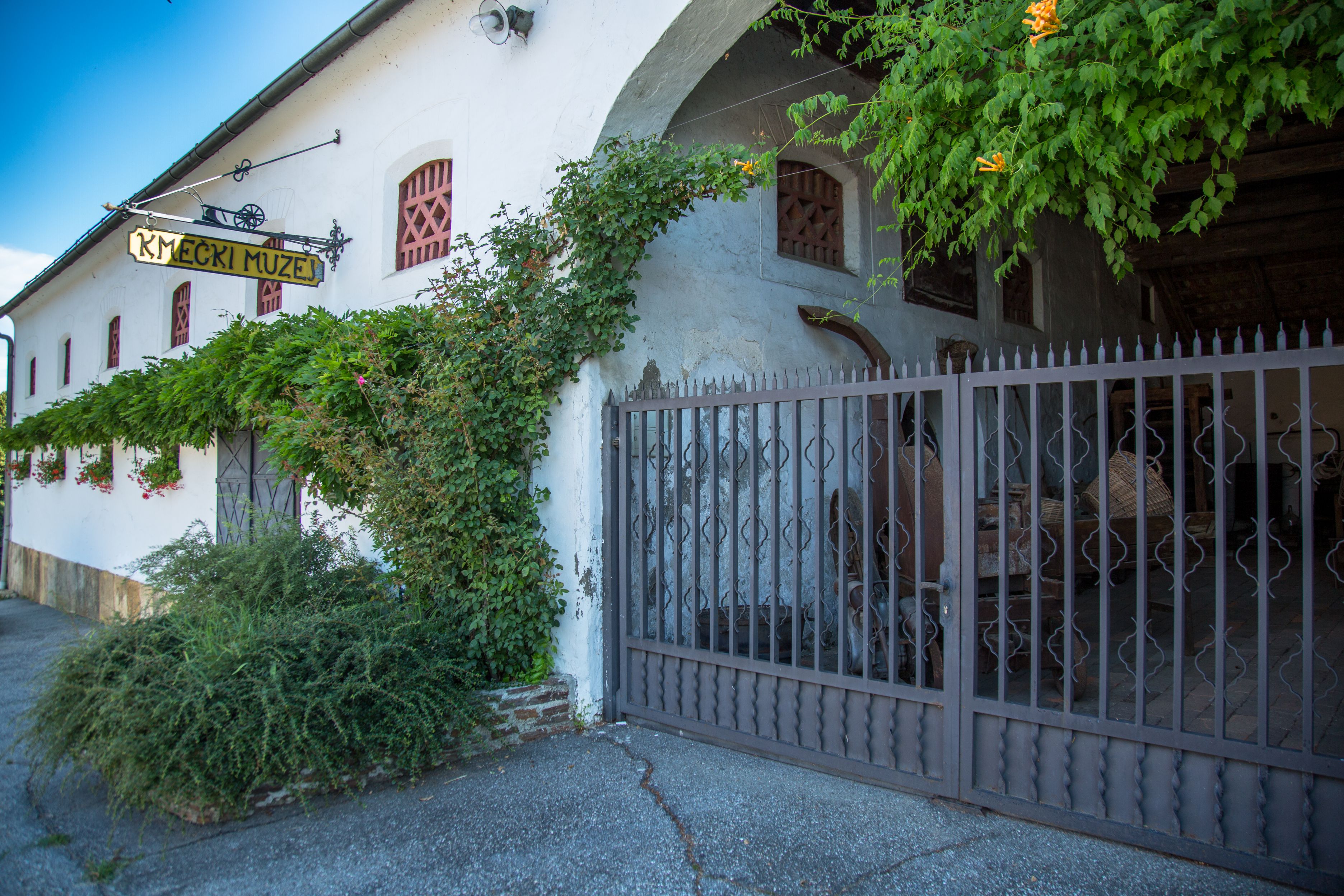
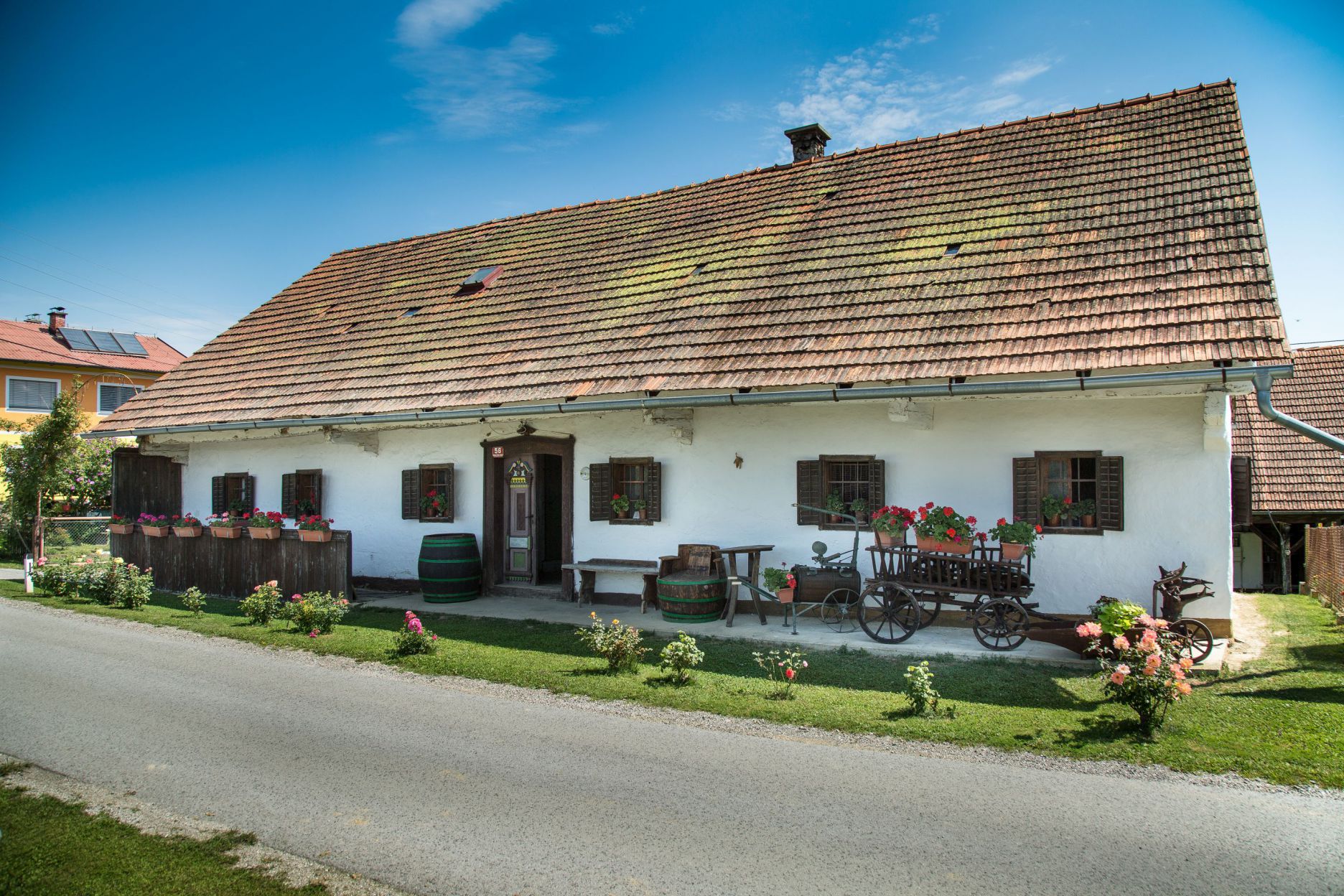
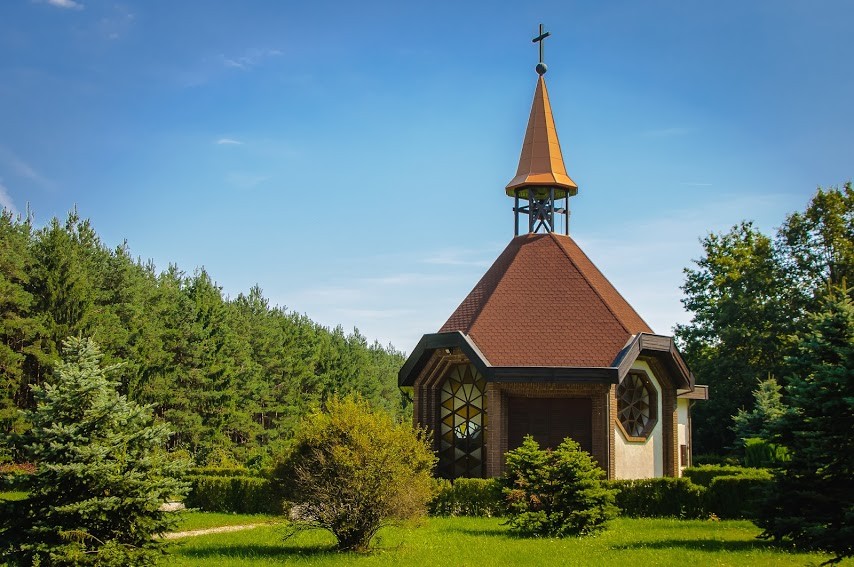
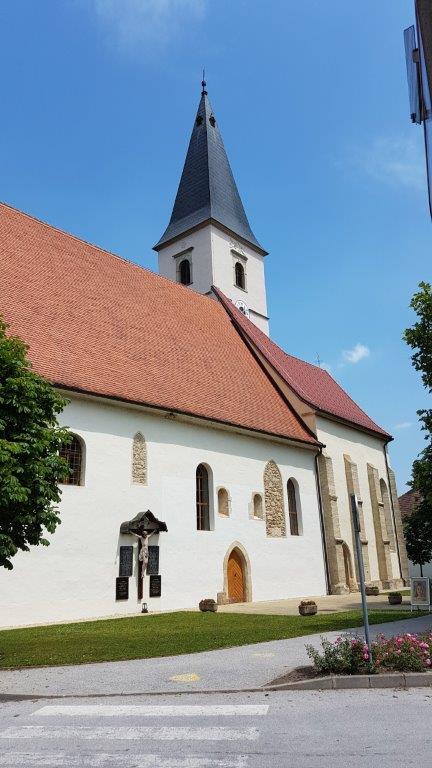
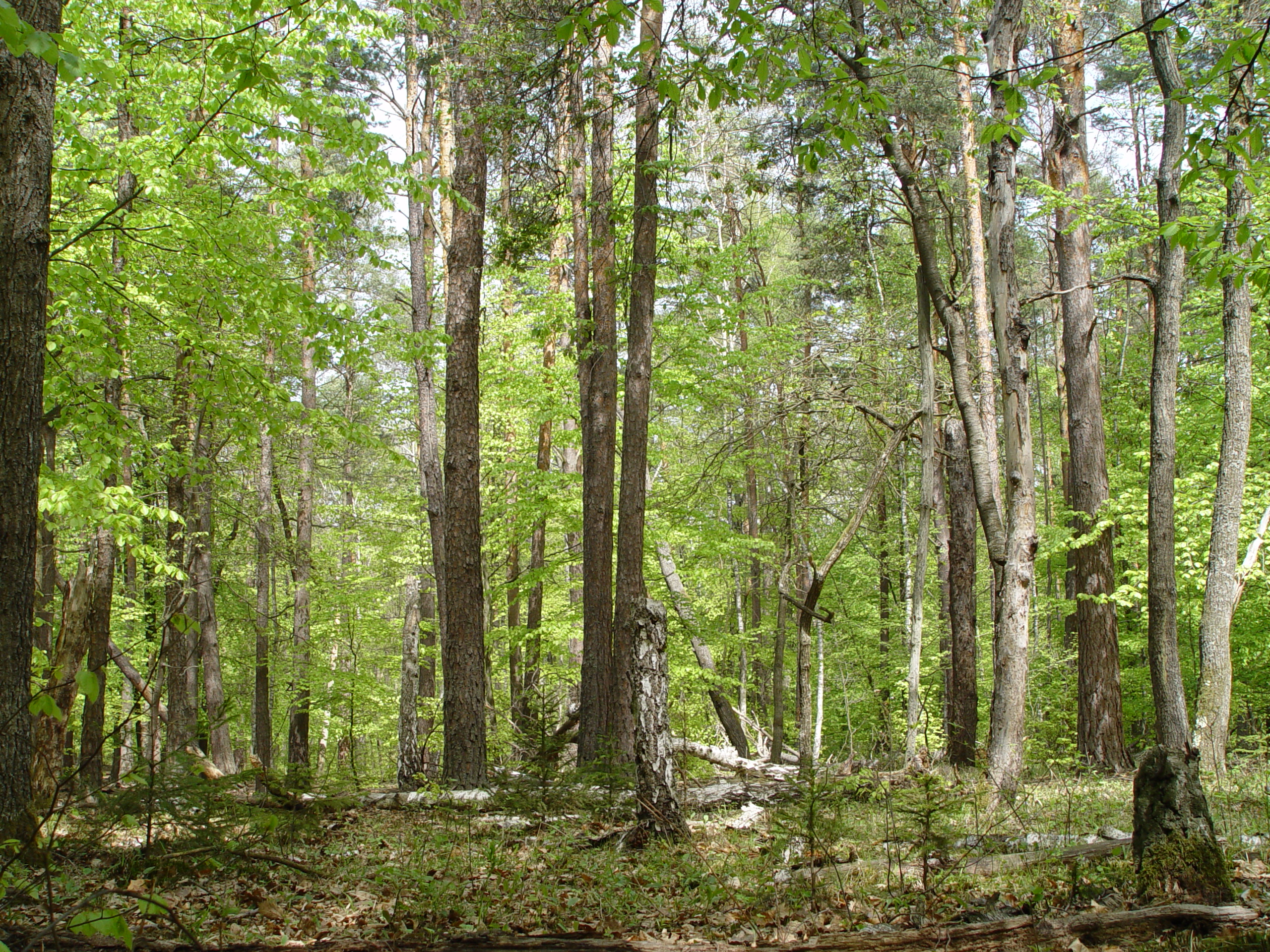
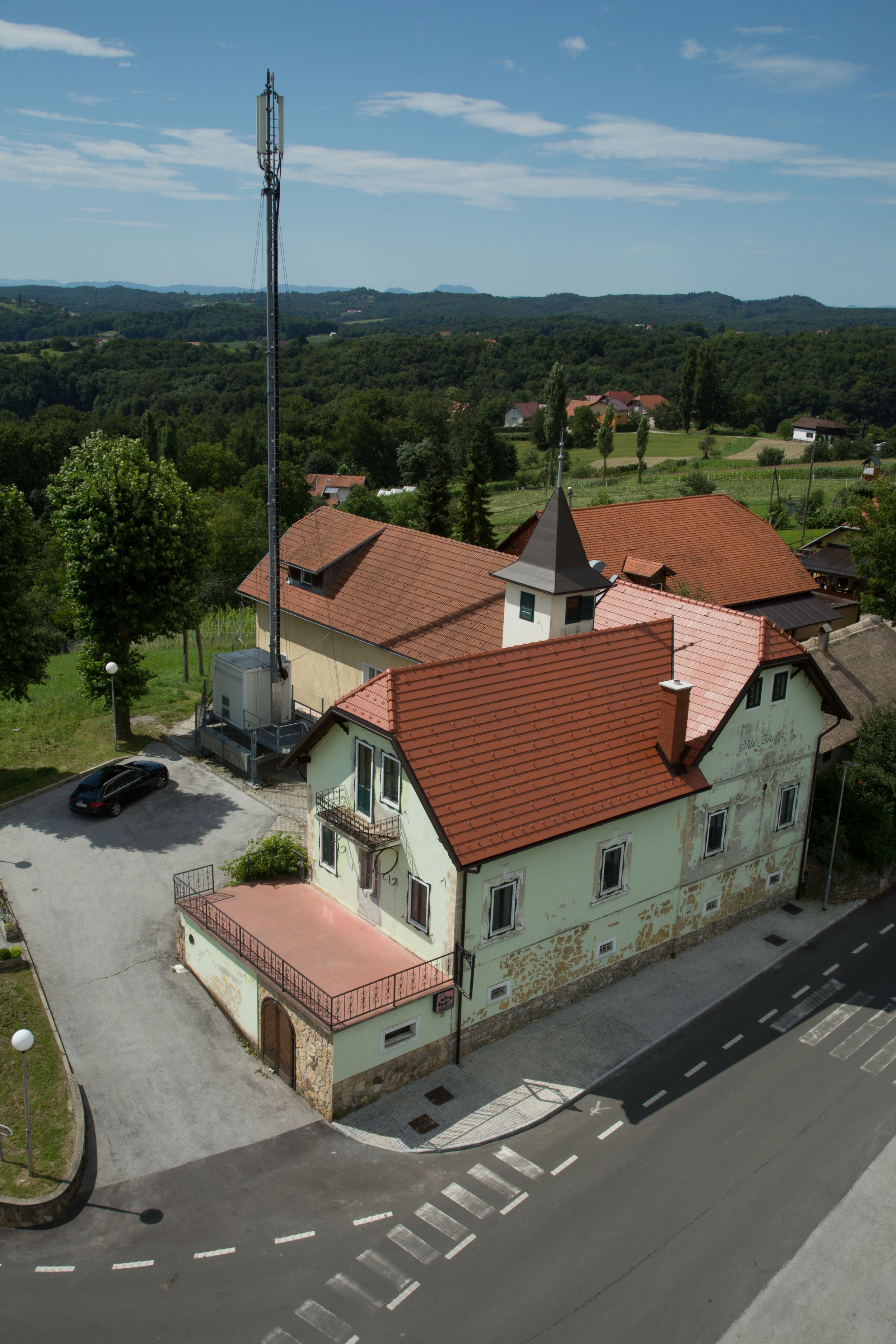

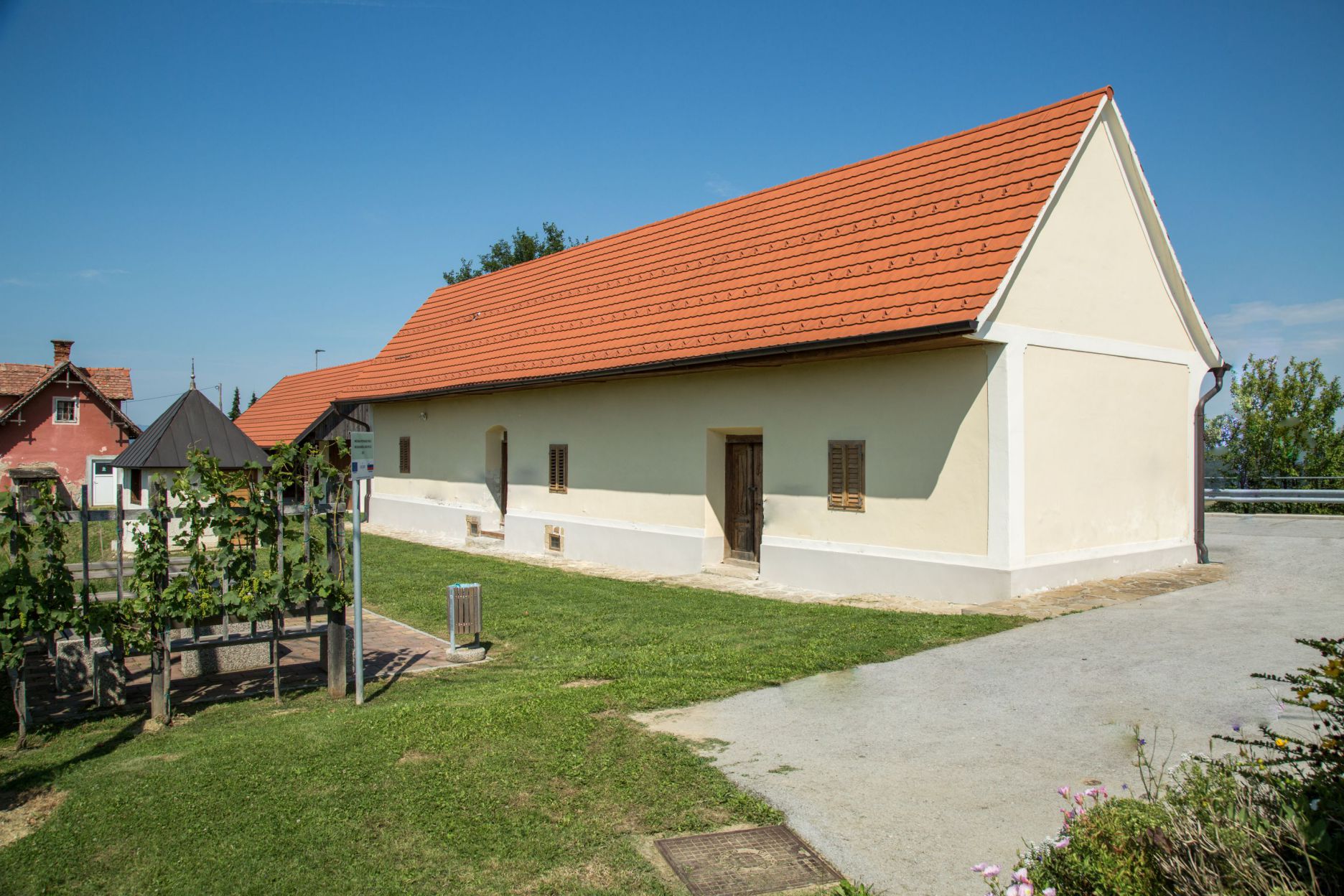
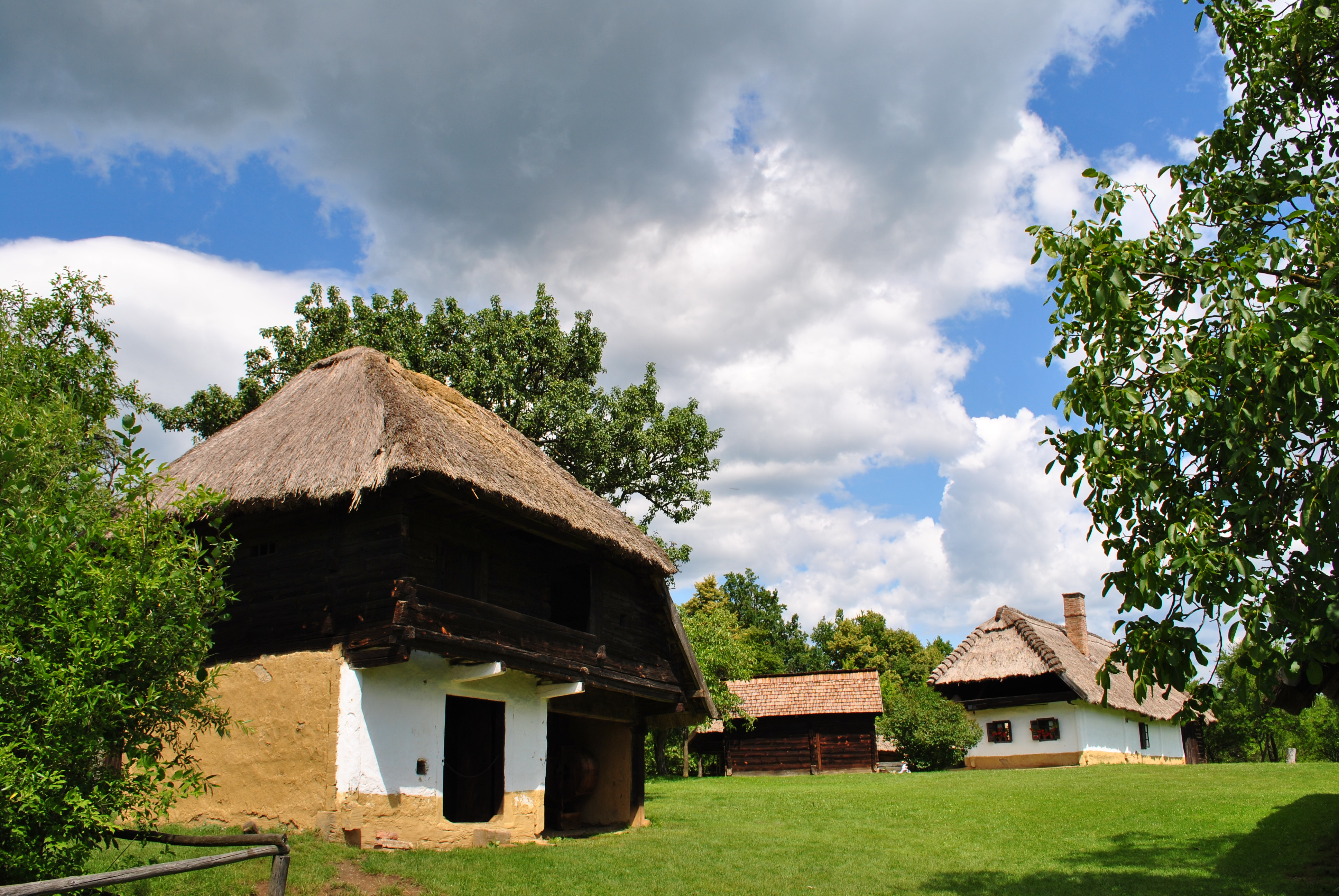
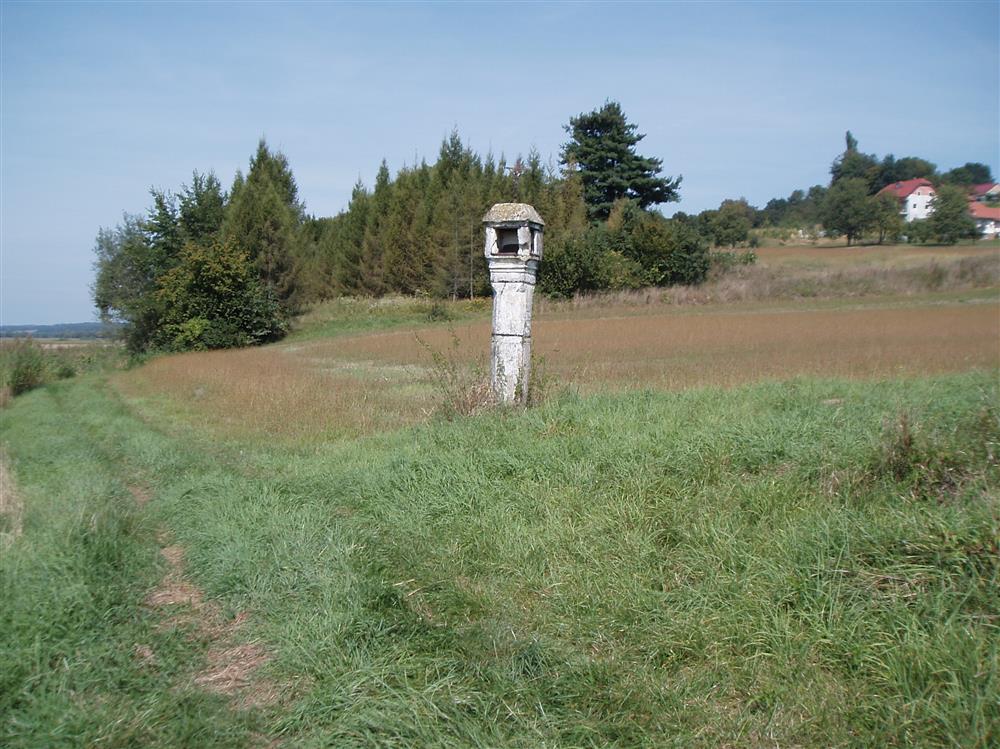

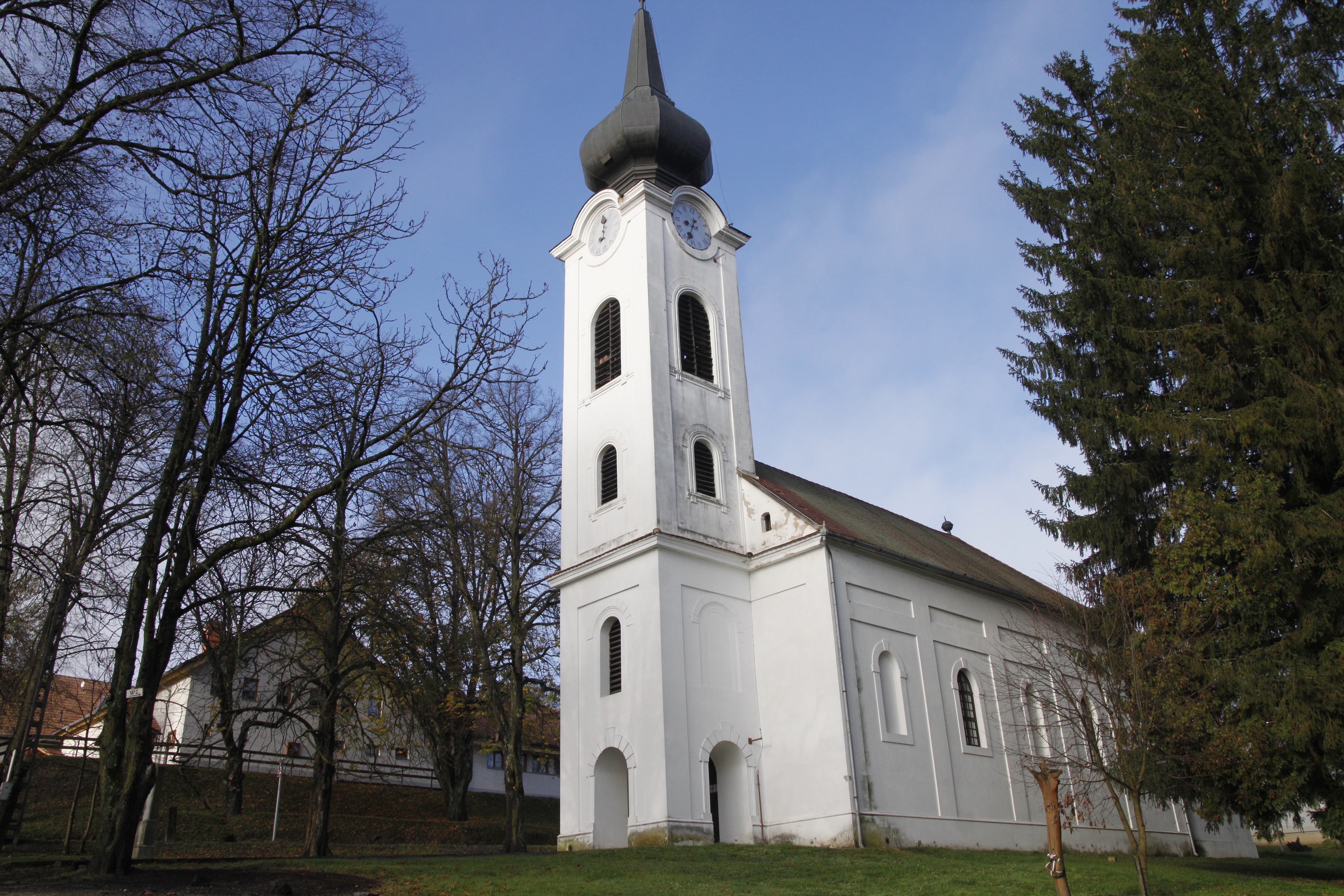
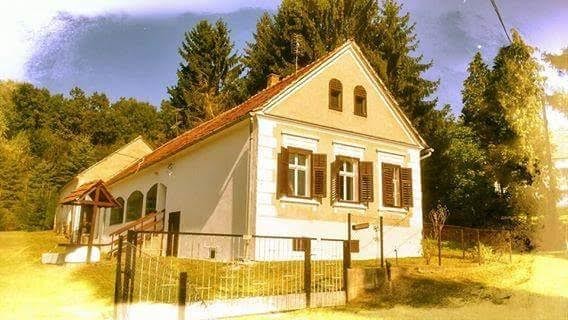
.jpg)
